First introduced in 1996 as the company’s entry-level sports car, the Porsche Boxster is now in its third generation, and it just received the GTS treatment with exclusive features and more power. Redesigned to include styling cues from the 911 and 918 Spyder, the third-gen Boxster also received a new, more rigid chassis, revised engine, and a small weight reduction compared to its predecessor. The engine lineup included three flat-six units at first, but this changed in 2016 when a comprehensive facelift replaced them with smaller, turbocharged flat-four powerplants. The update also brought a new name, with the "718" denomination added to the "Boxster" badge as a tribute to Porsche's iconic race car from the late 1950s. With both the base model and the higher-performance S version already in showrooms, Porsche just expanded the Boxster family with the higher performance GTS version.
Spotted testing in the wild since 2016, the GTS is one of two higher performance versions of the Boxster. While not as aggressive and exclusive as the Spyder, the GTS is indeed a significant upgrade over the Boxster S. Lighter, more powerful, and fitted with extra gear; it gives owner access to more speed and quicker sprint times. When GTS prototypes were first spotted on the road, the first question that came to mind was whether or not the nameplate would also make a switch to turbocharged engines. As it turns out, the naturally aspirated Porsche is slowly dying, and the Boxster GTS also embraced forced induction. How does it compare to the previous model? Find out in the review below.
Updated 2-11-2019: We've updated this review with fresh images of the 2019 Porsche 718 Boxster GTS taken at the 2019 Chicago Auto Show. Check them out in the gallery below!
2018 Porsche 718 Boxster GTS
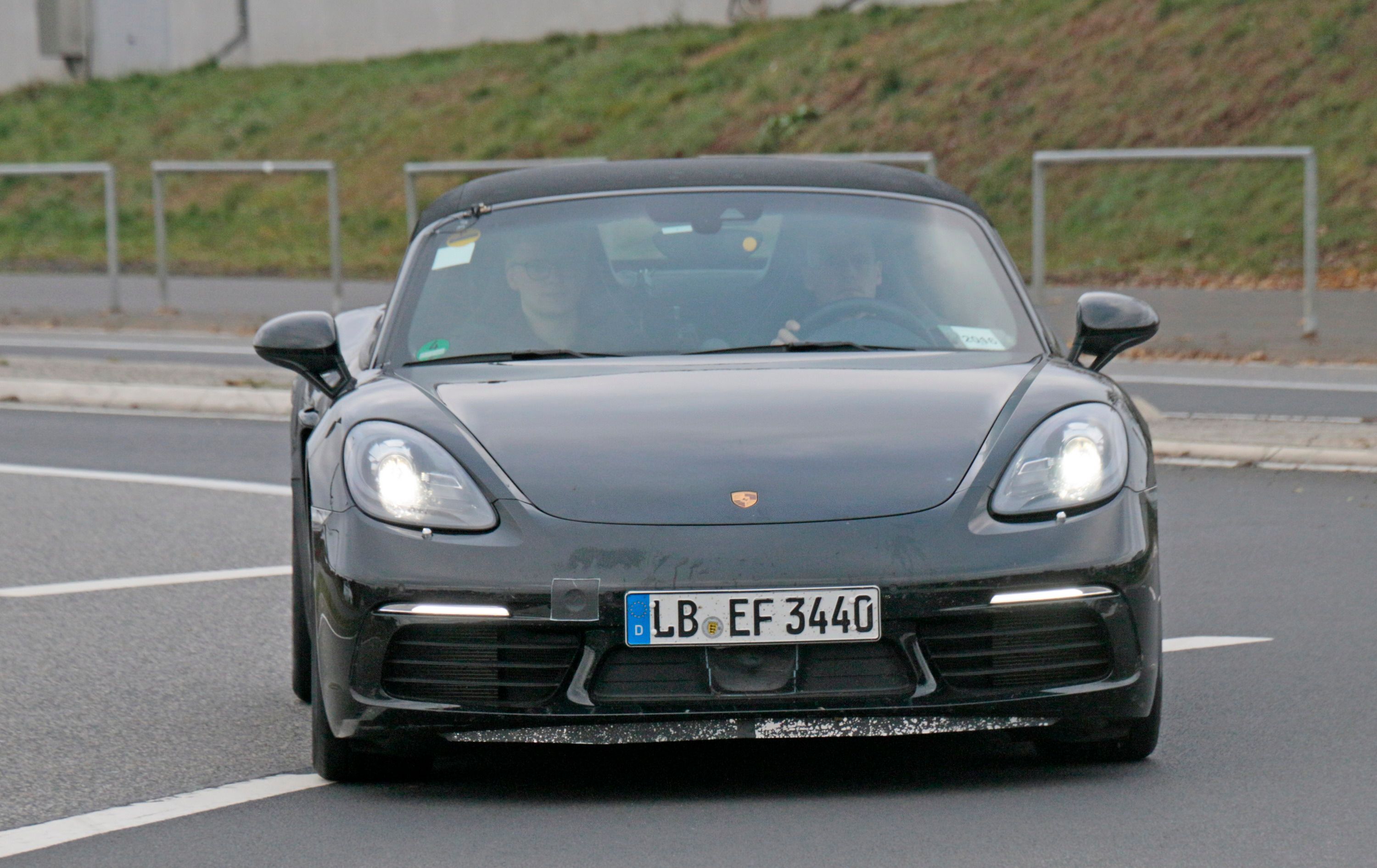

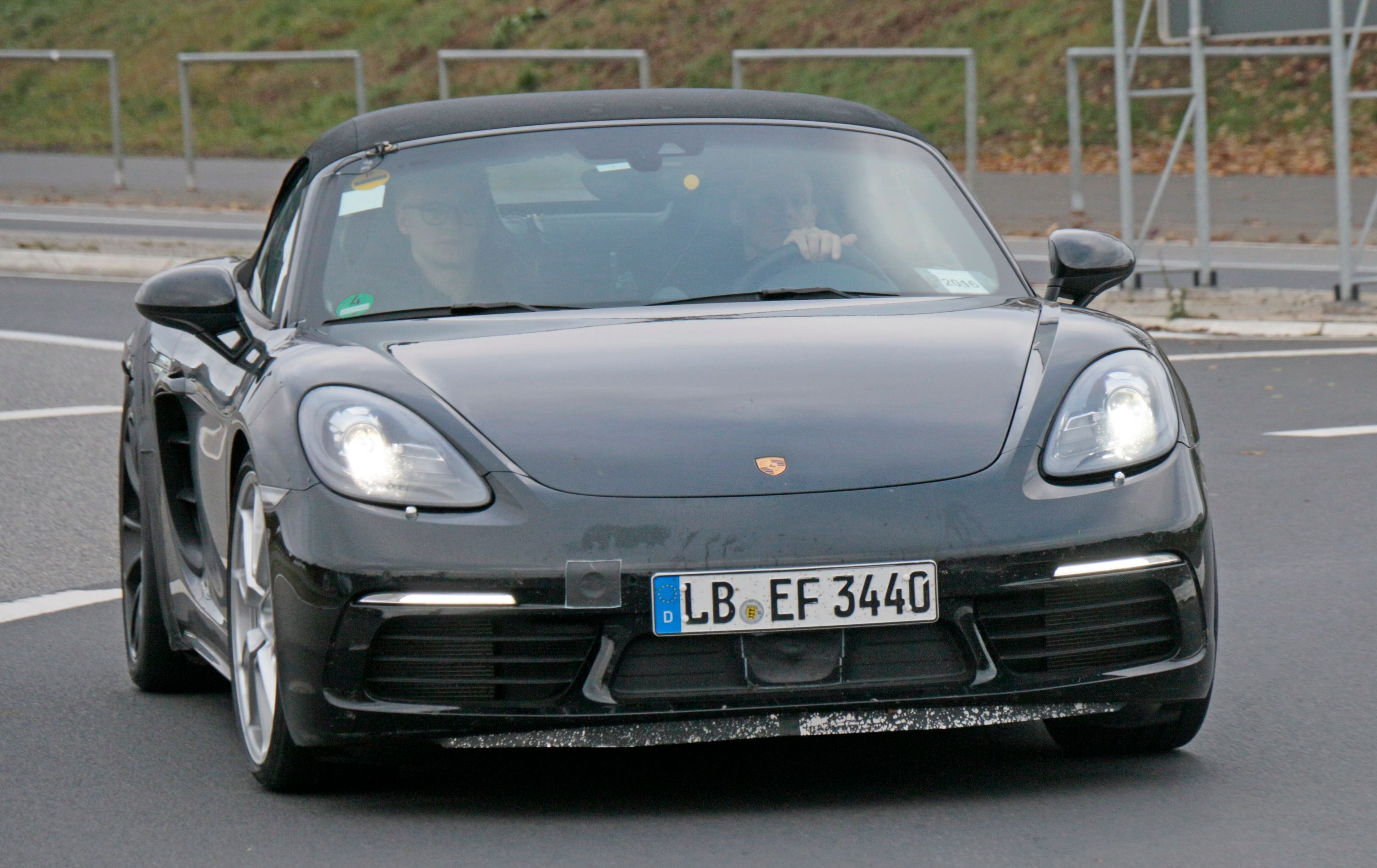
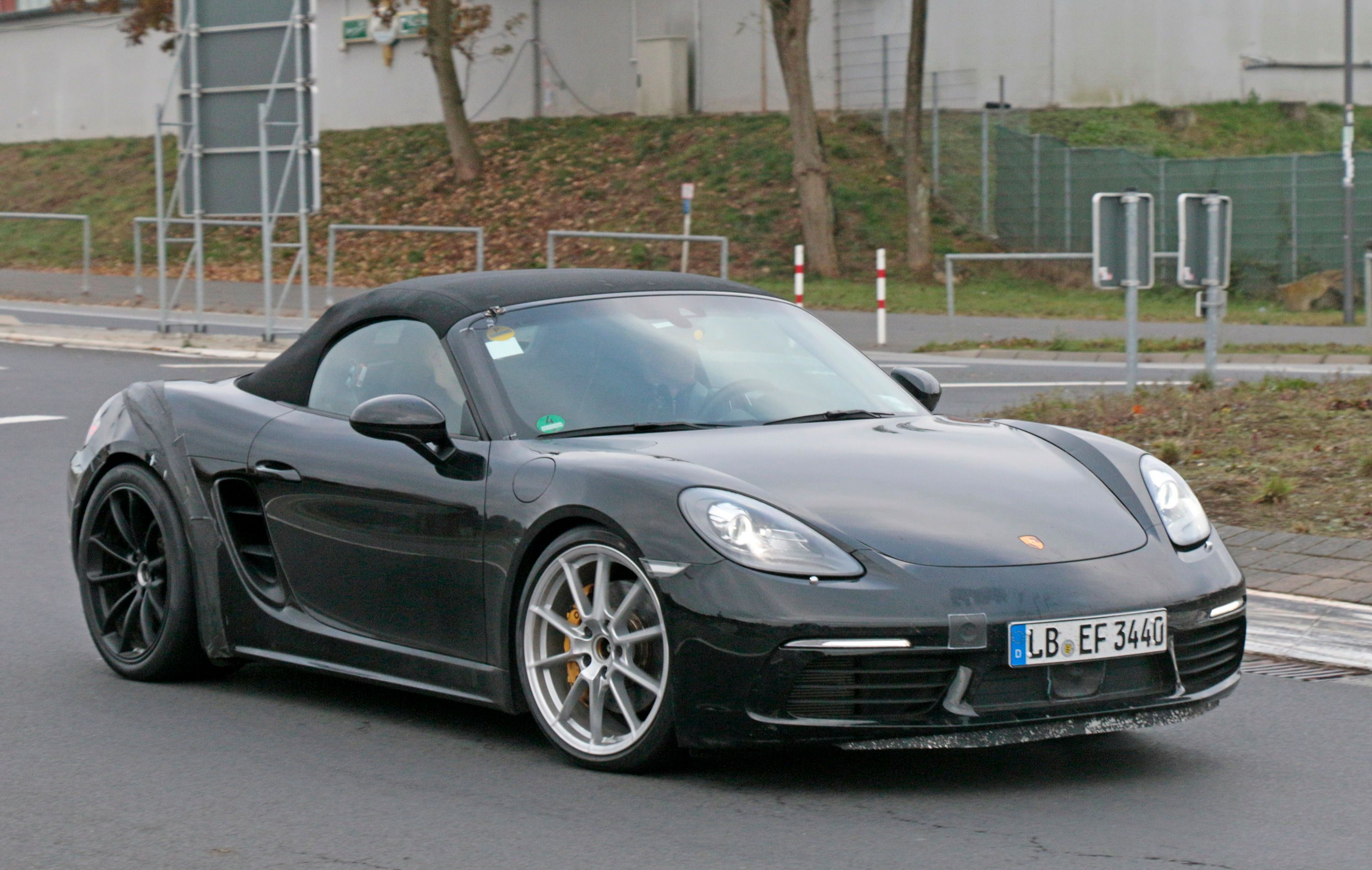
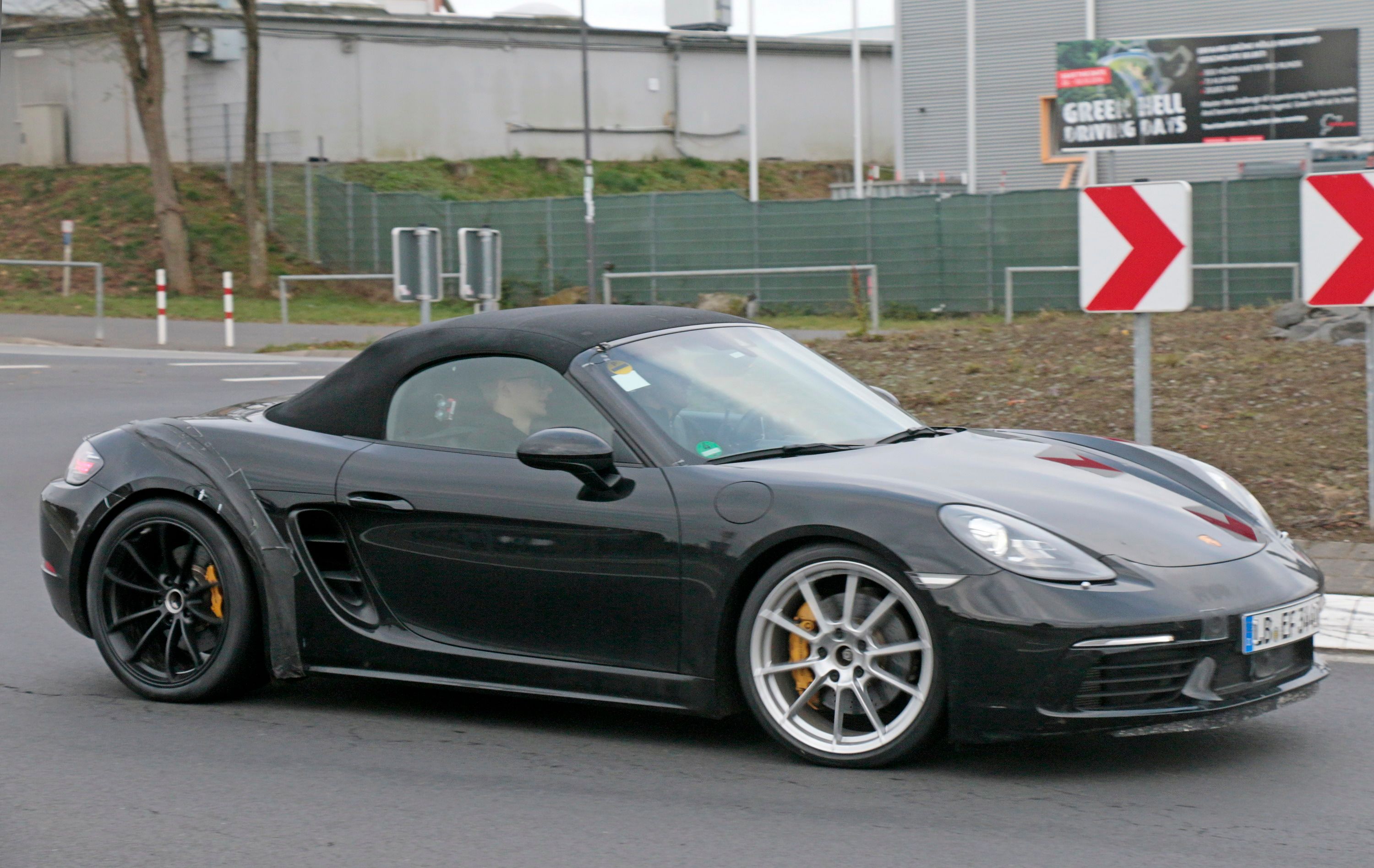
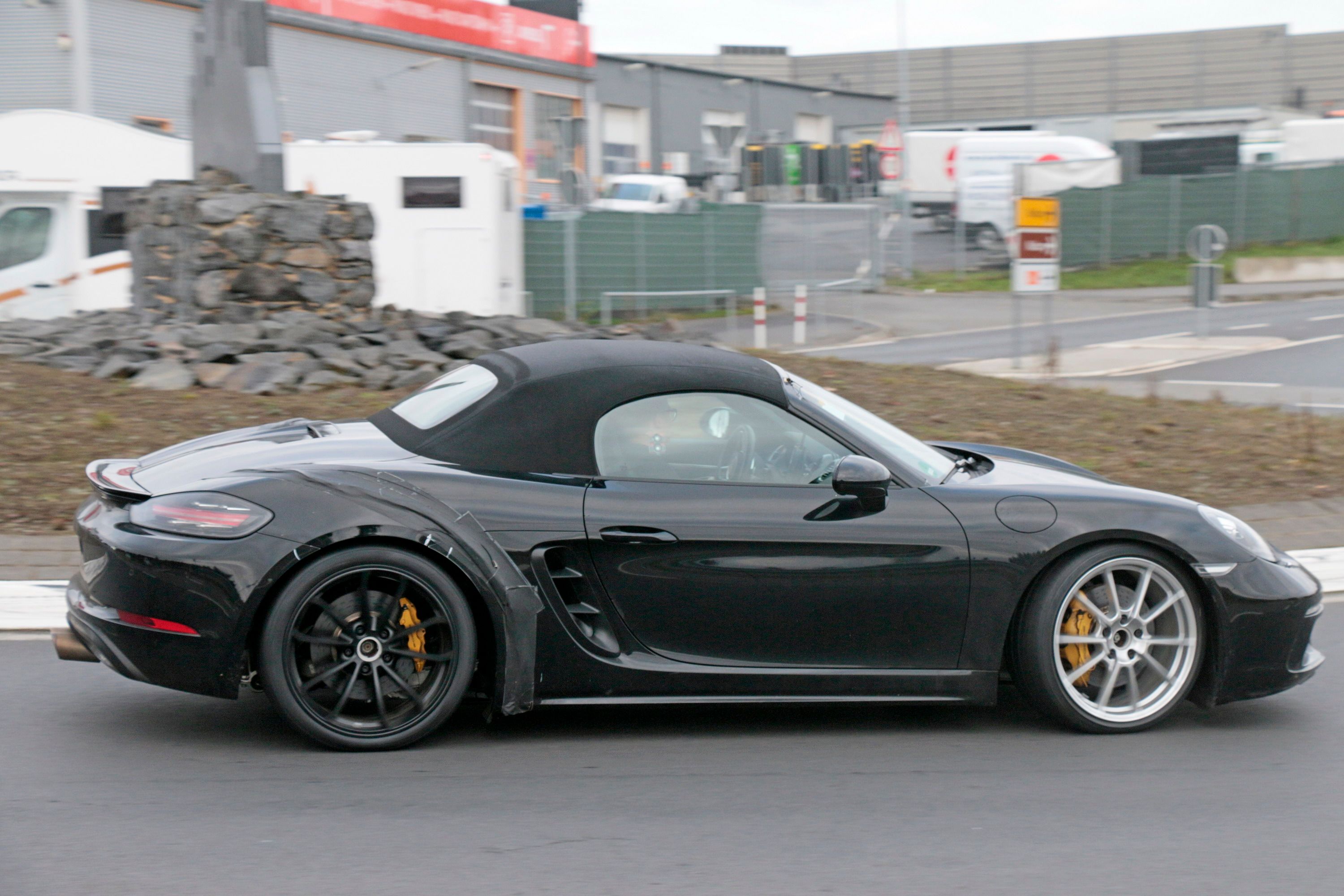
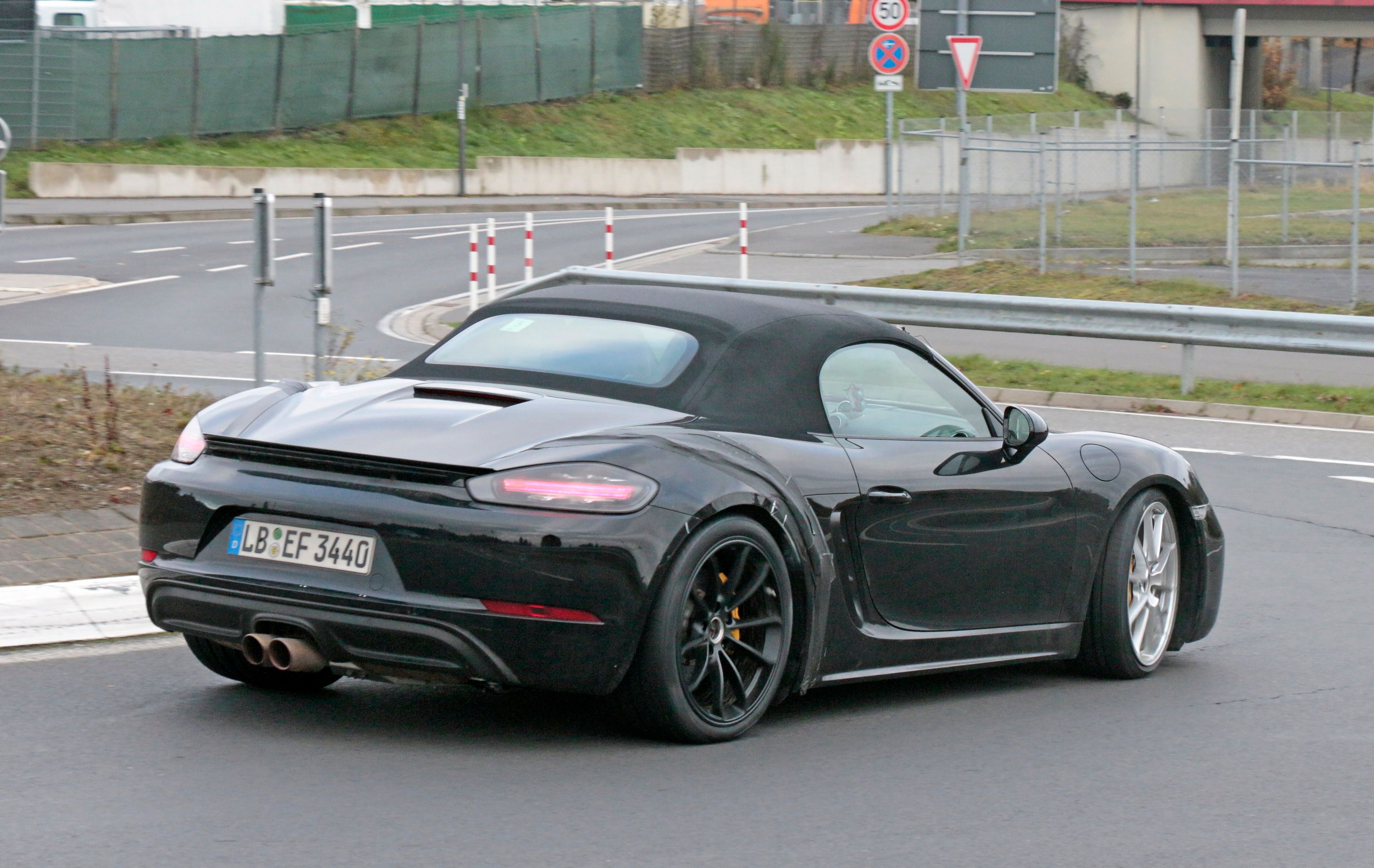
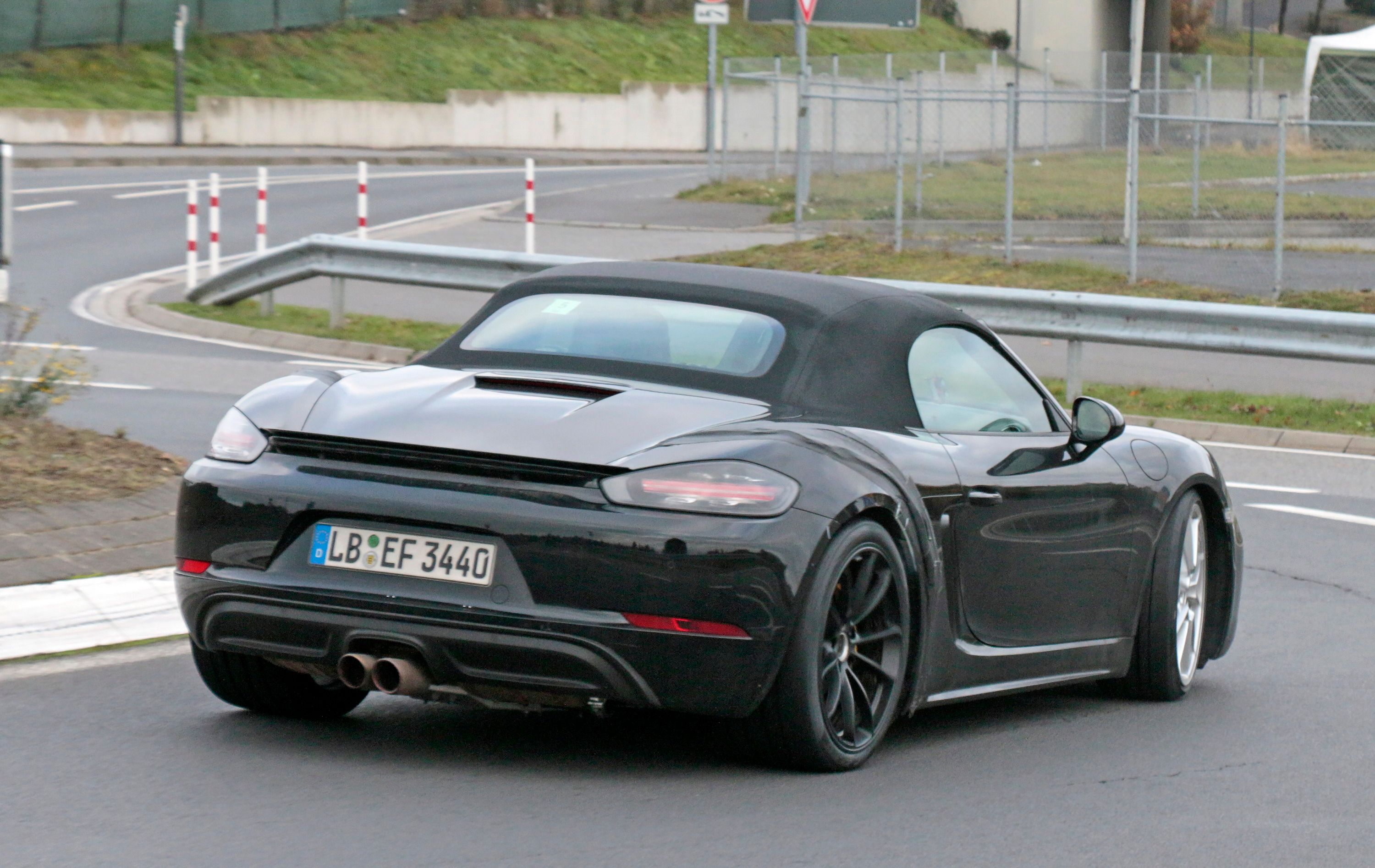
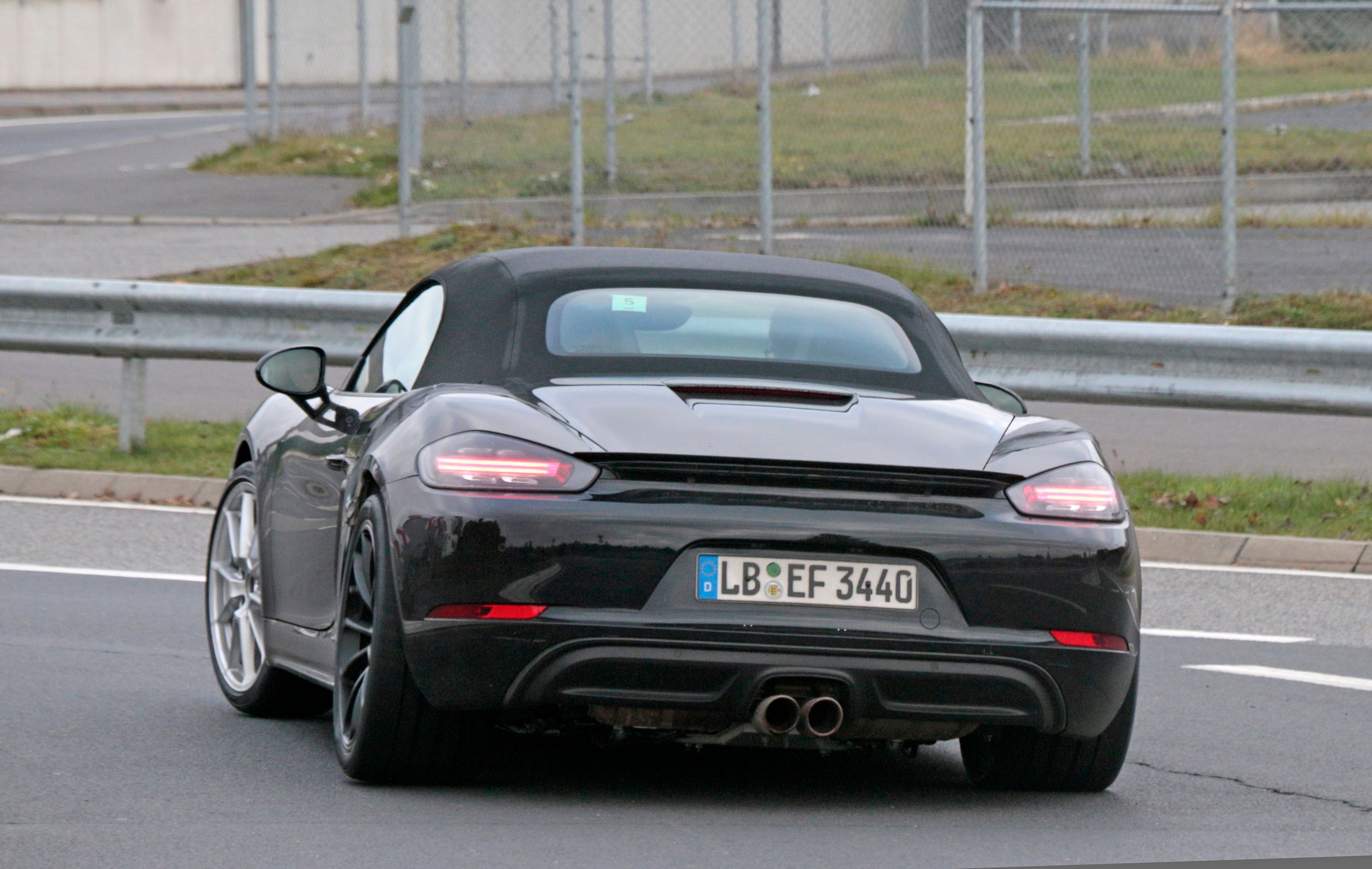
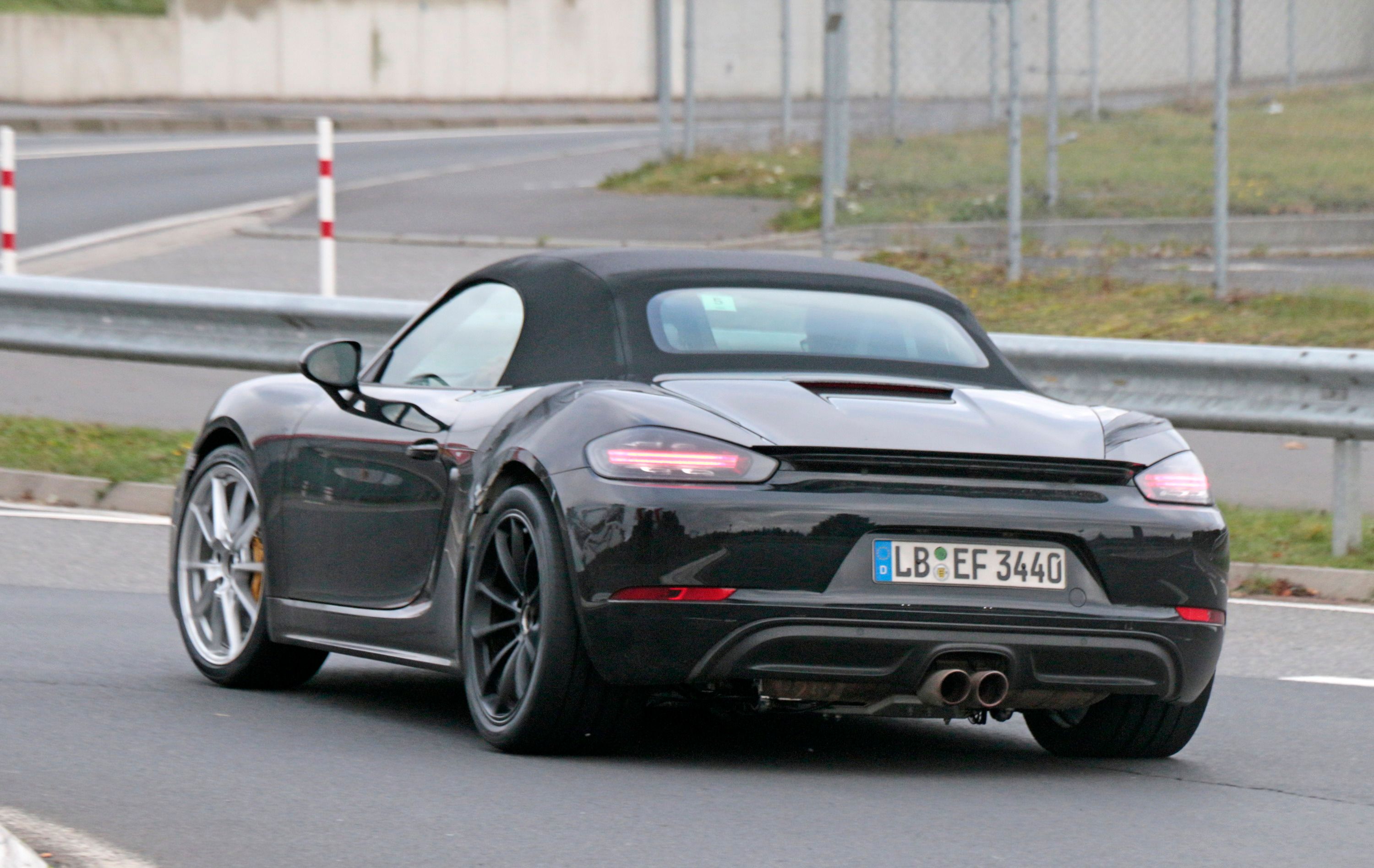
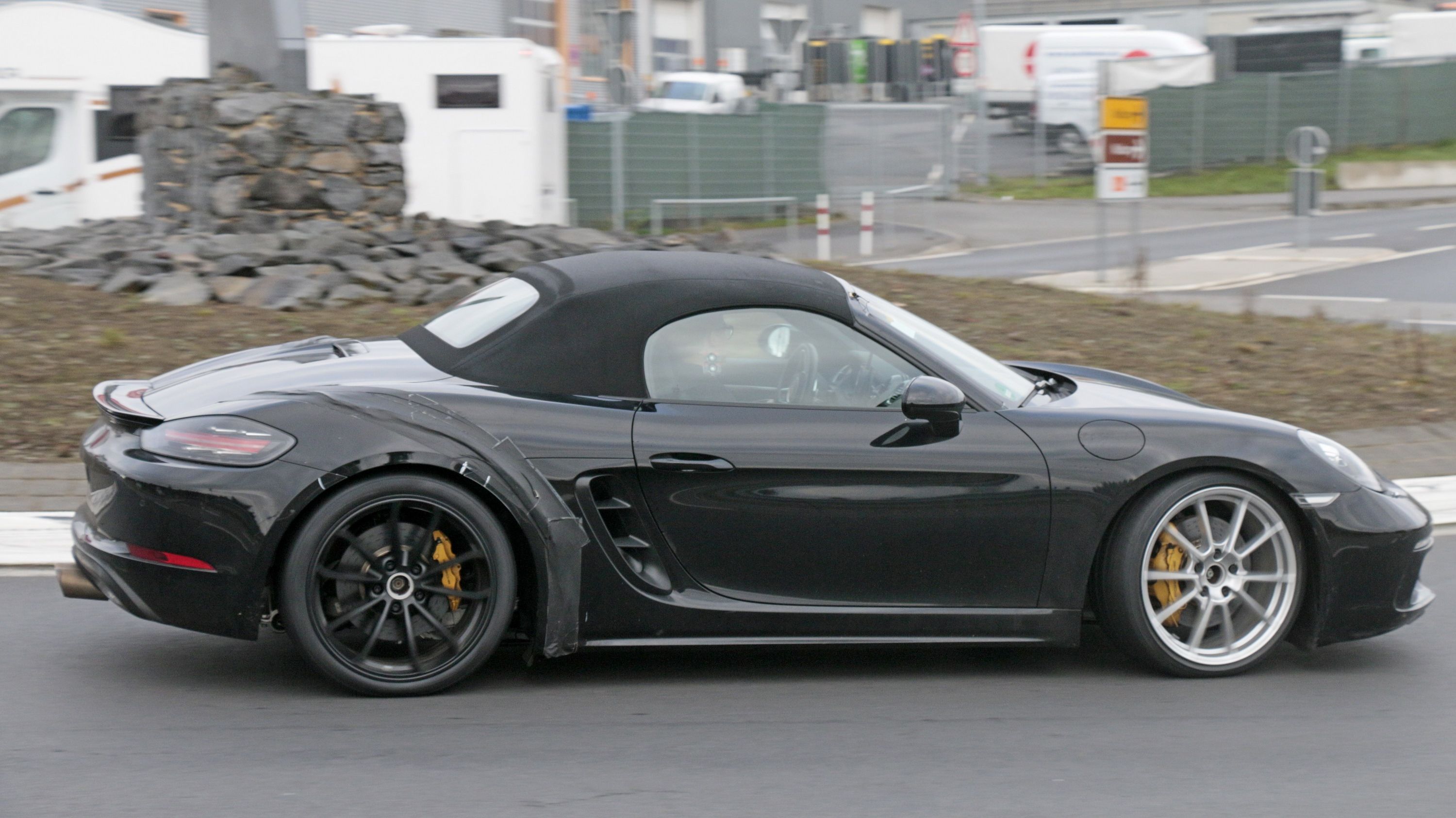
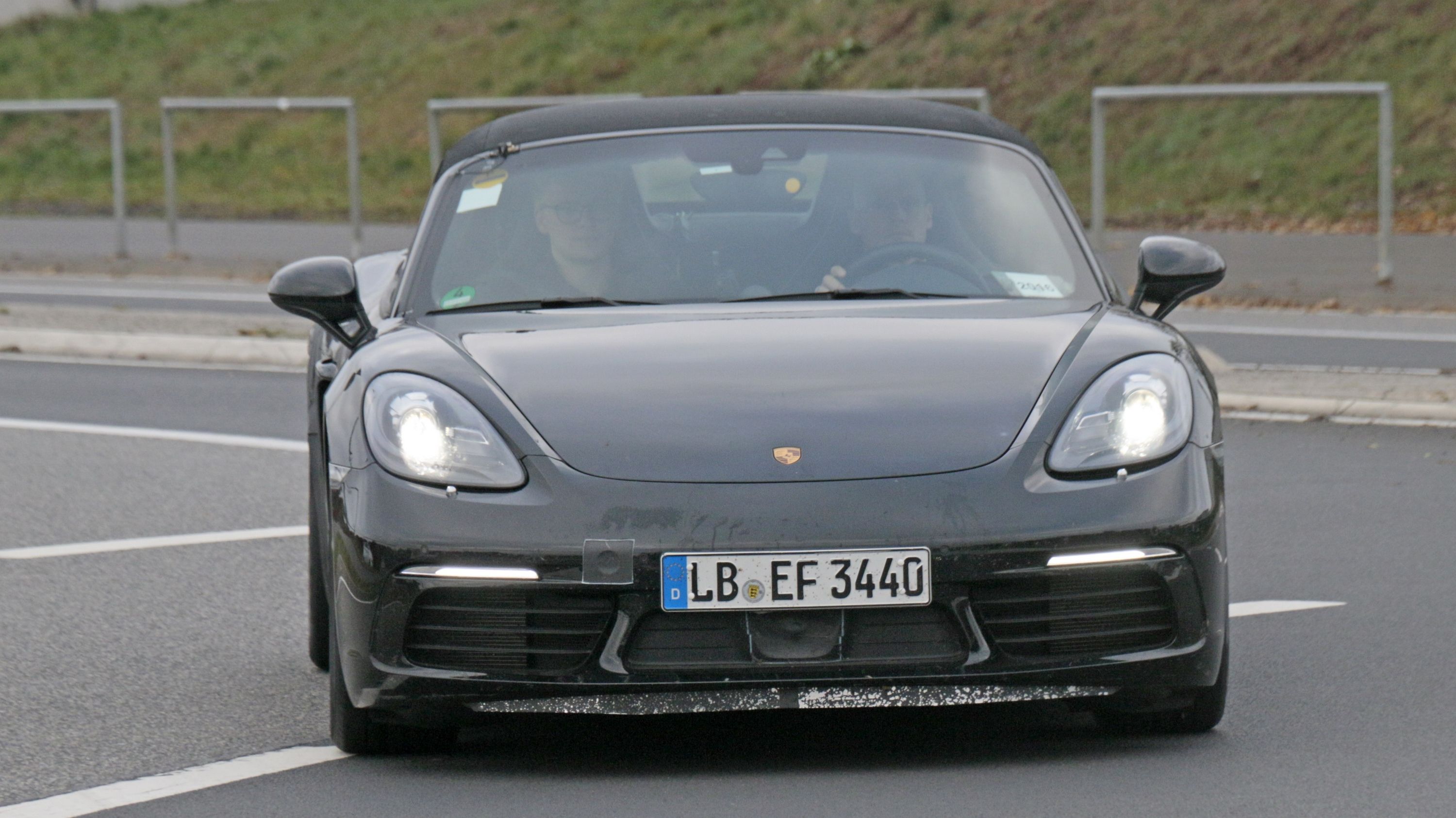
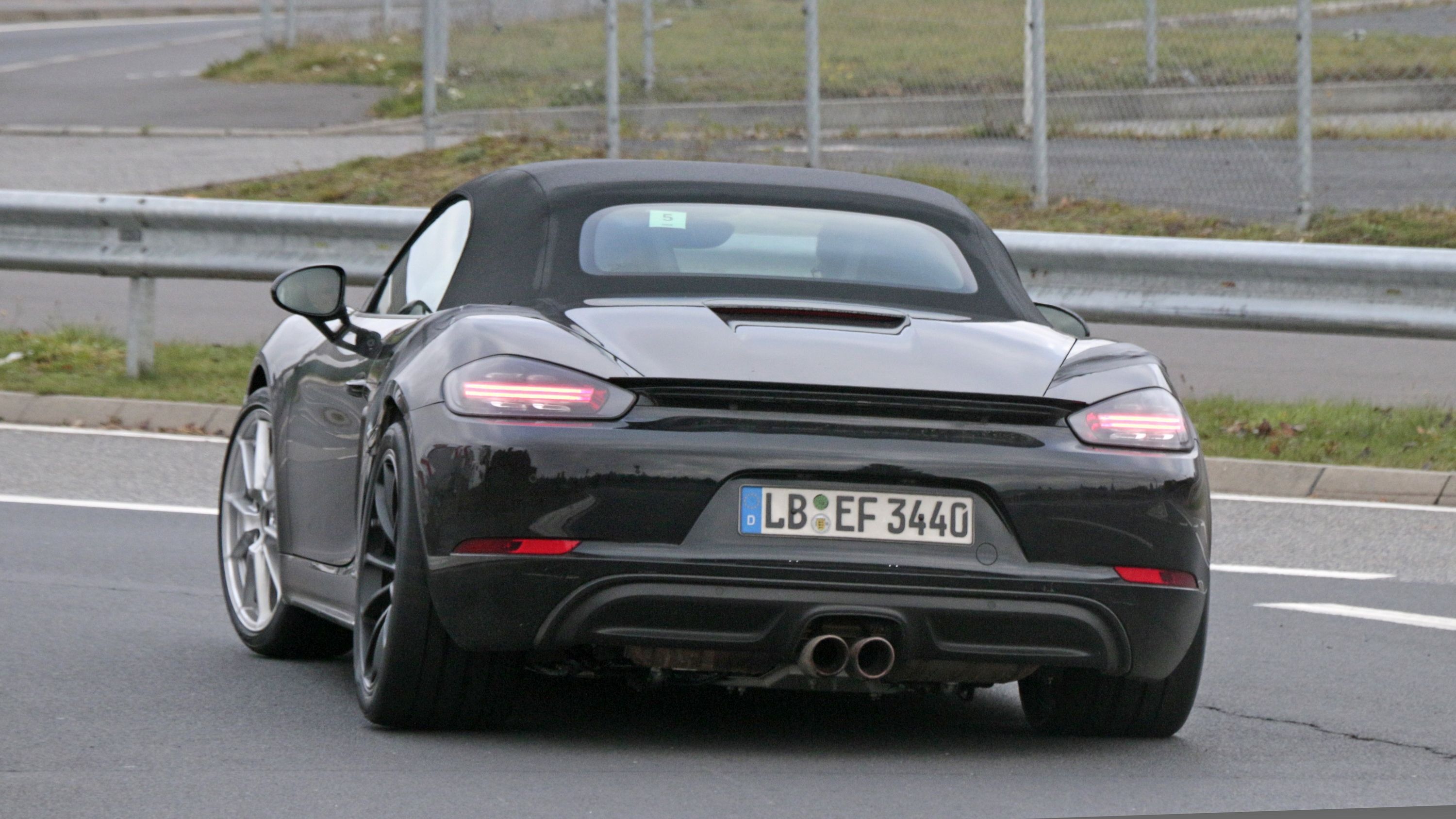
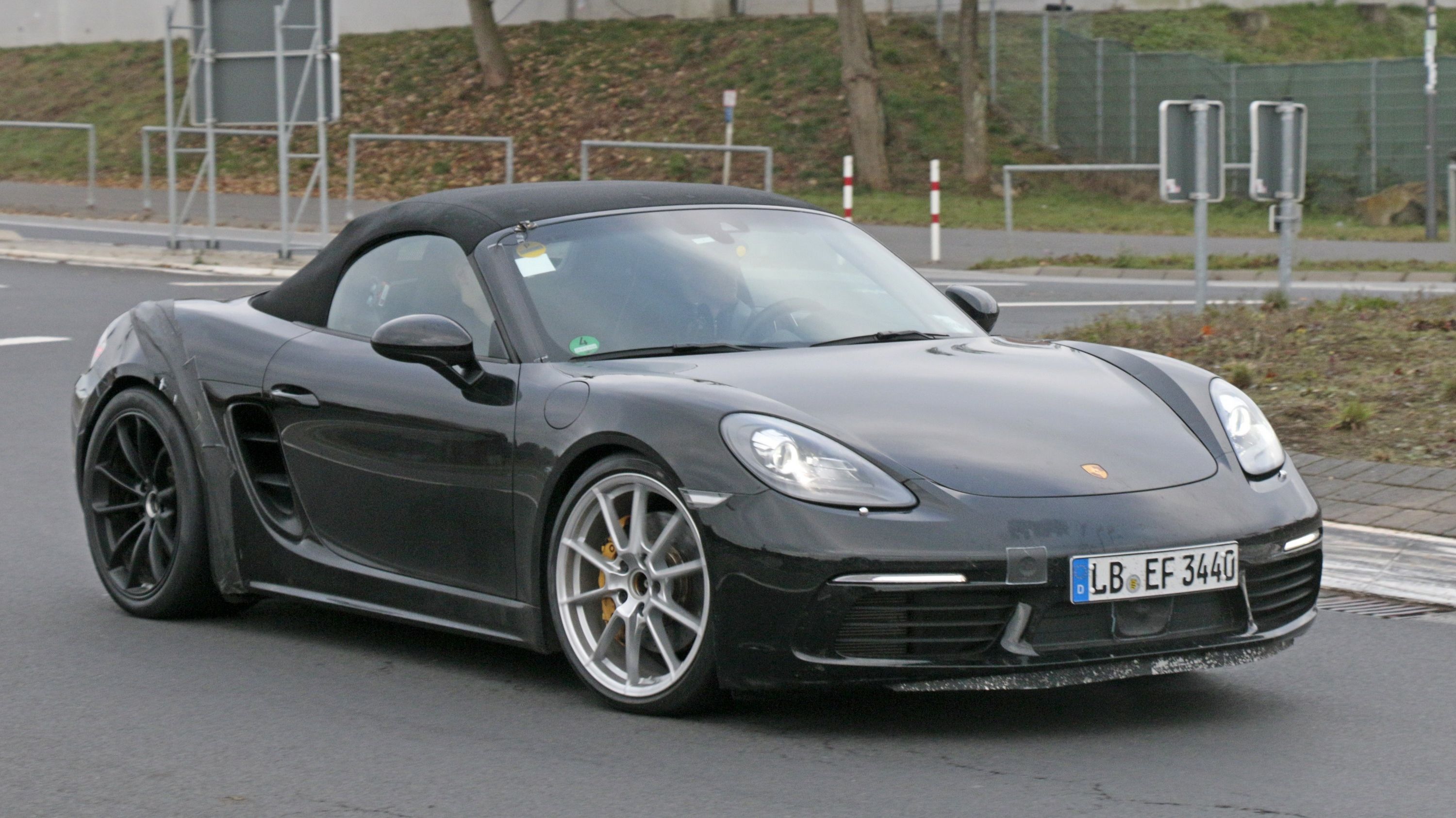
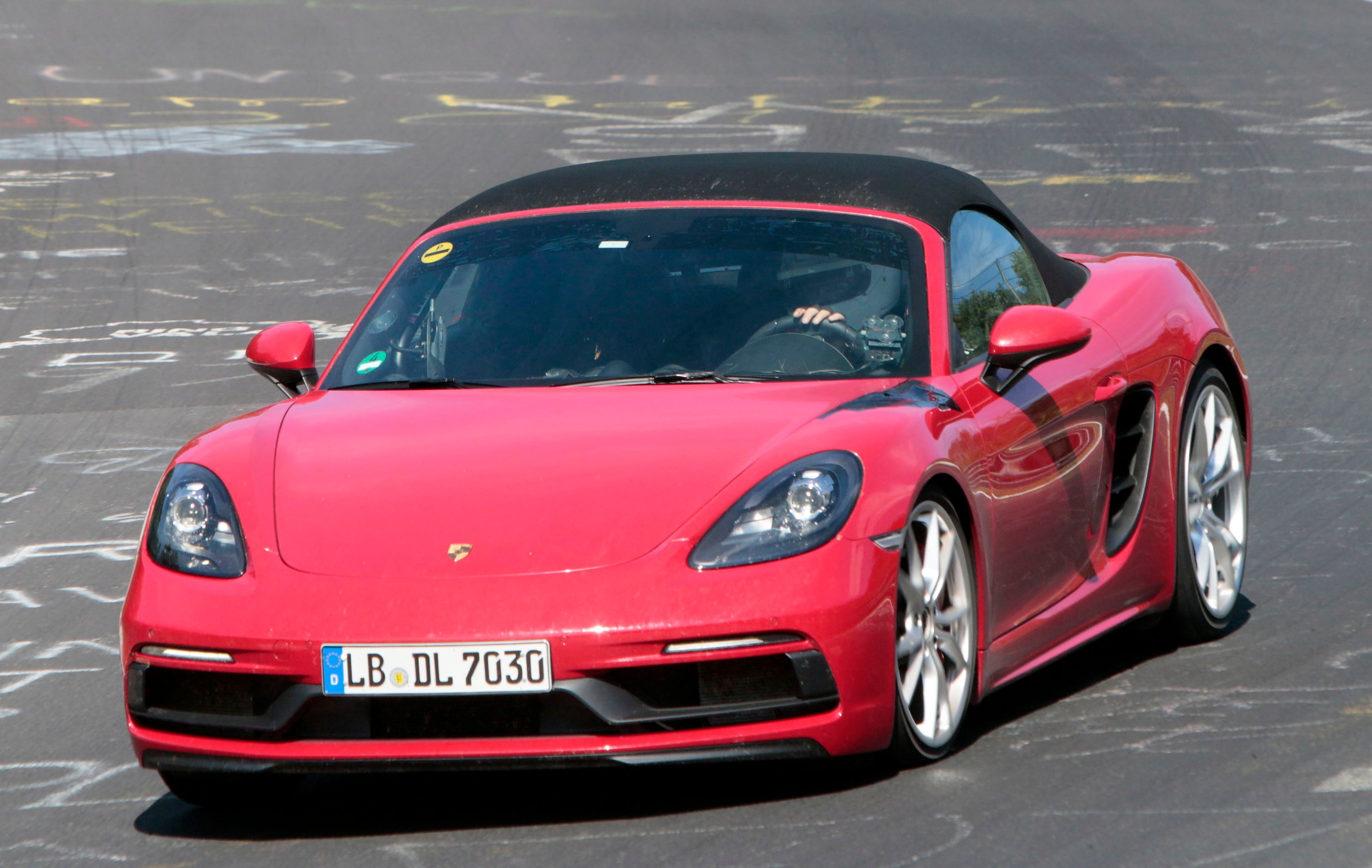
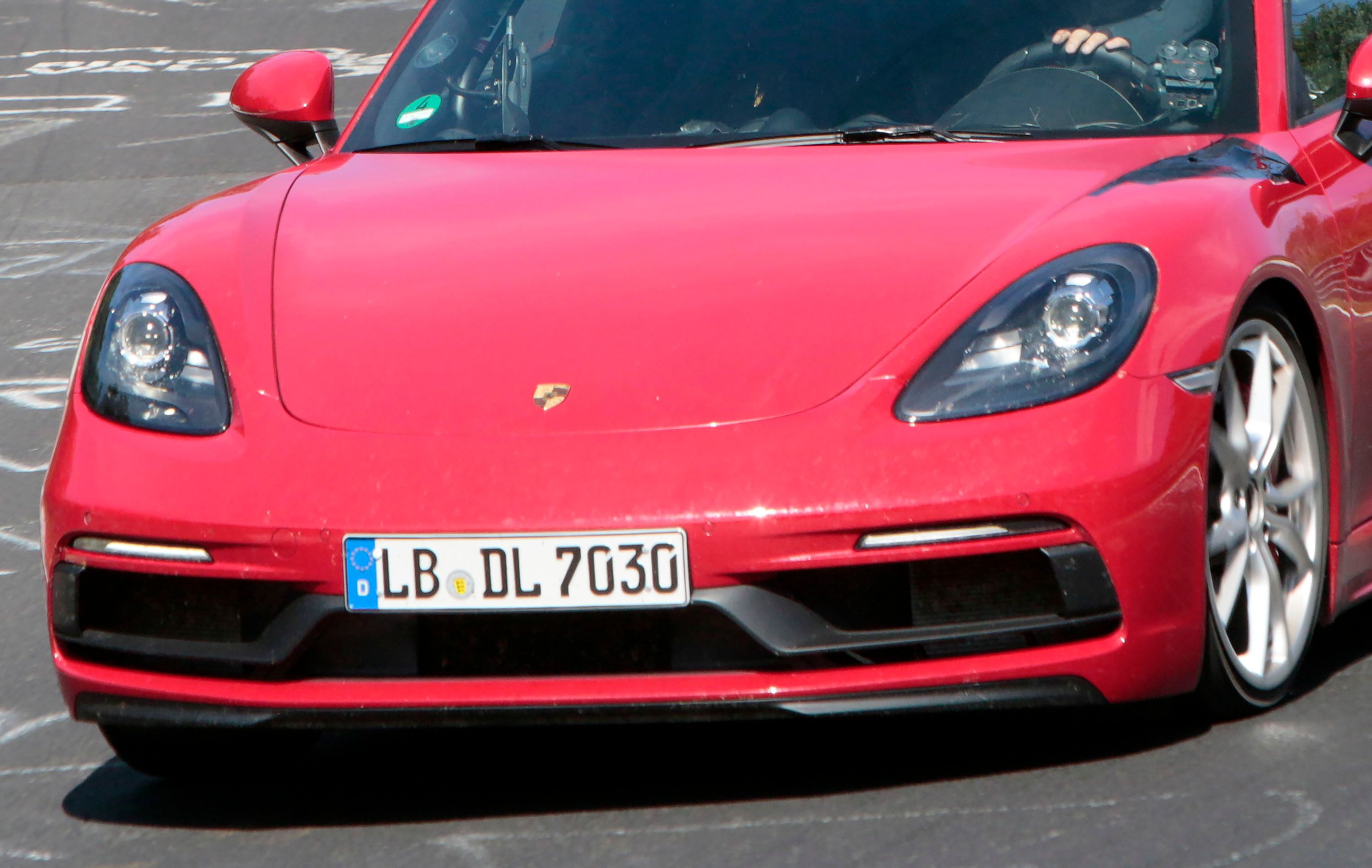
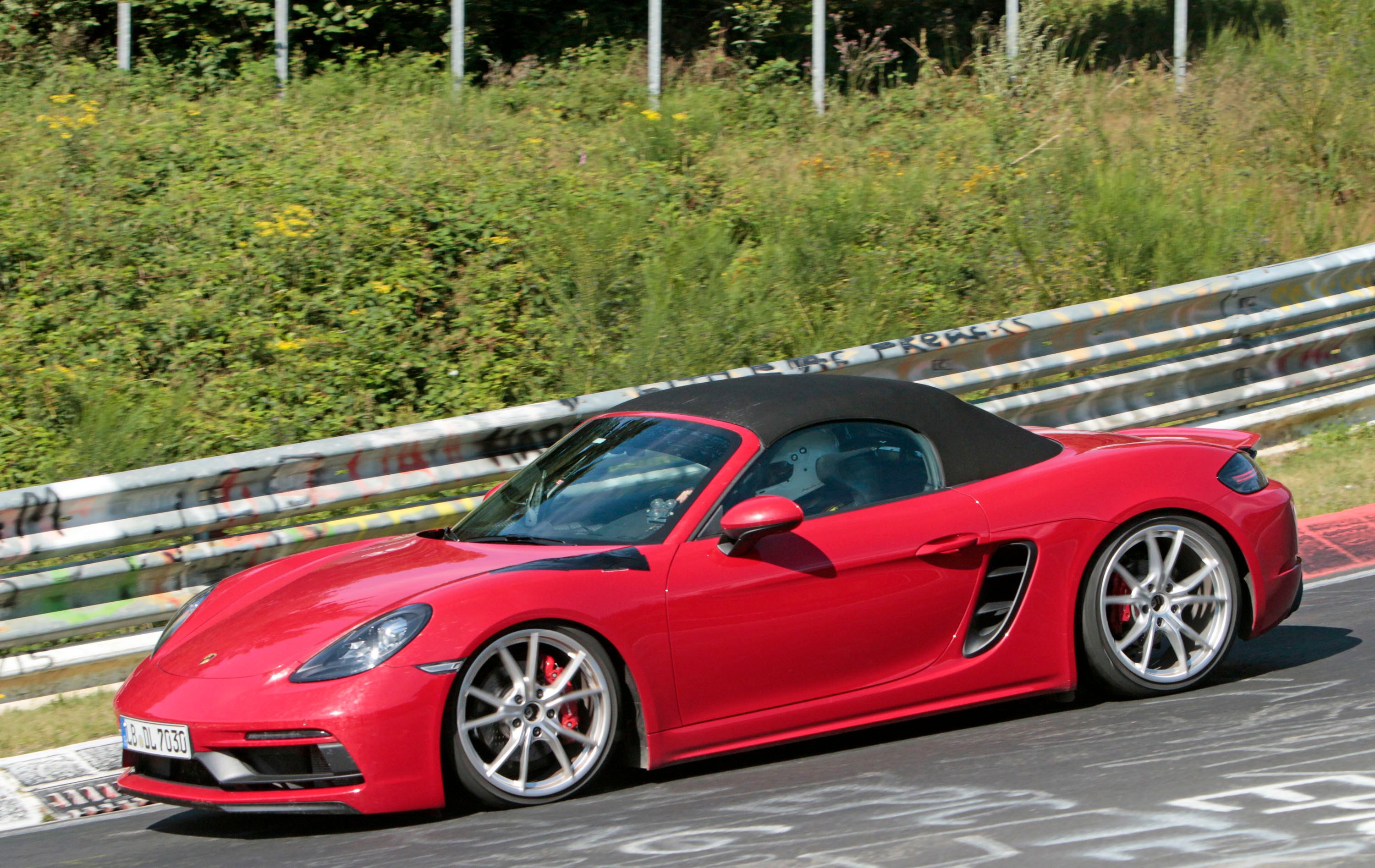
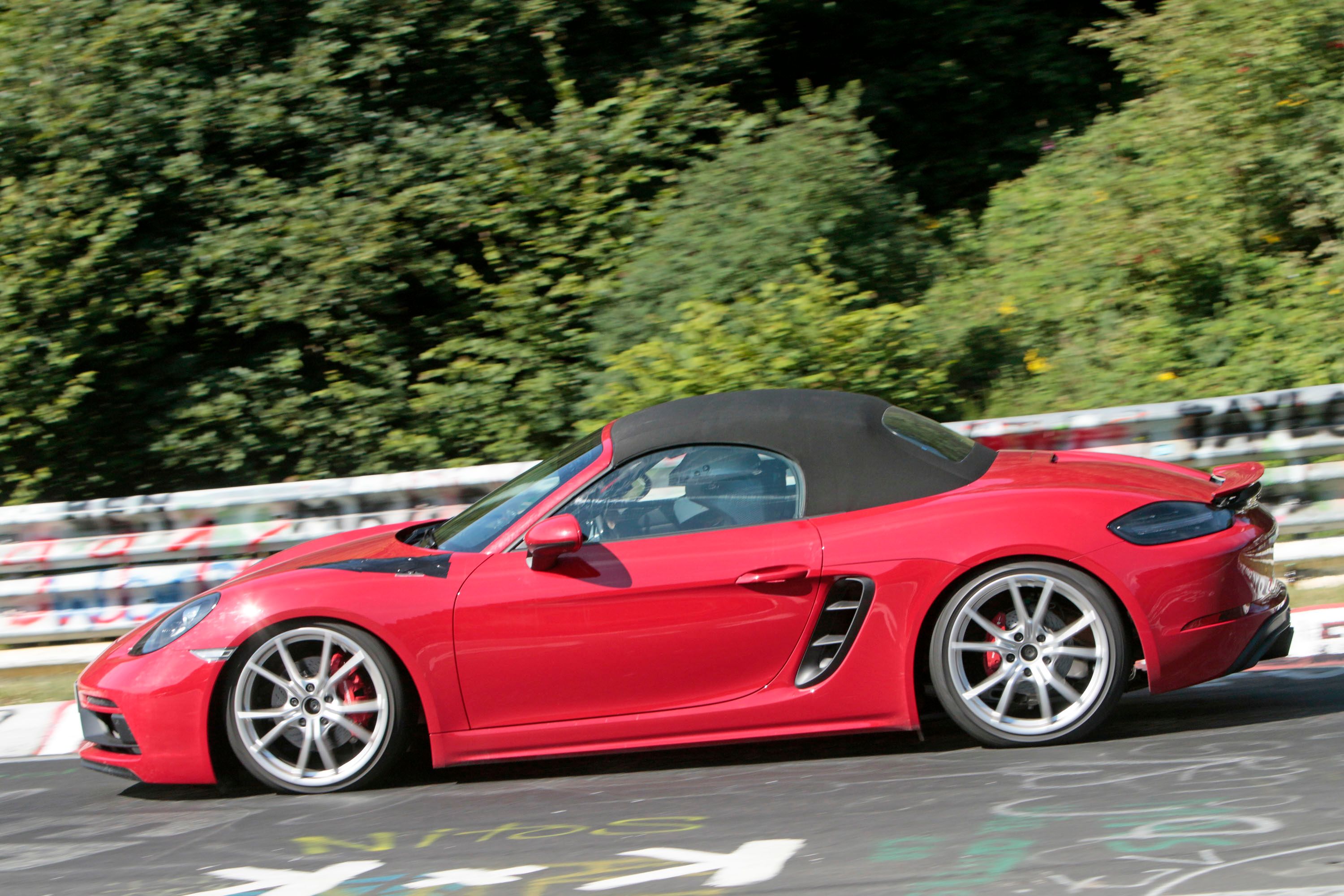
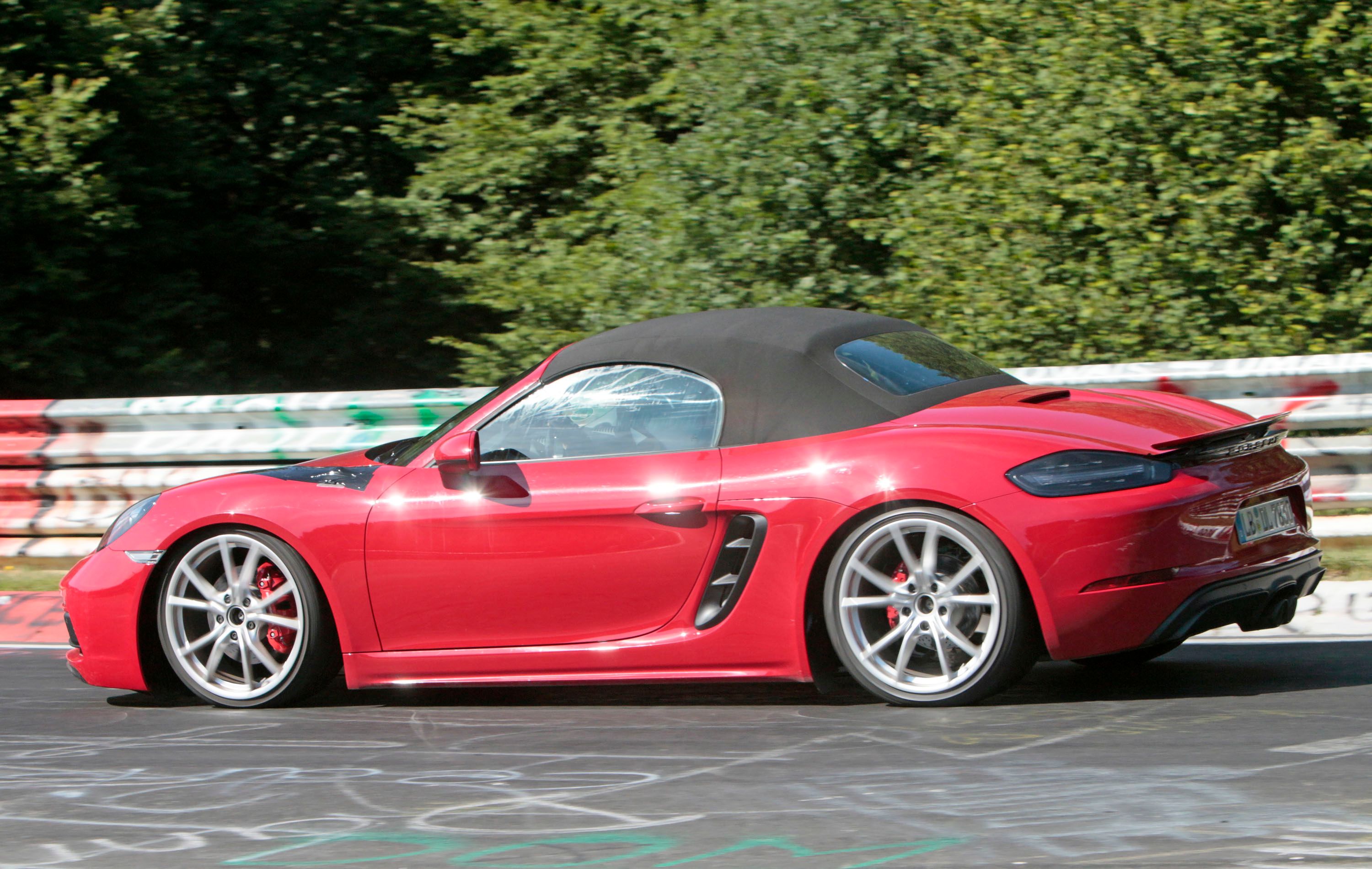
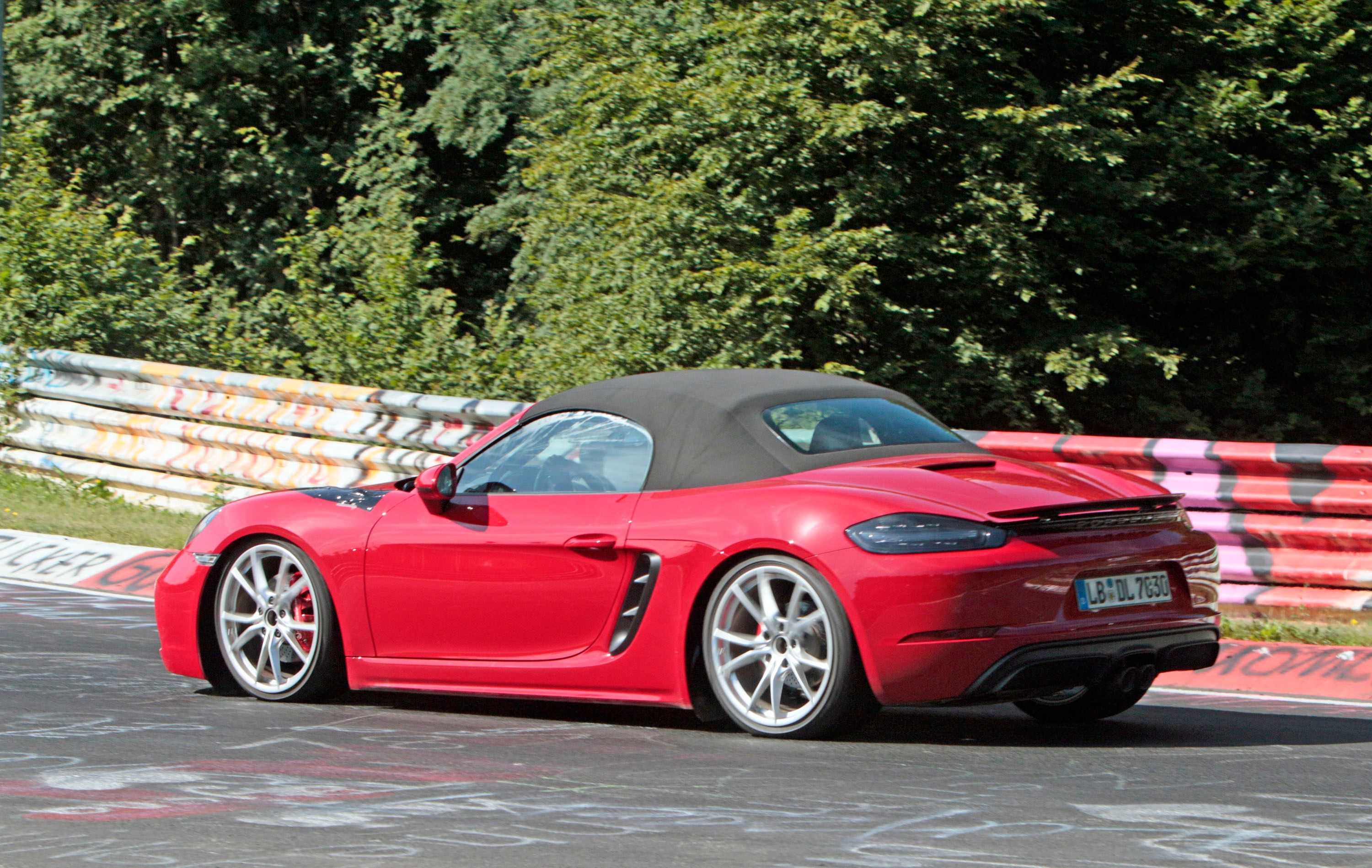
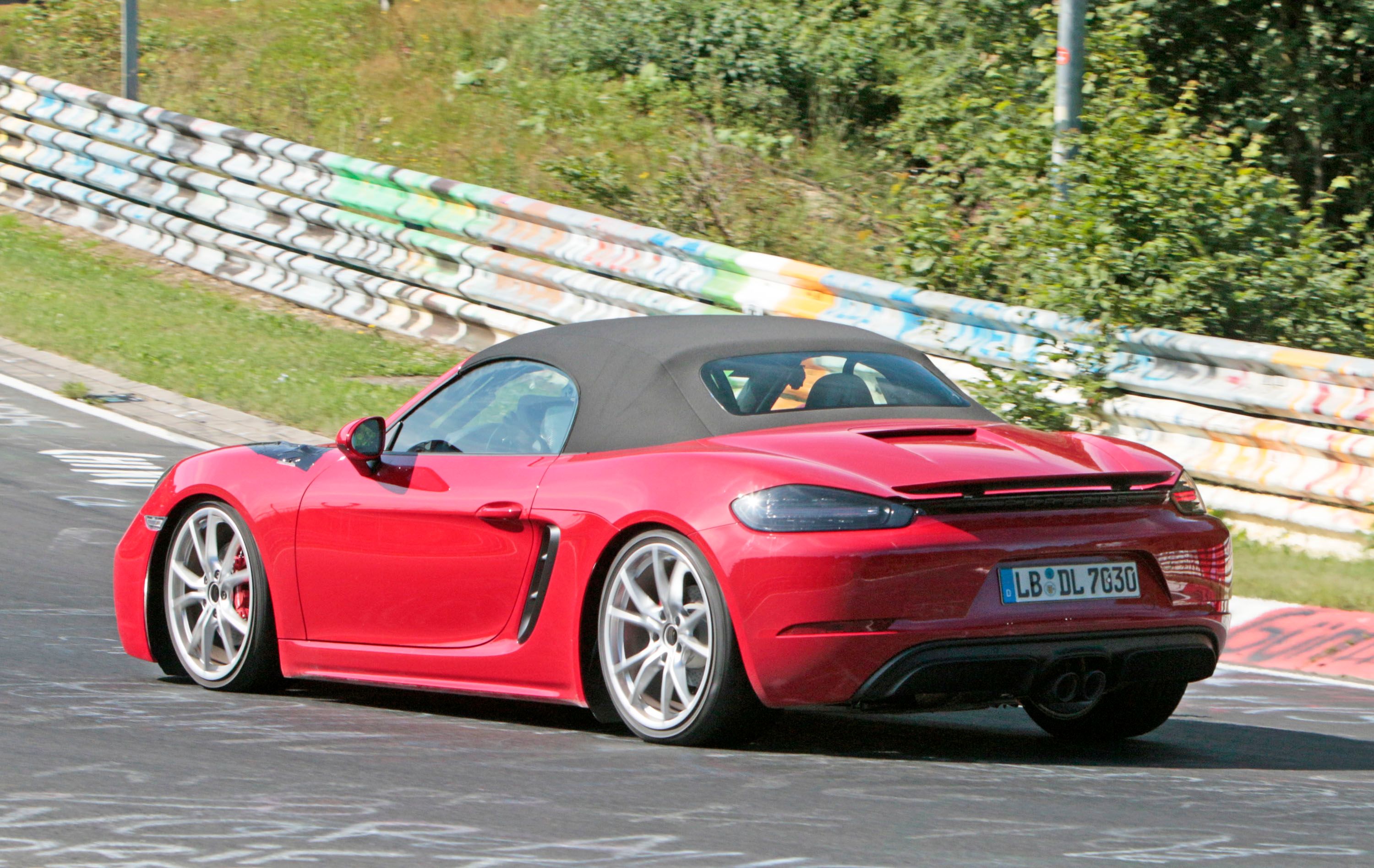
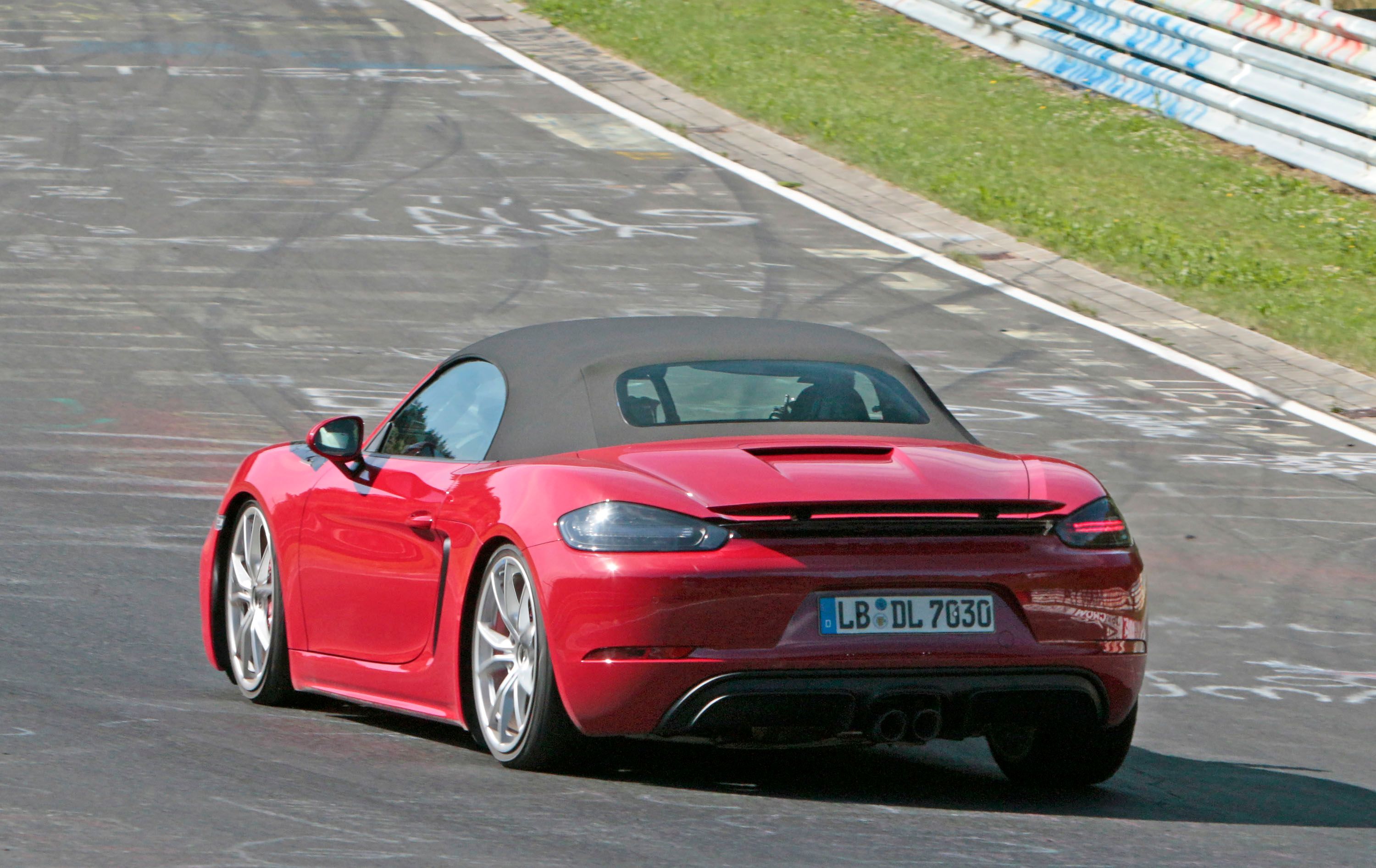
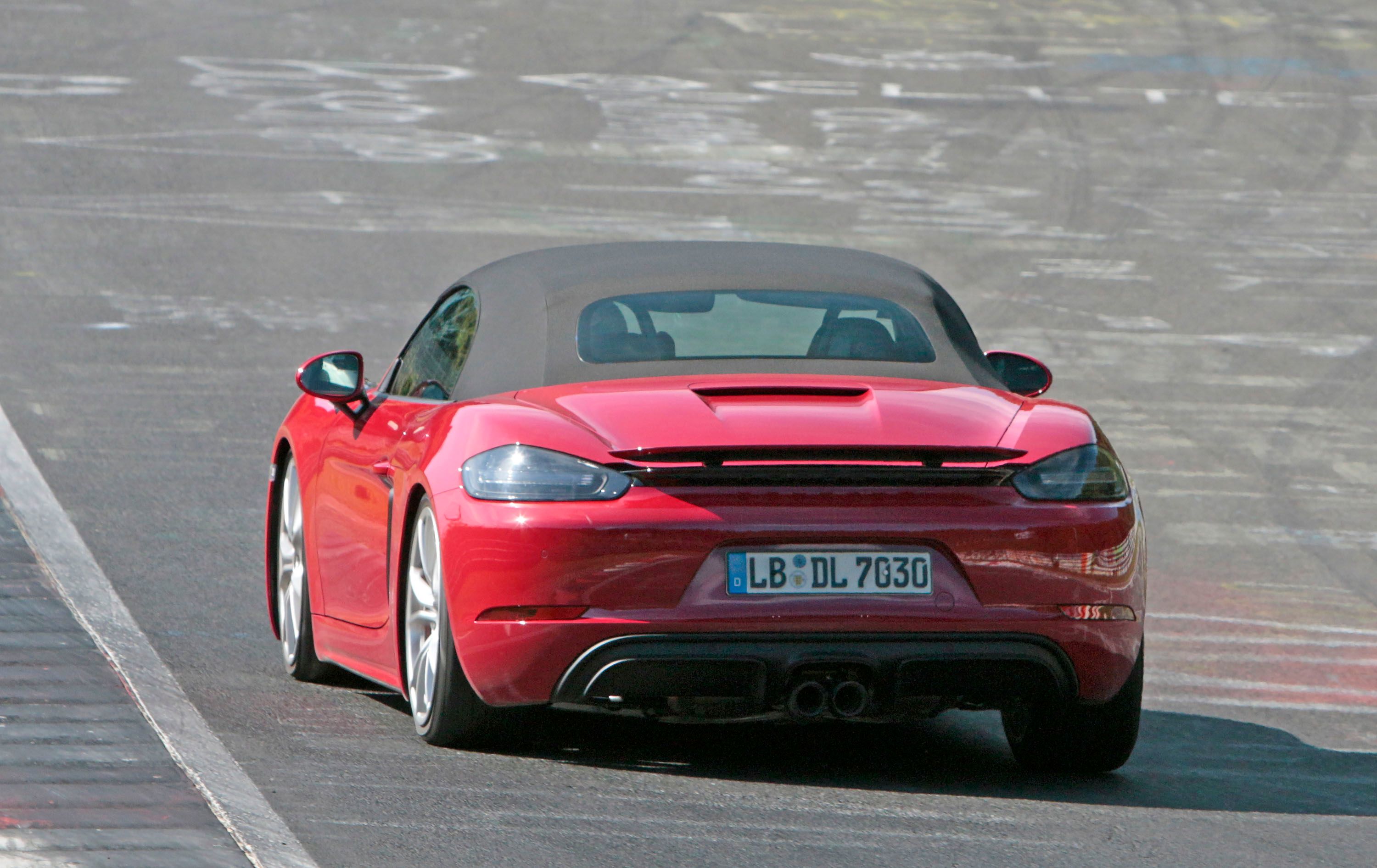
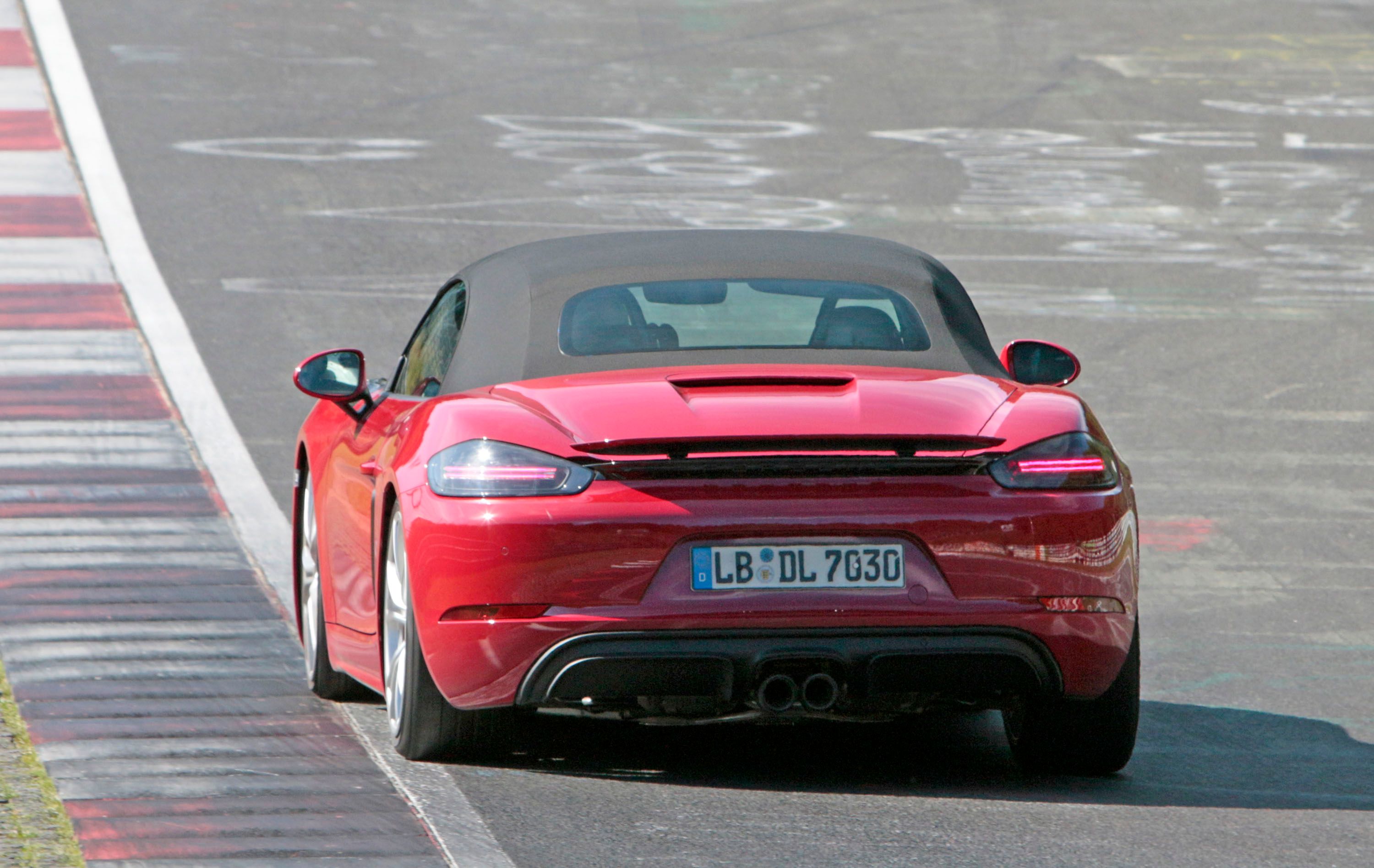
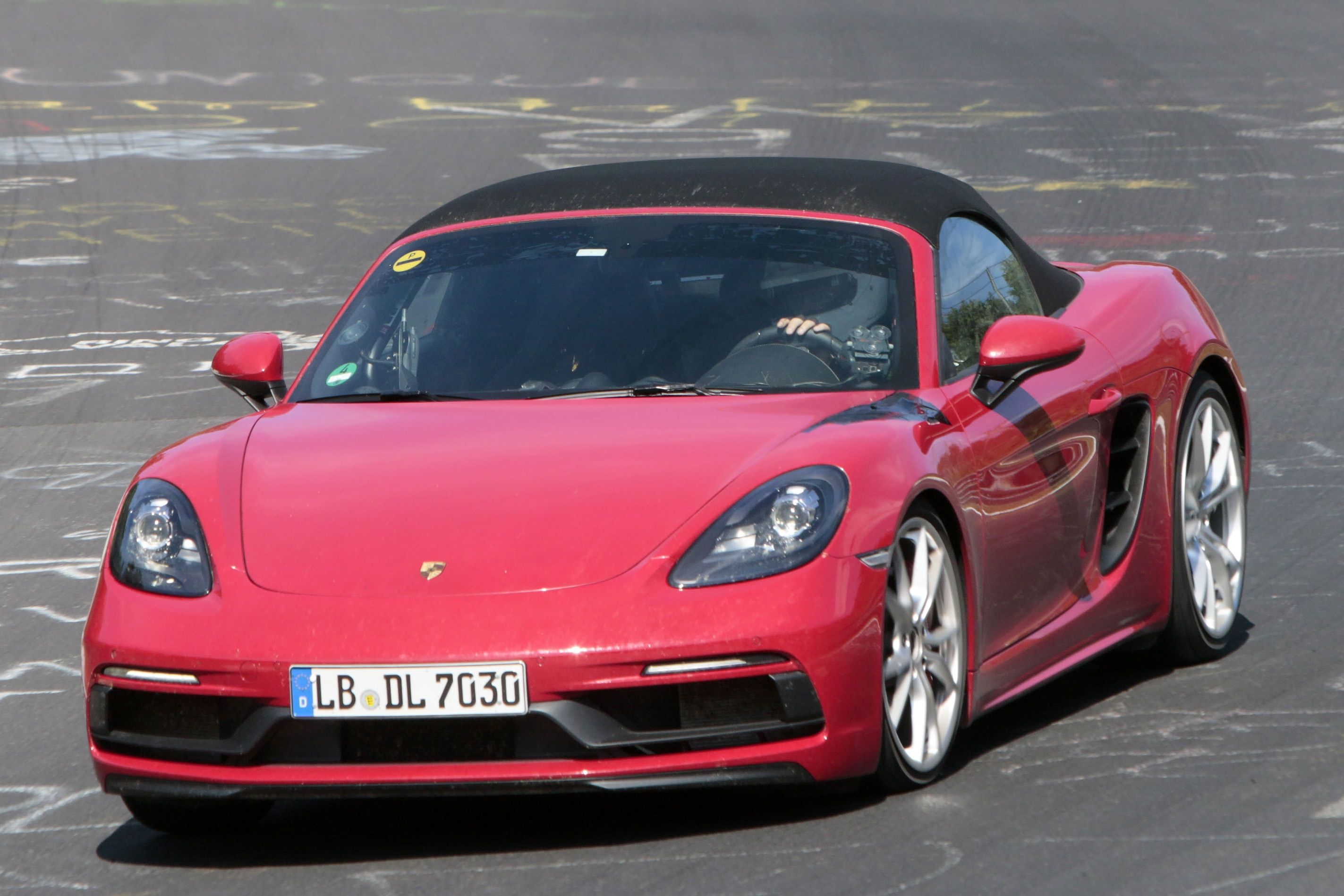
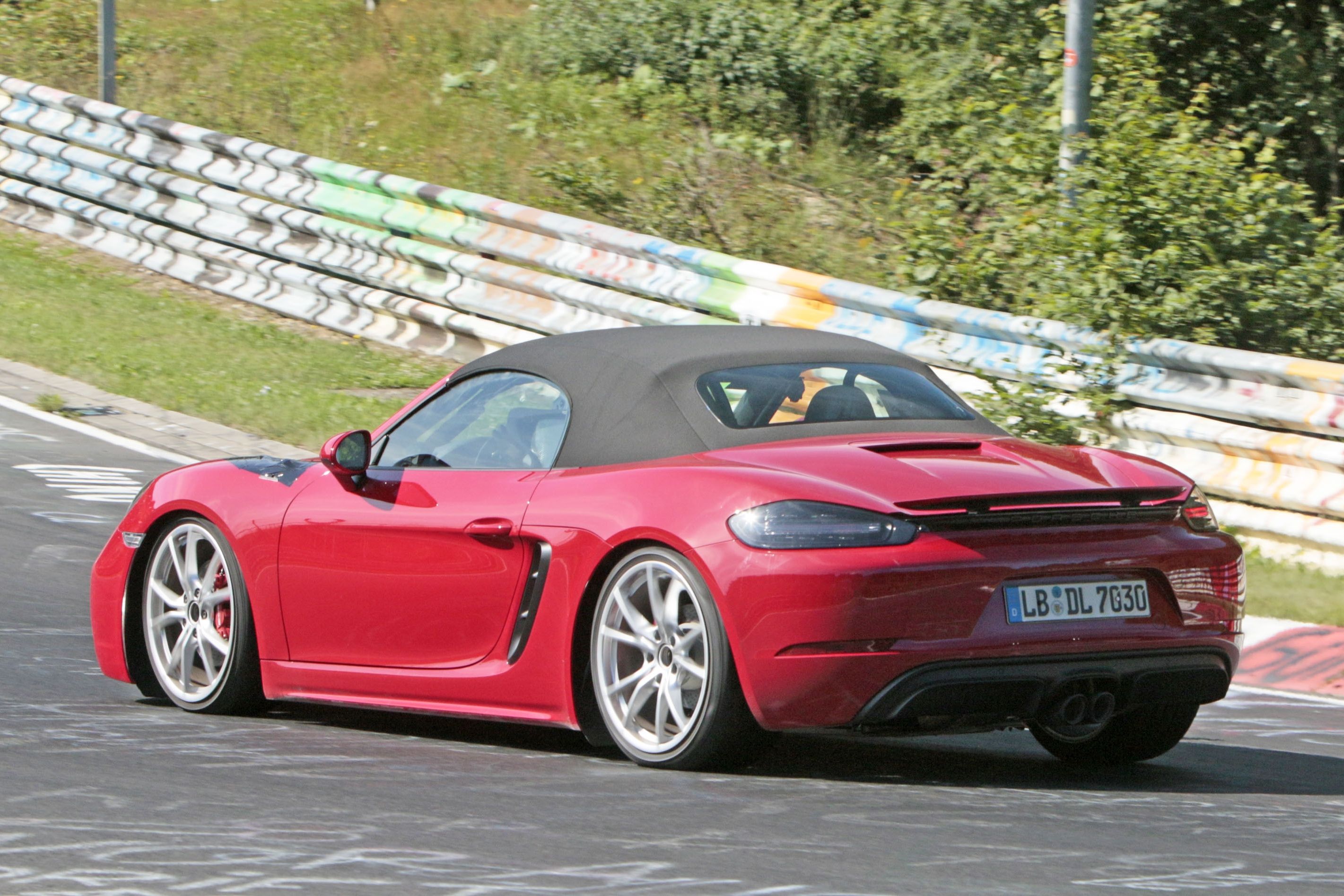
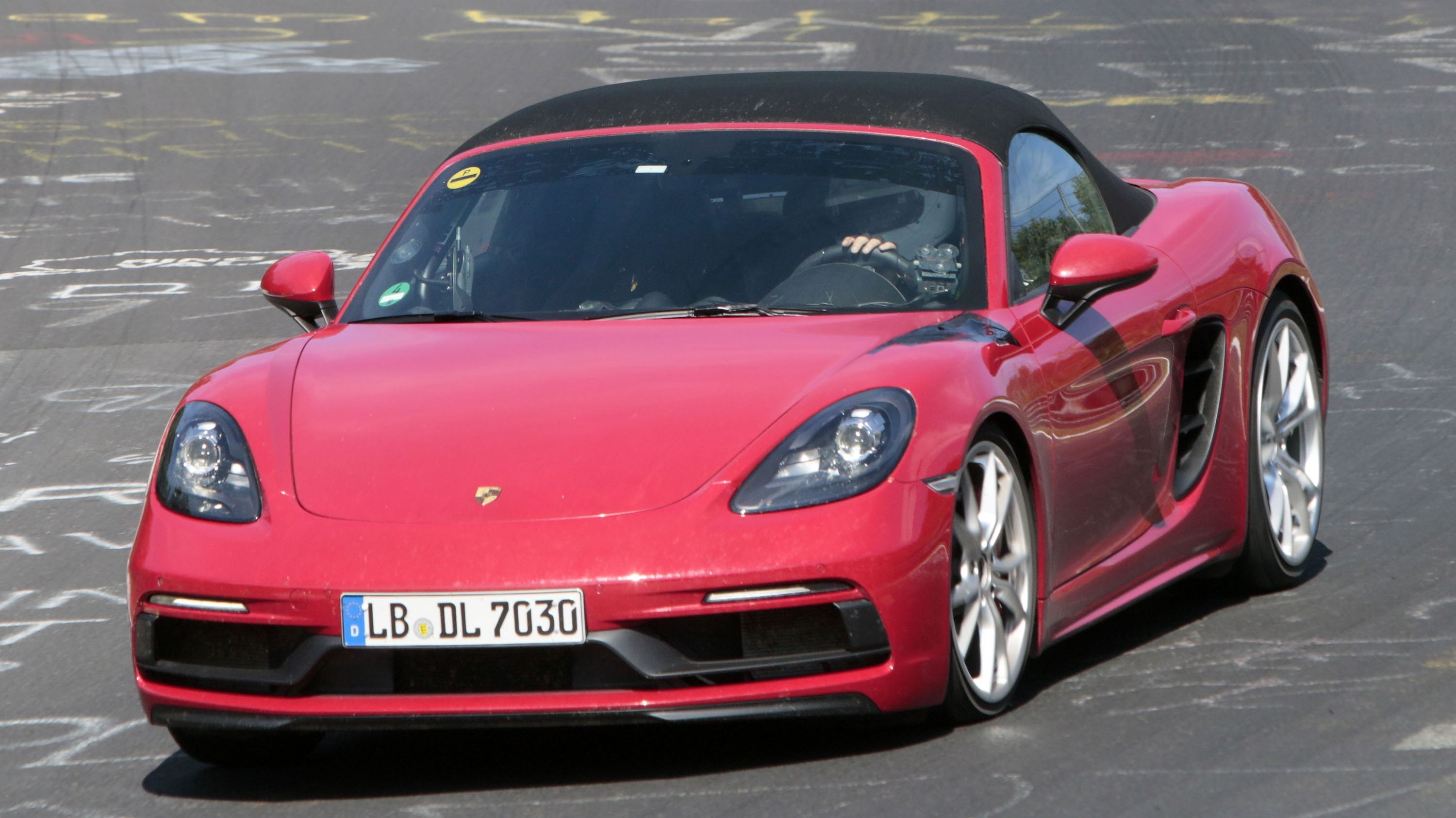









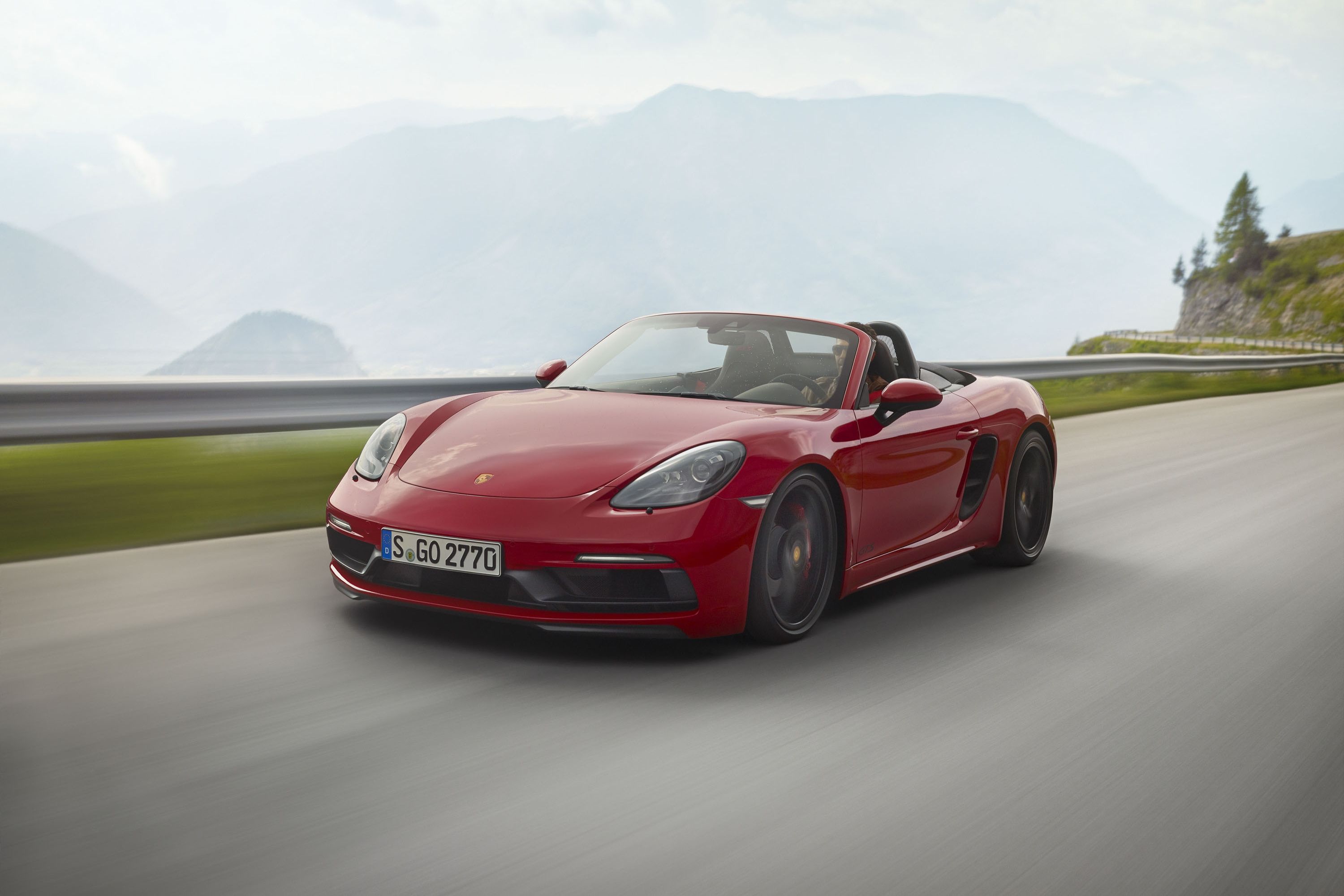




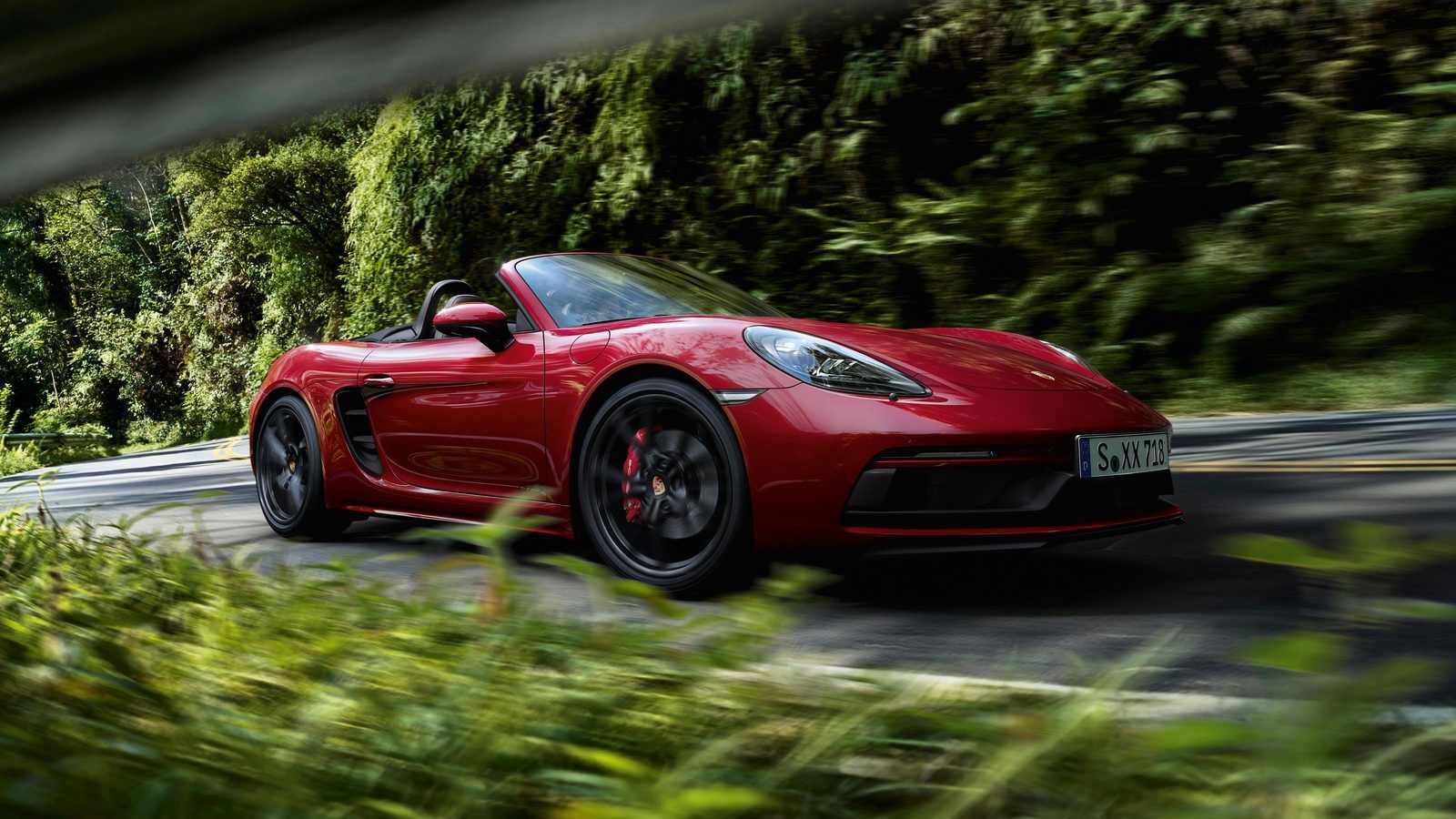
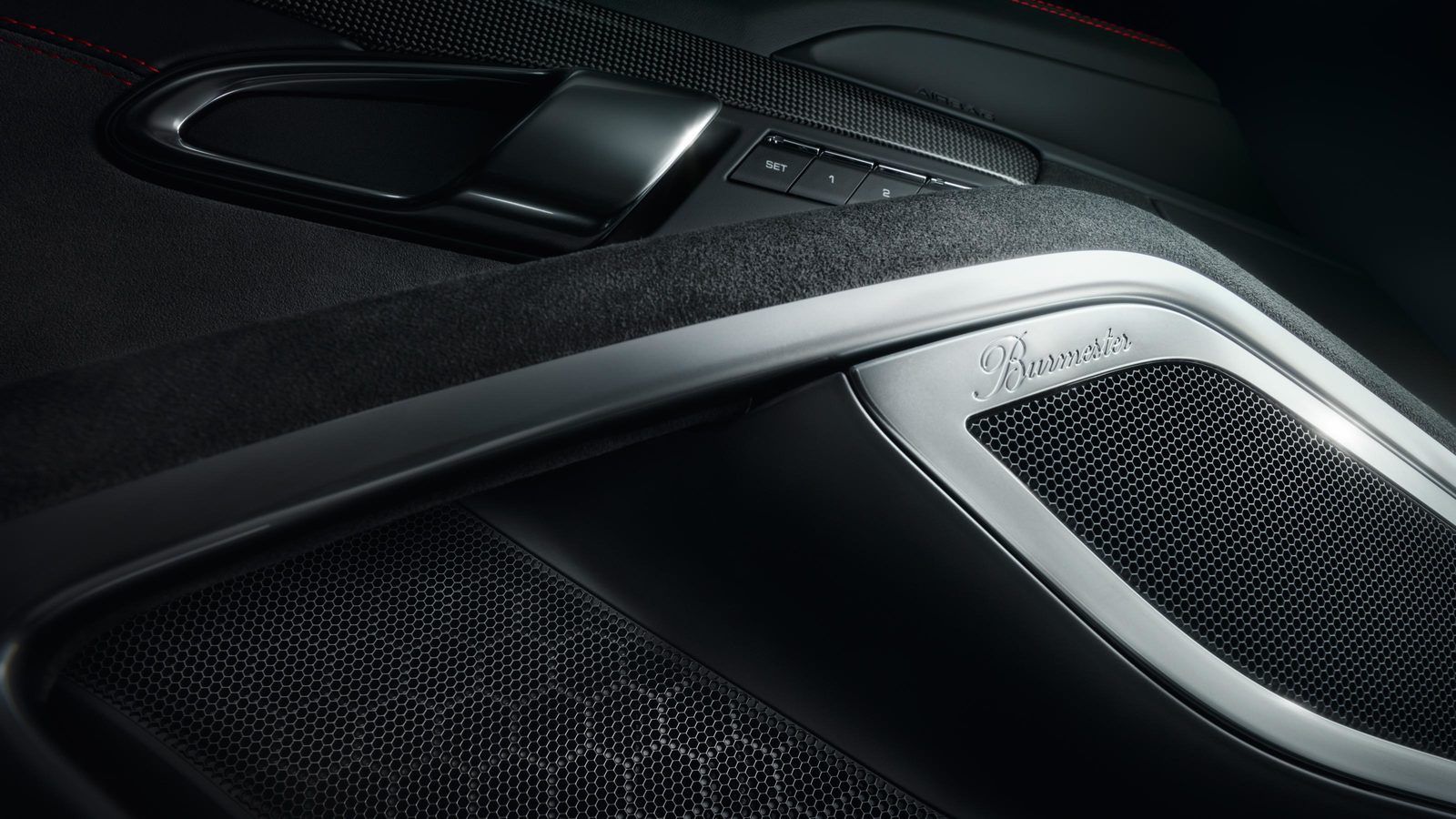
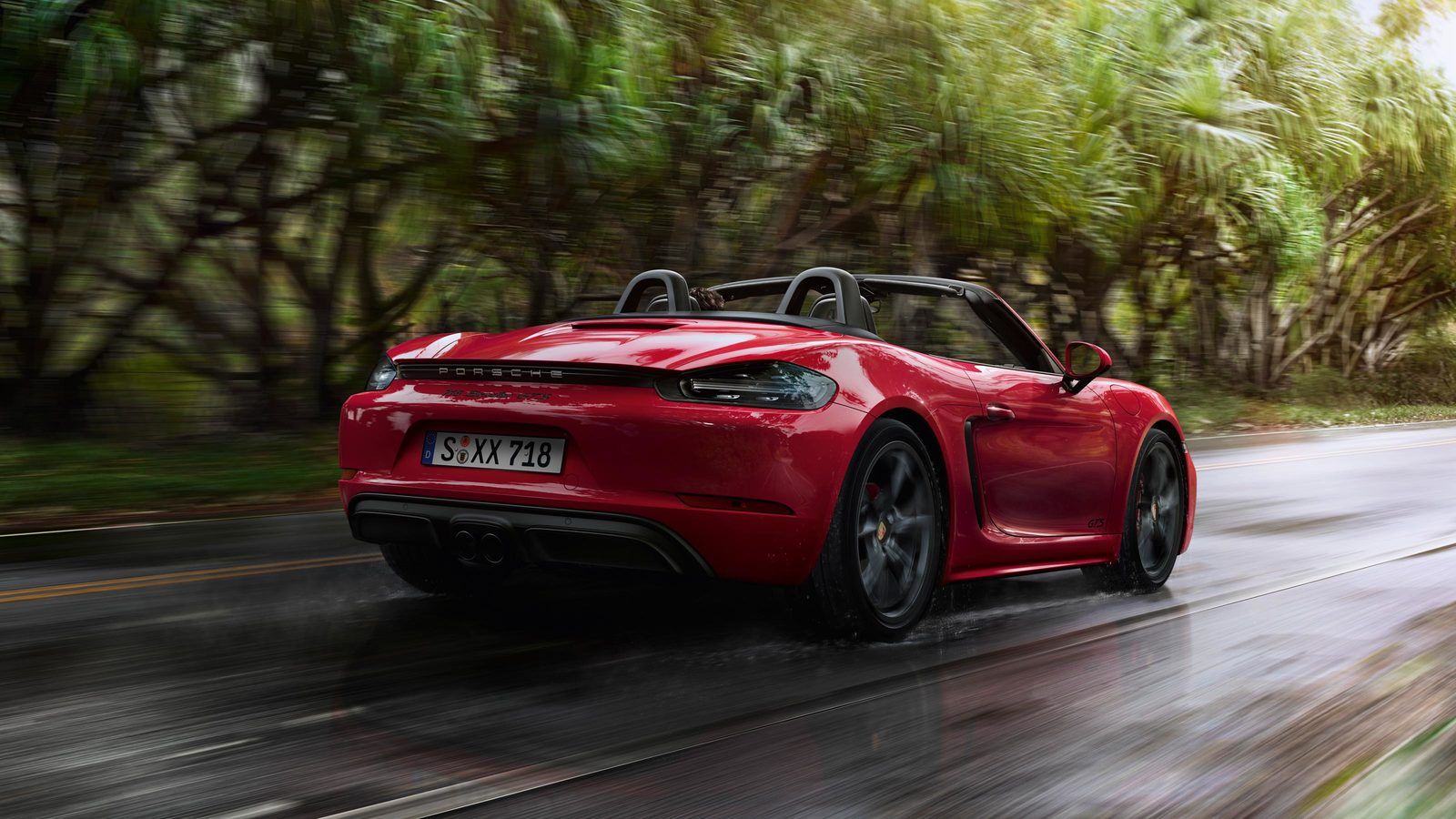
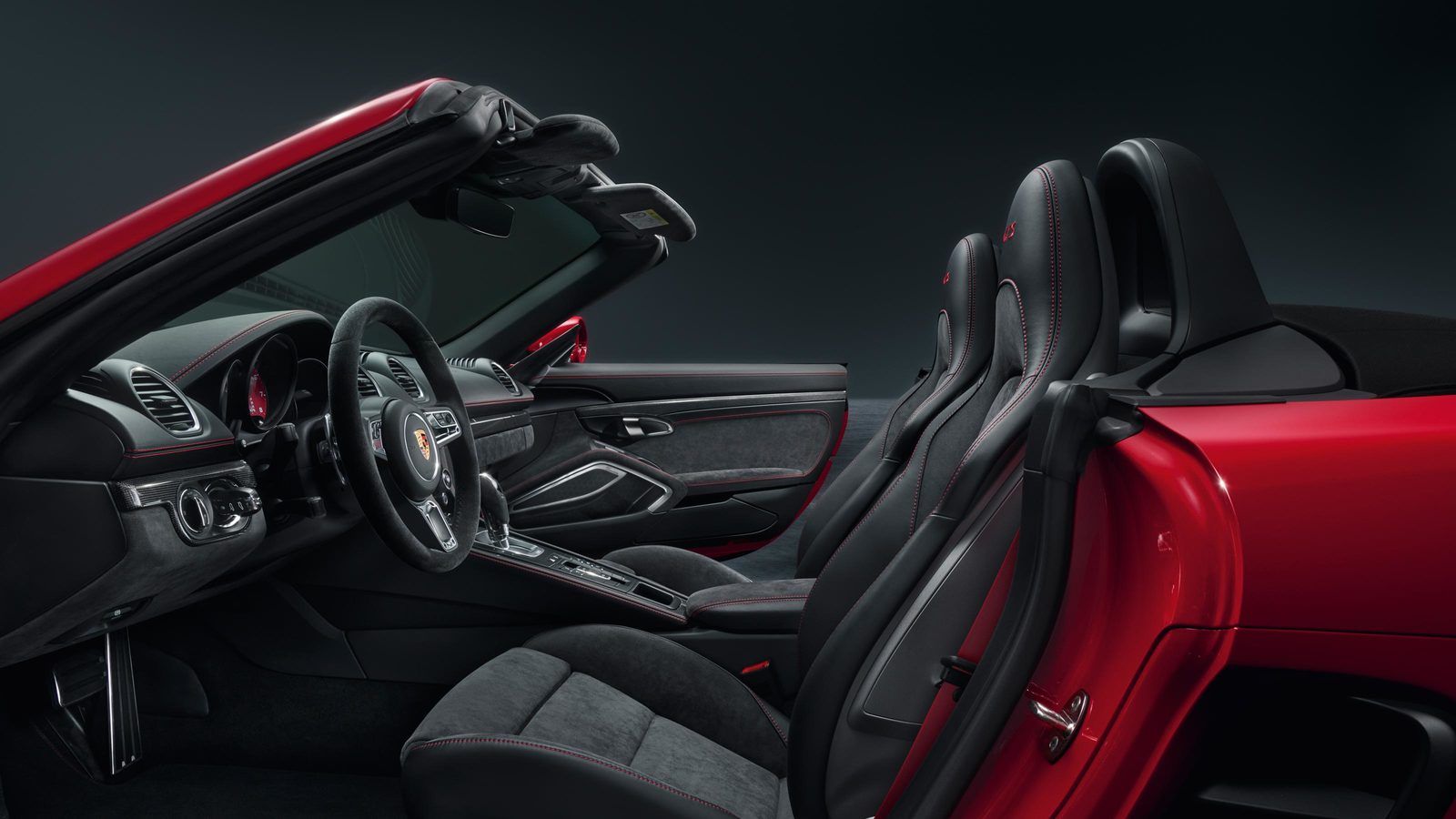
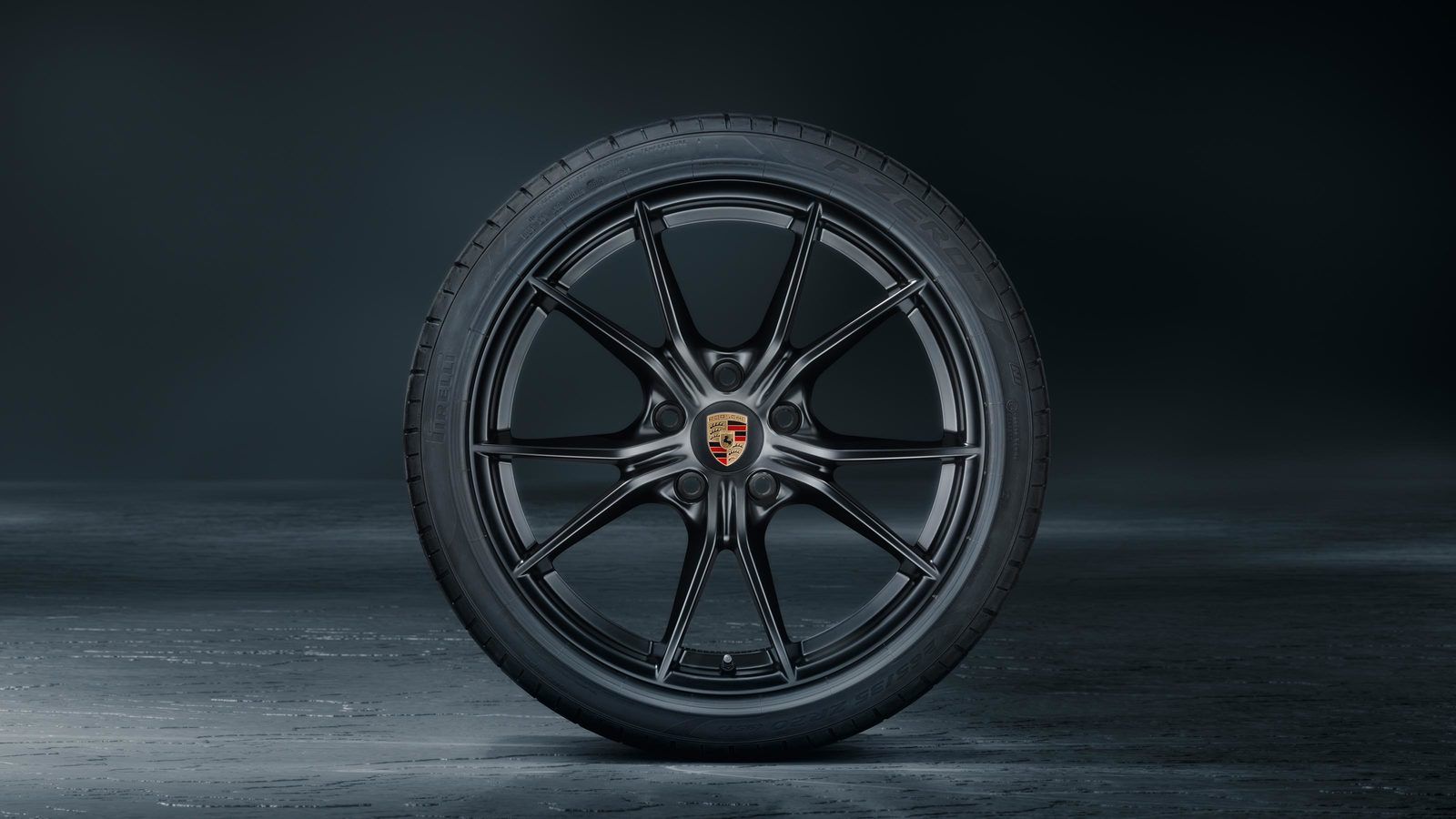
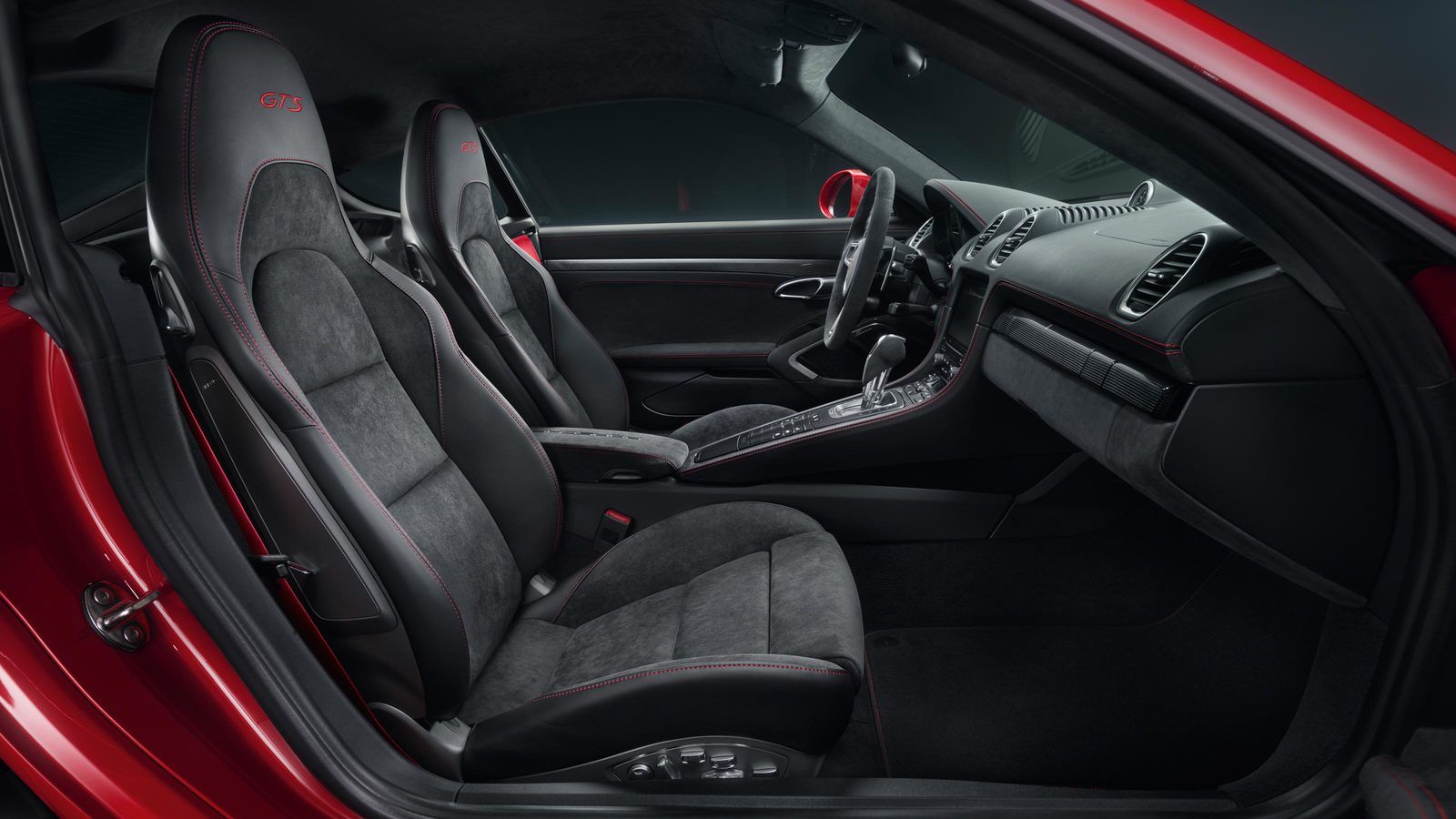
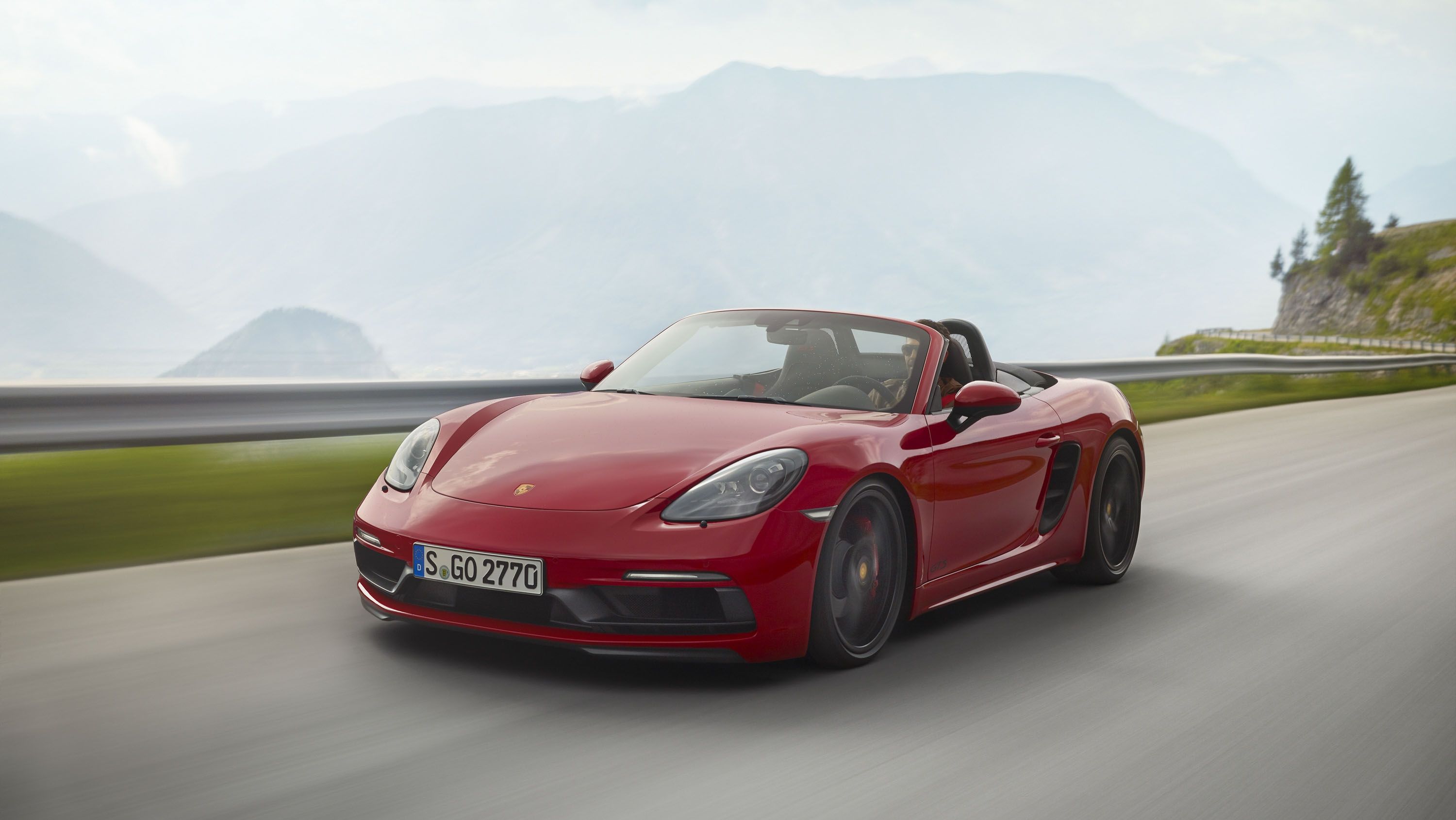
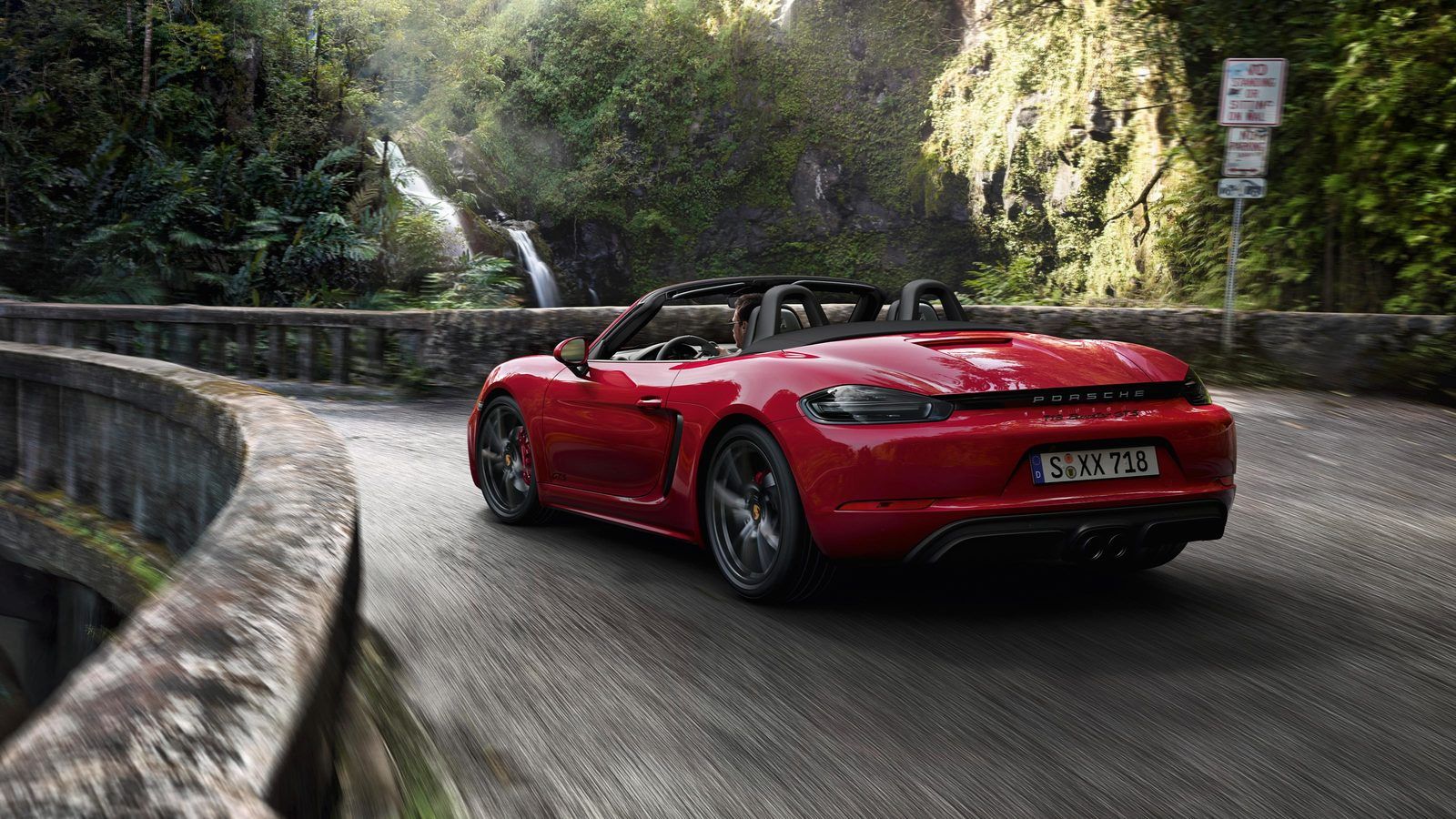
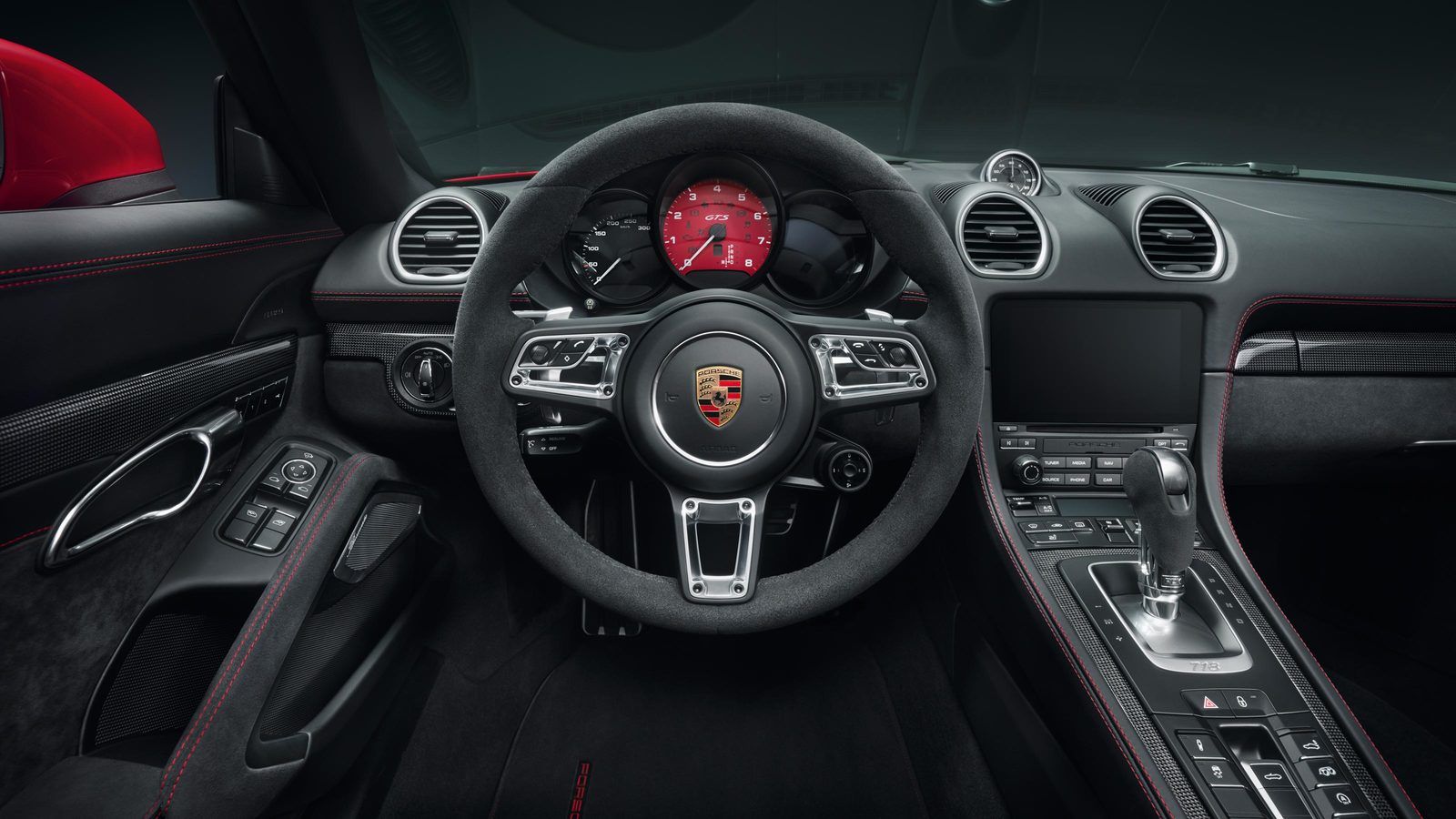
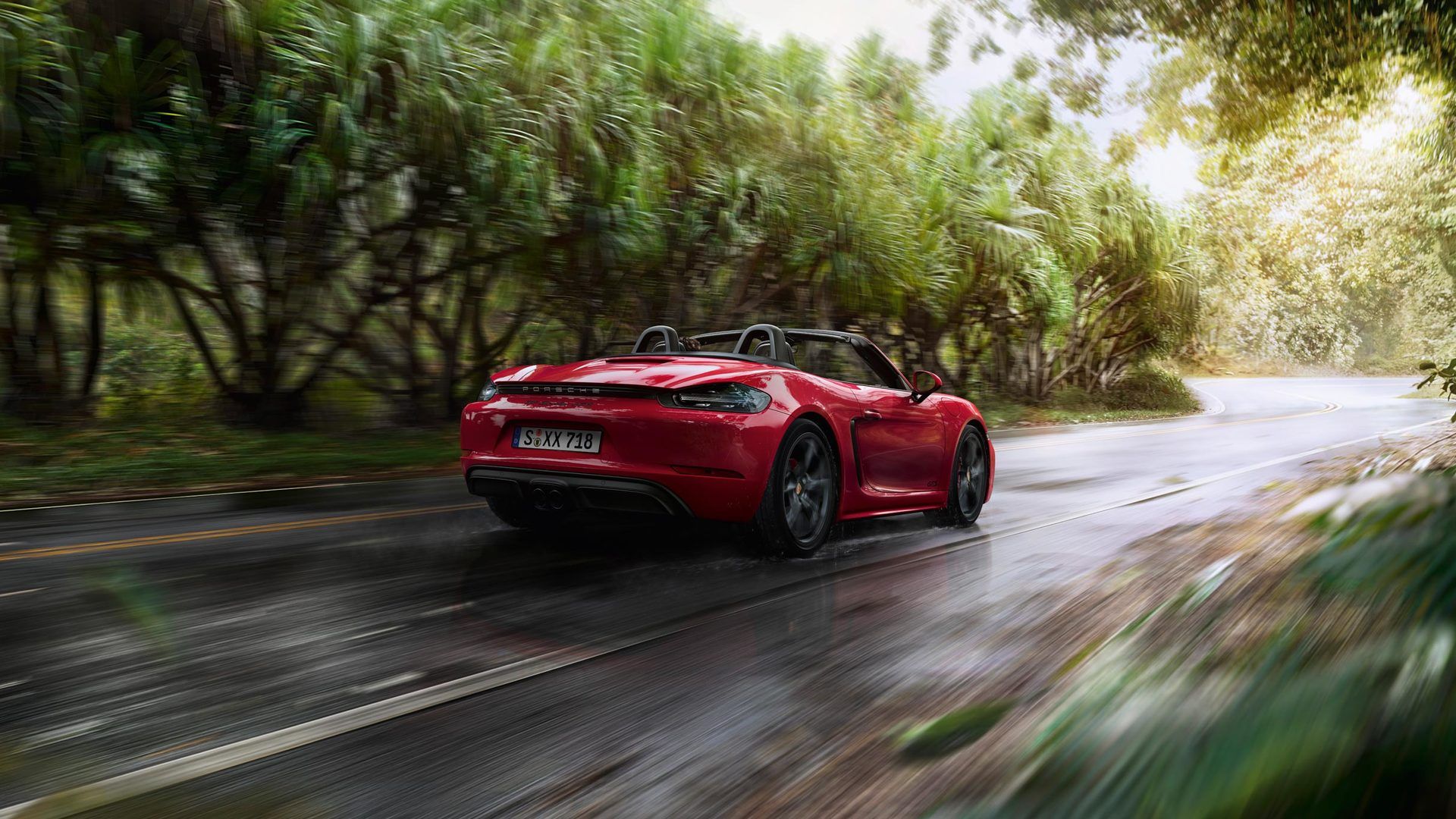
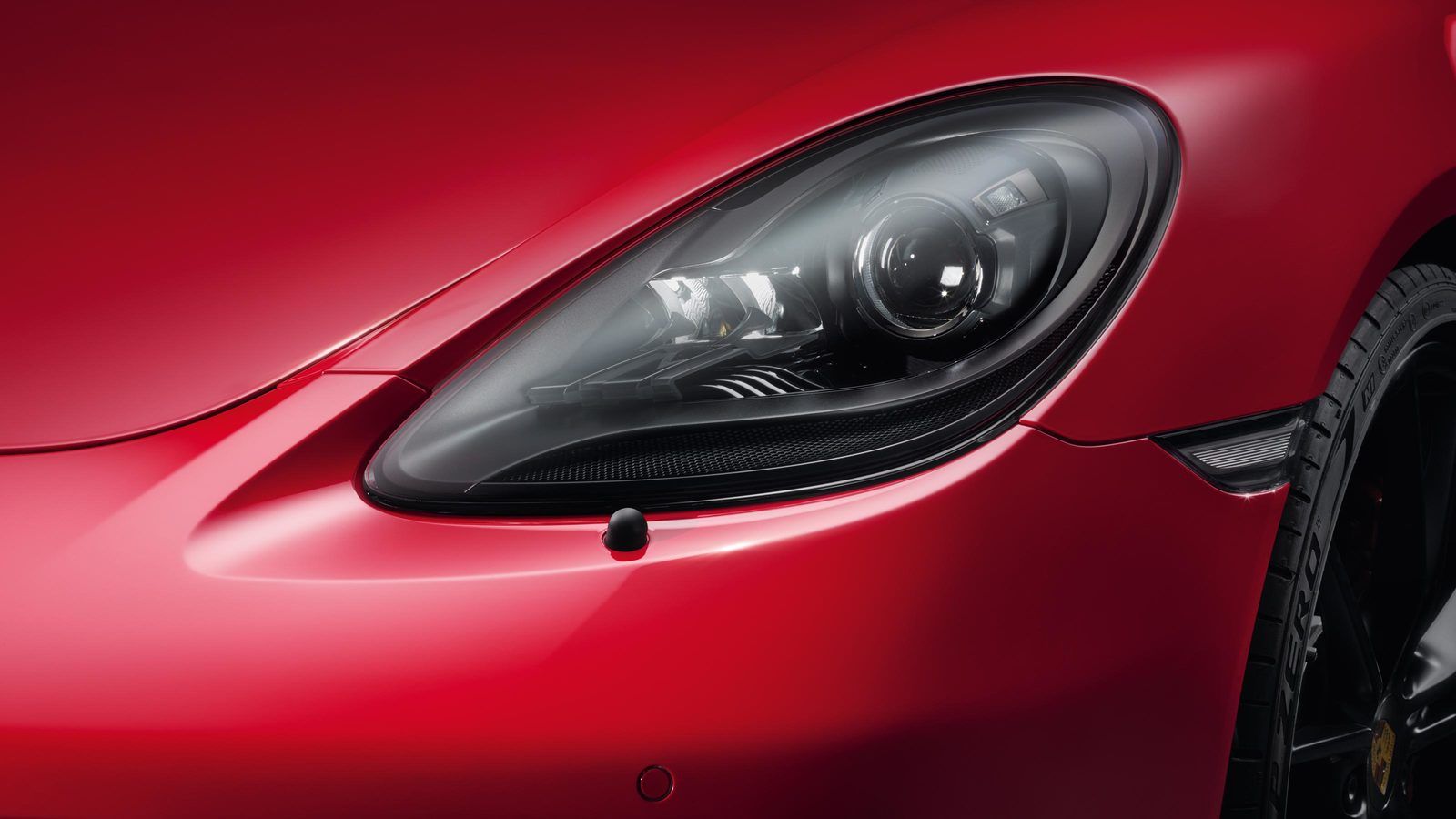
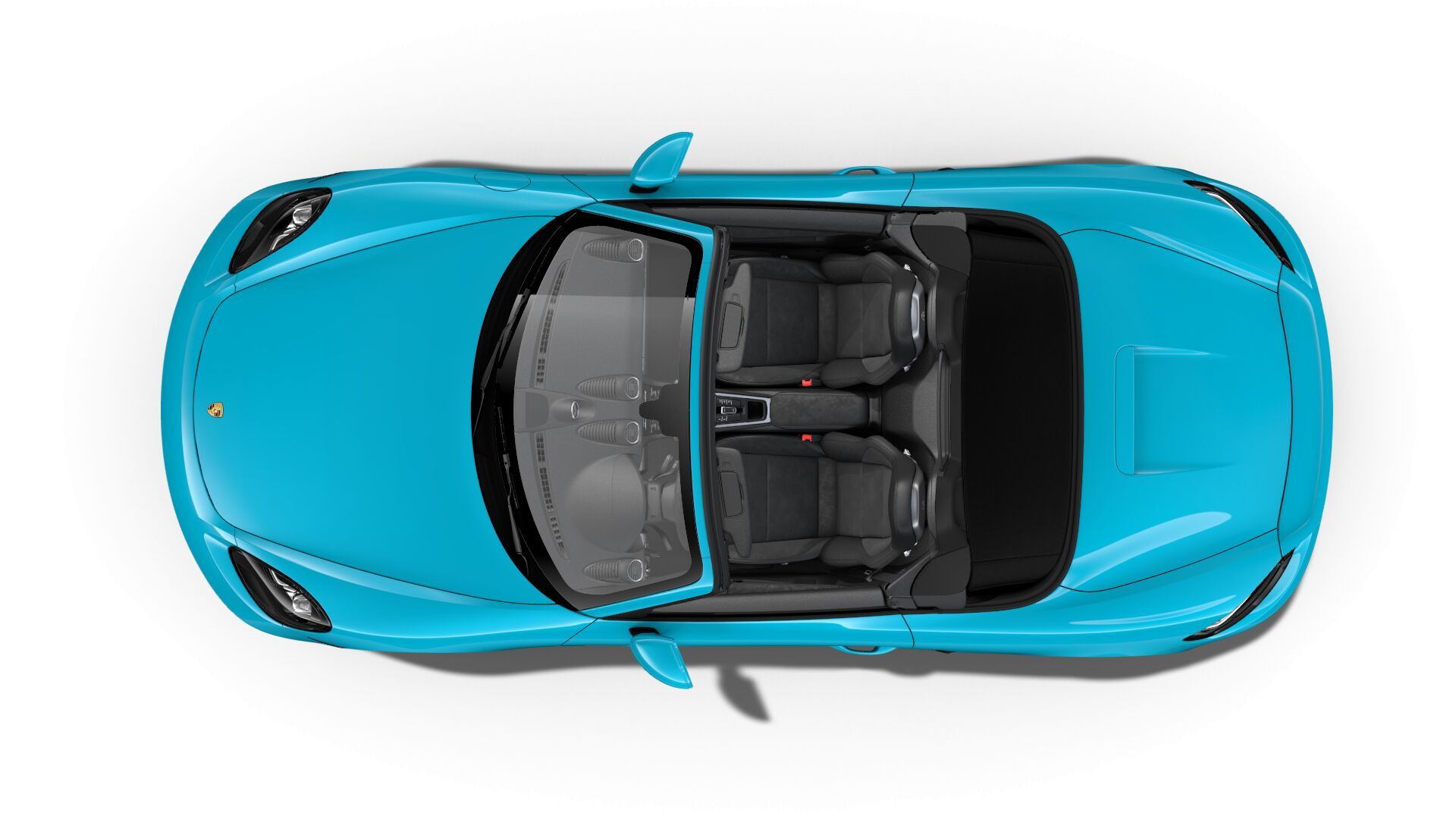
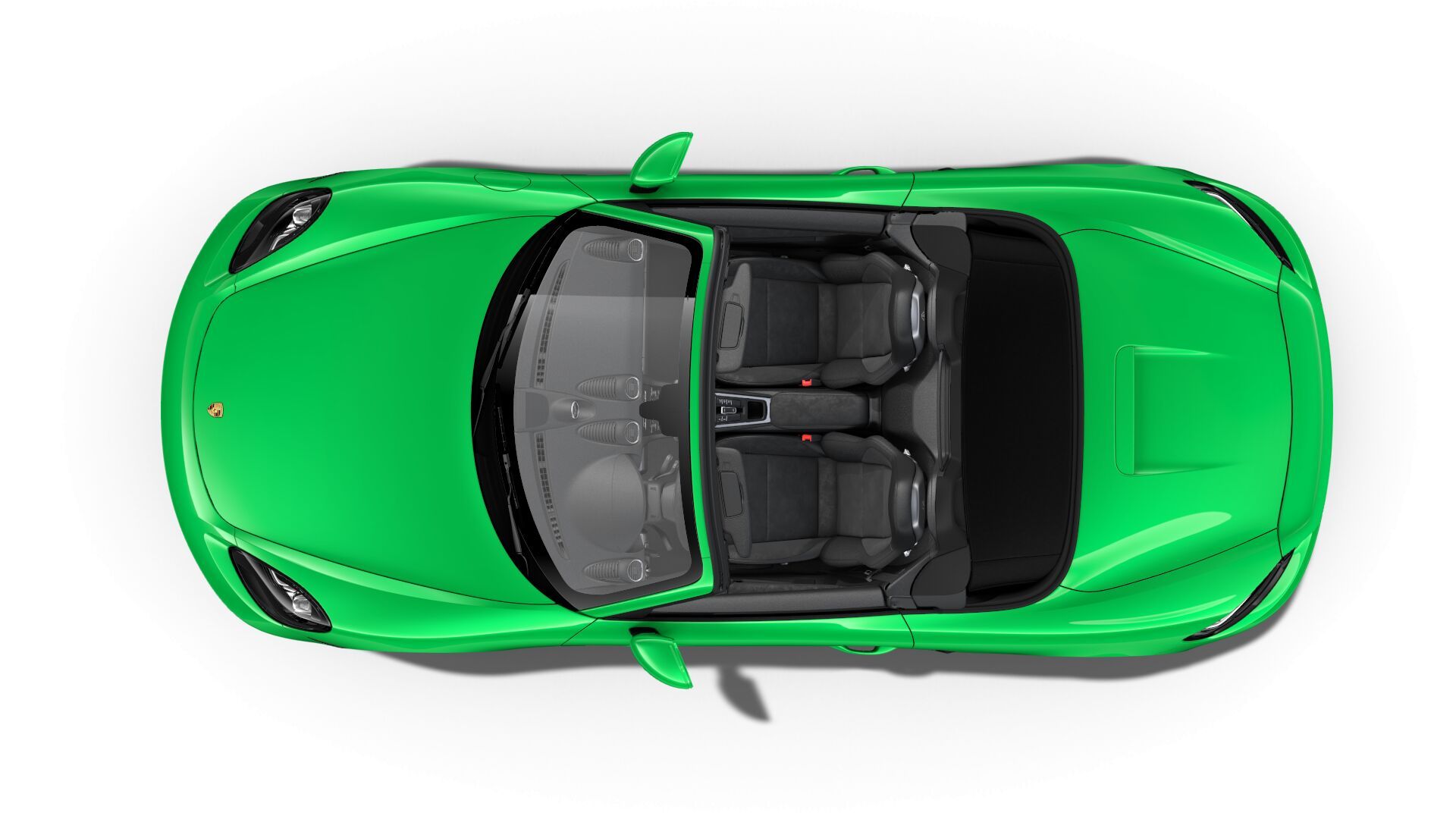
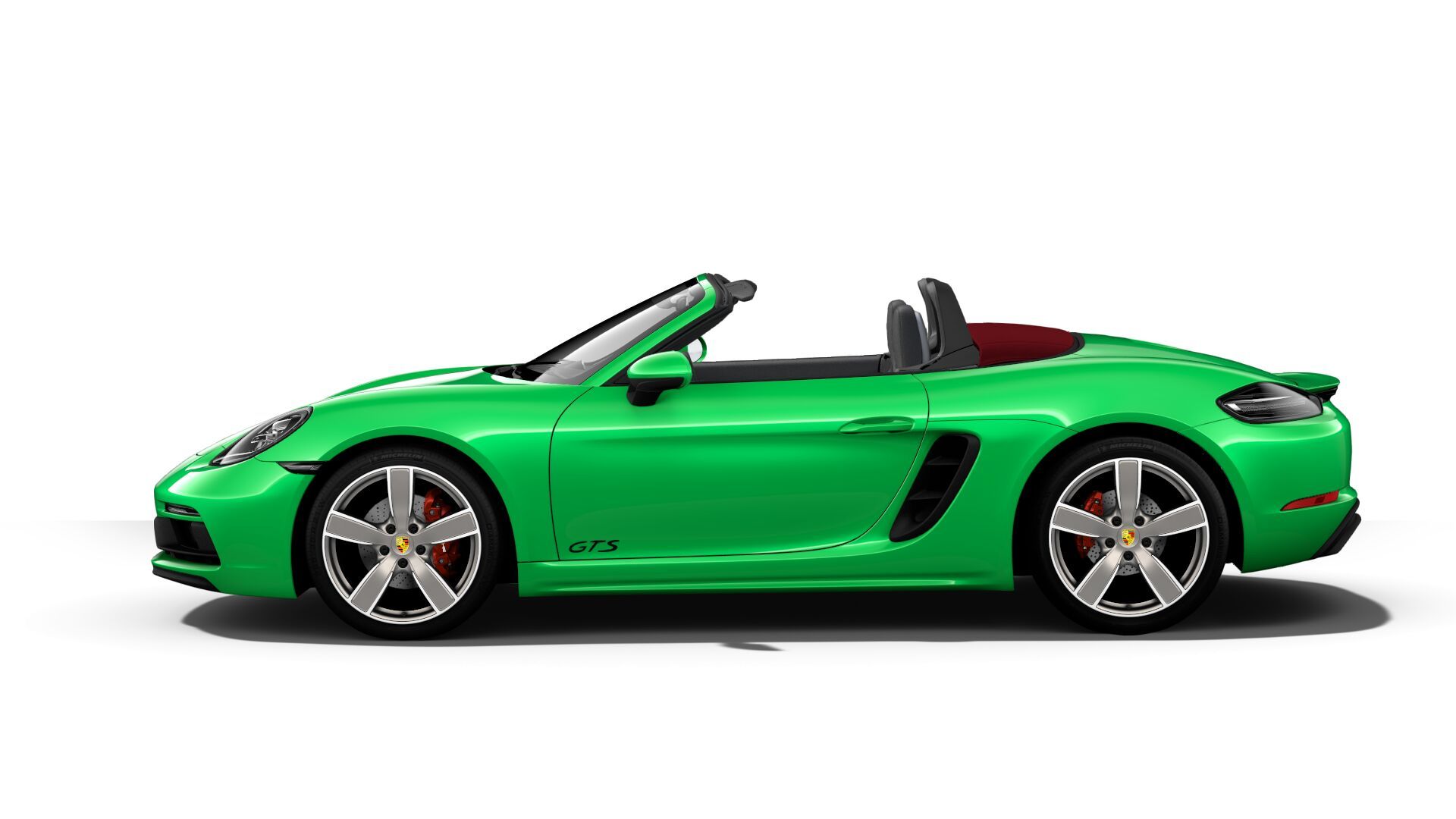
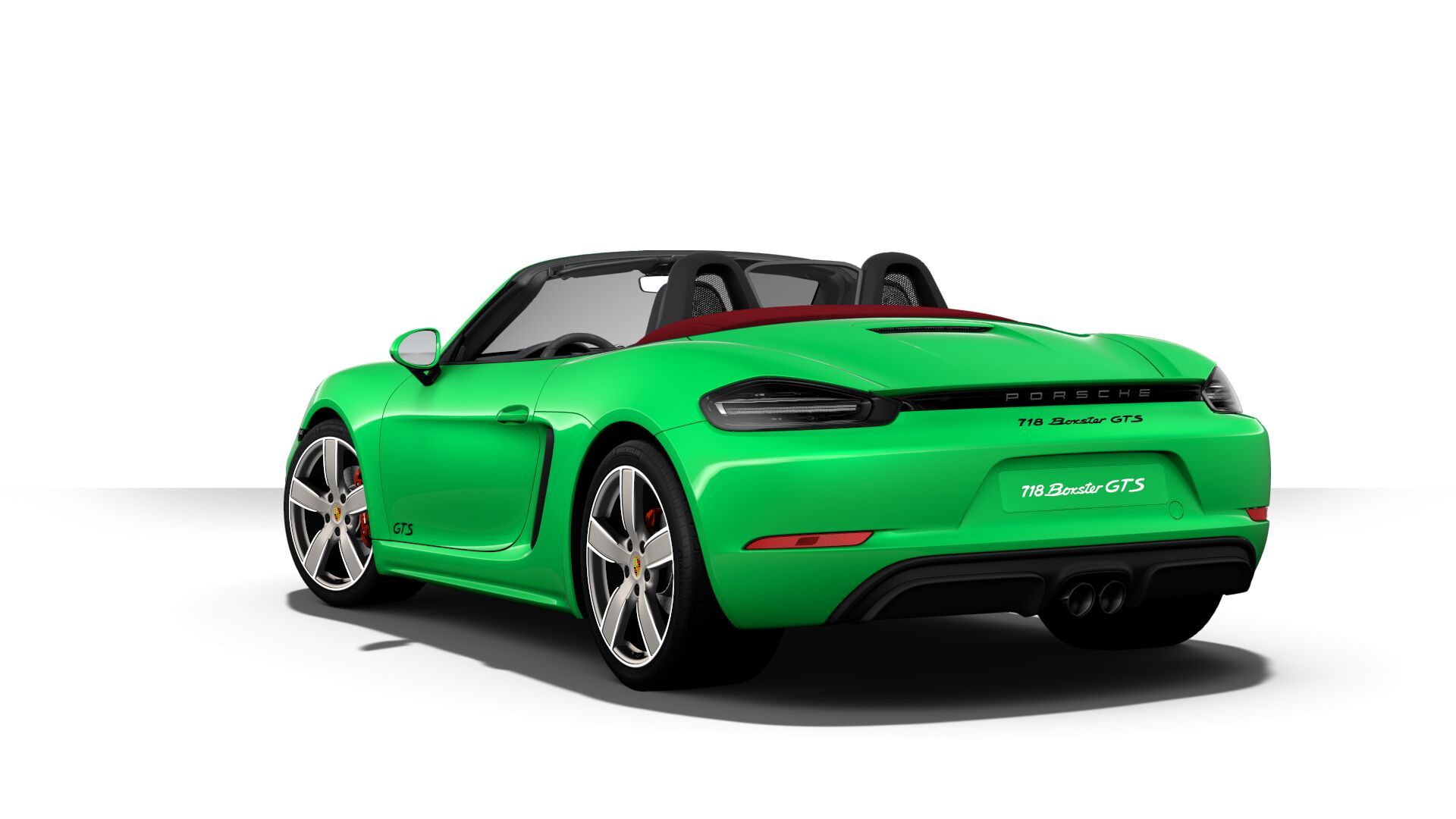
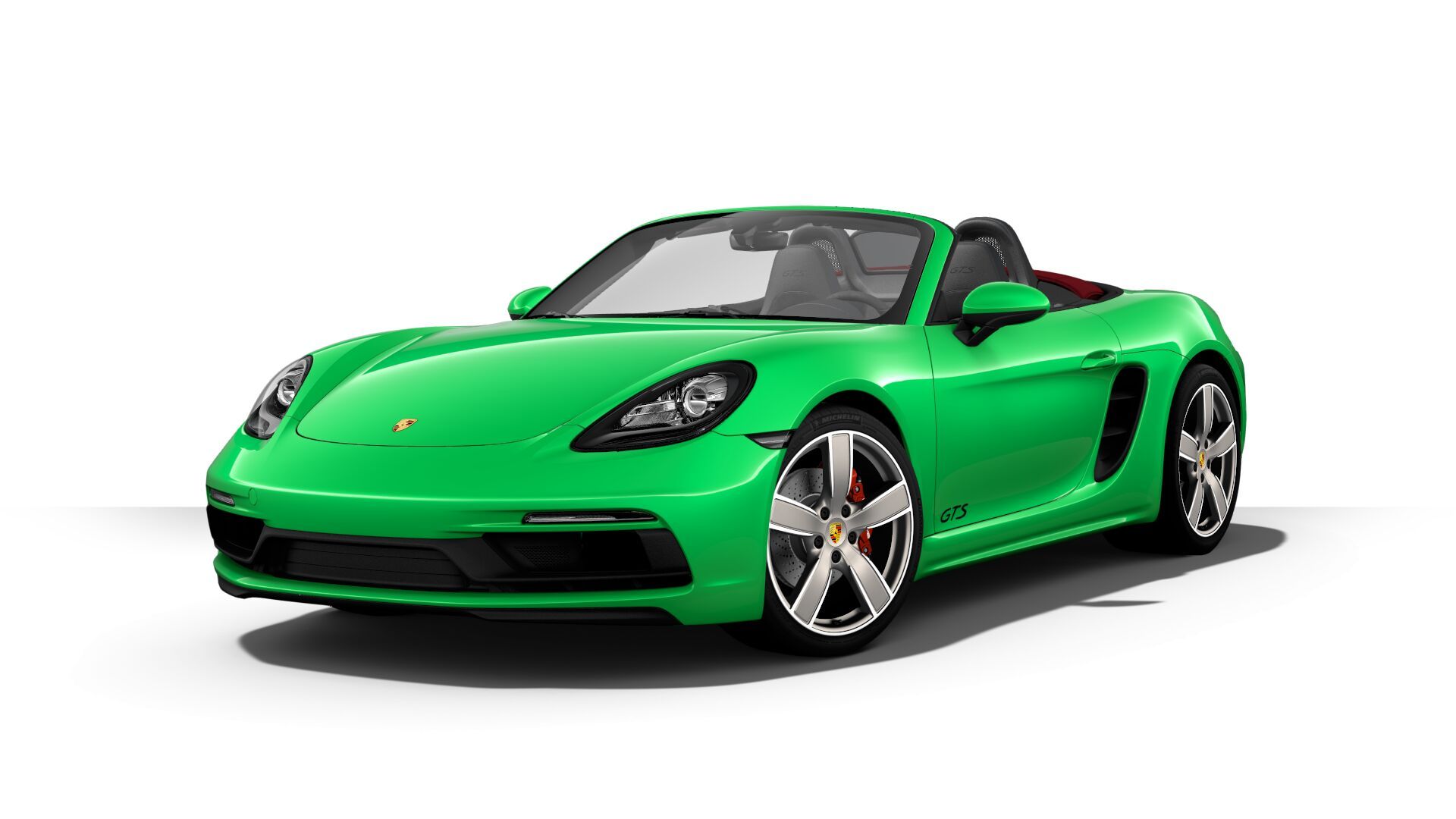
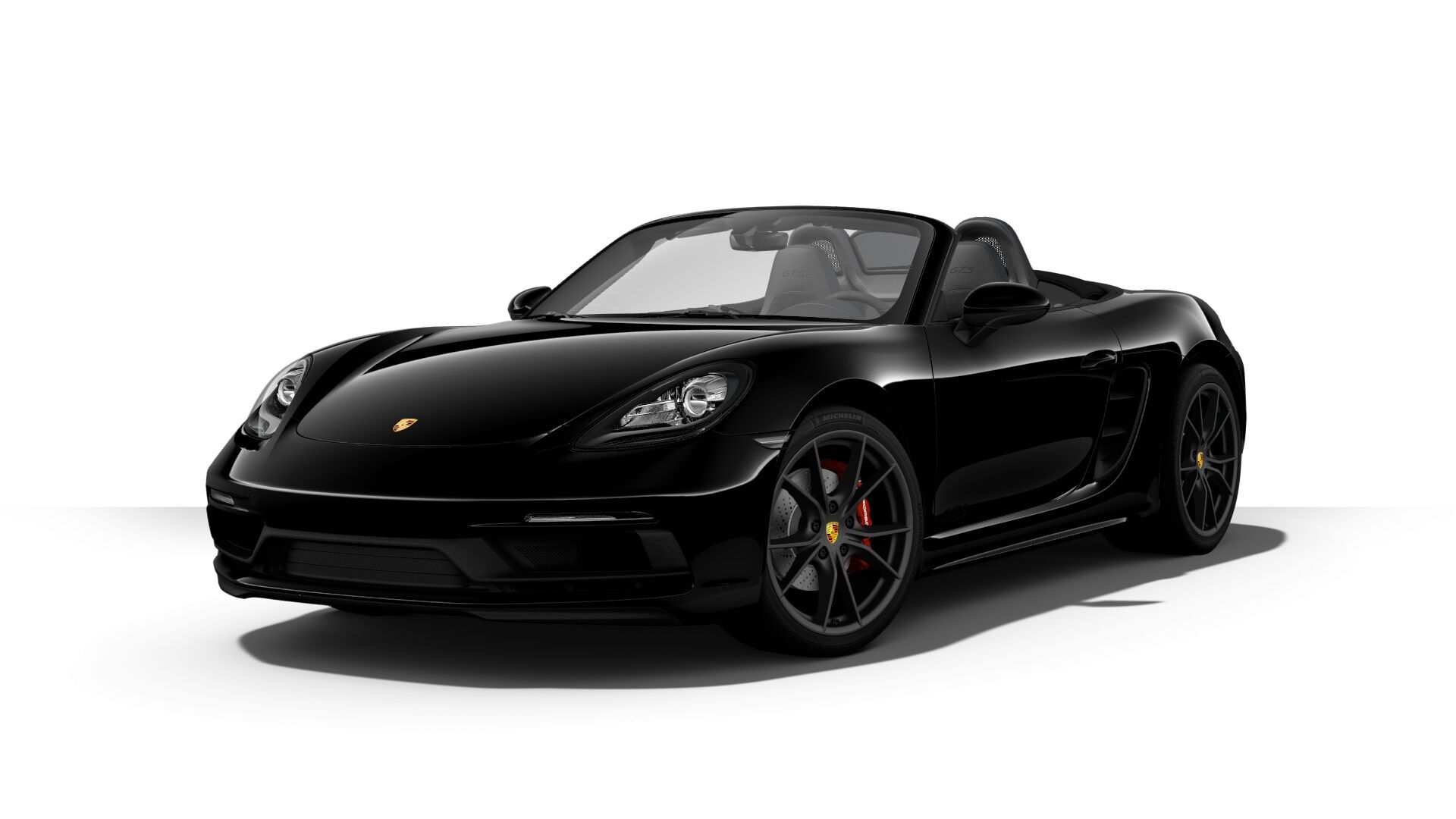
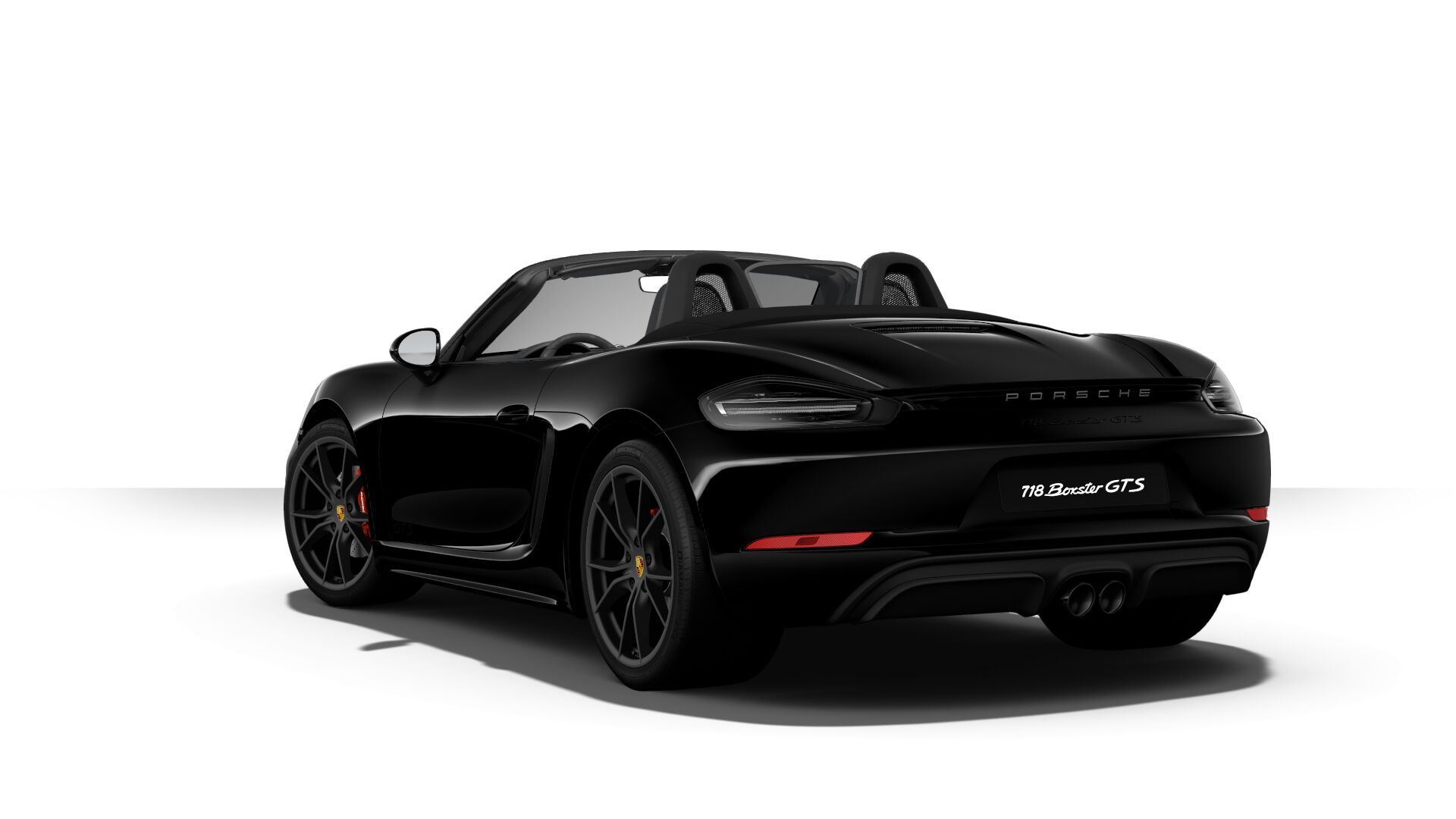
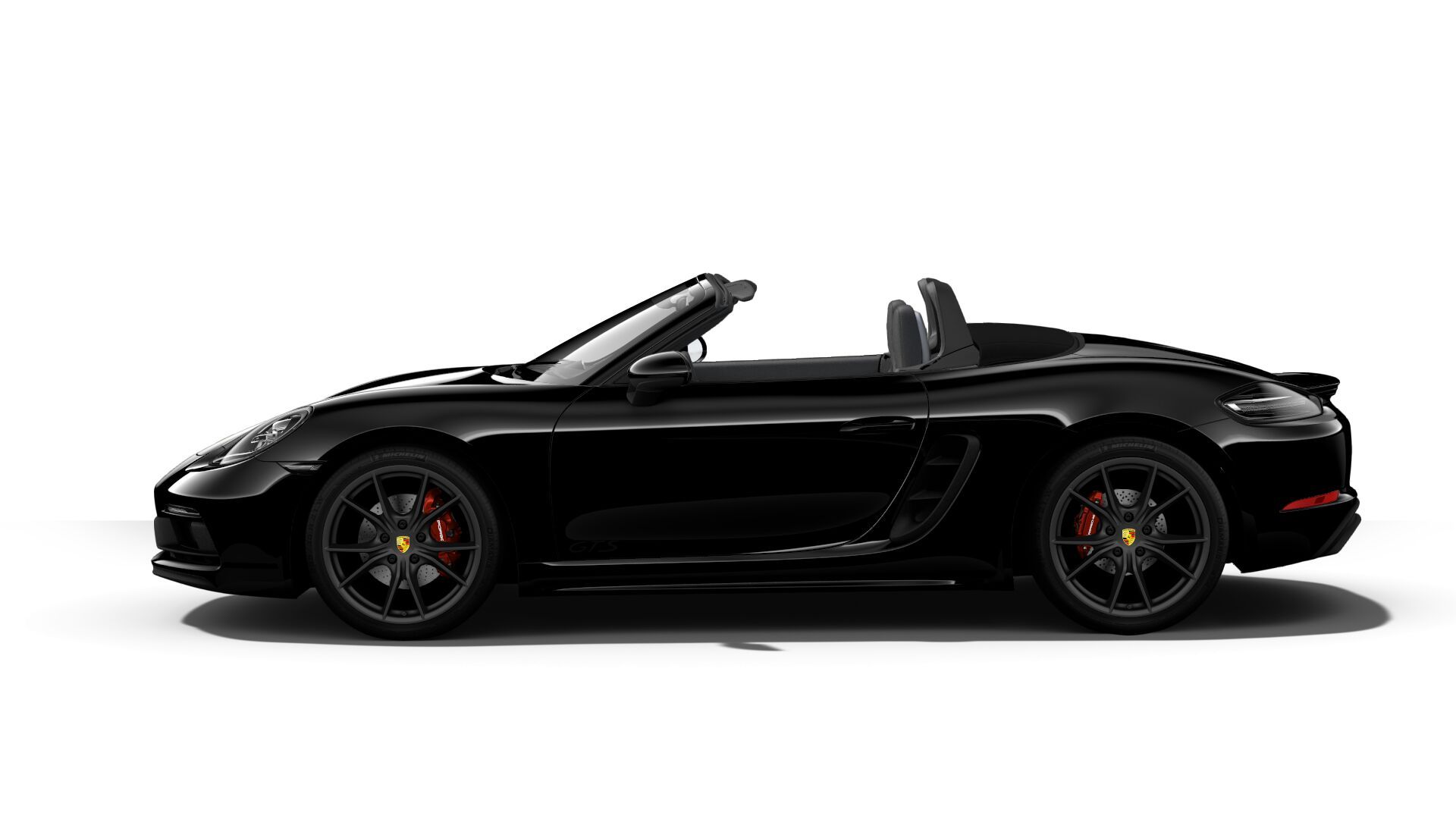
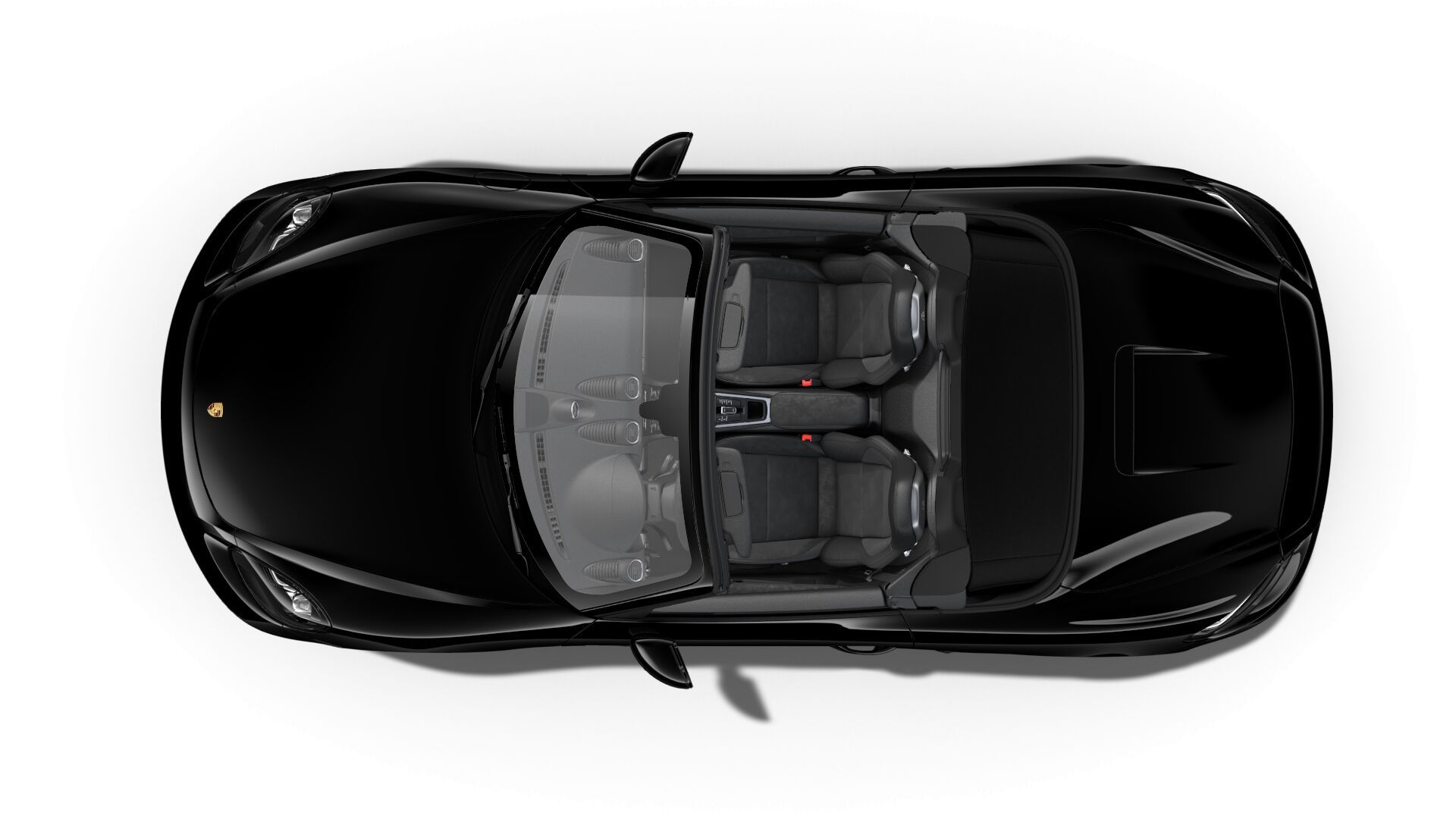
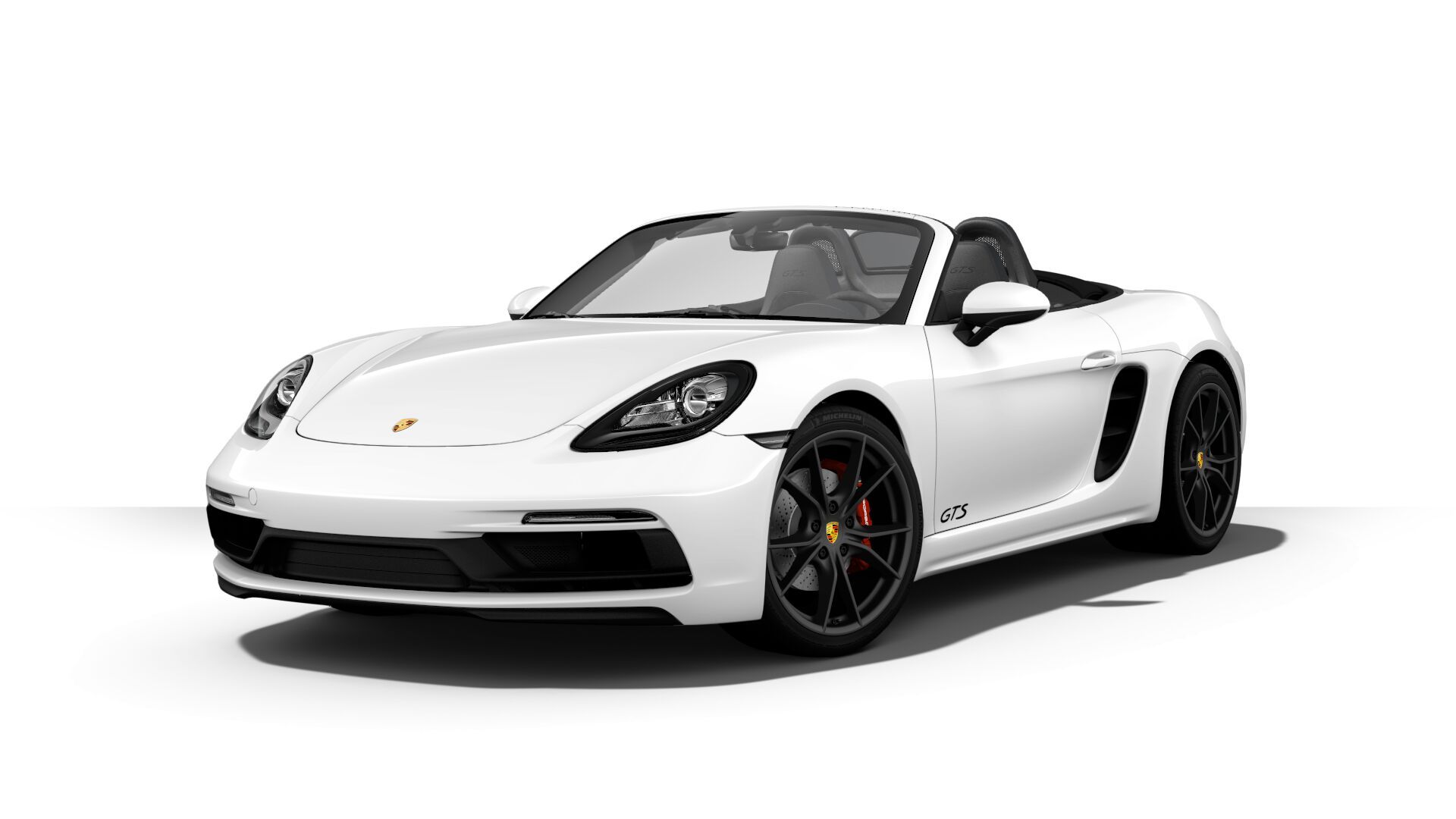
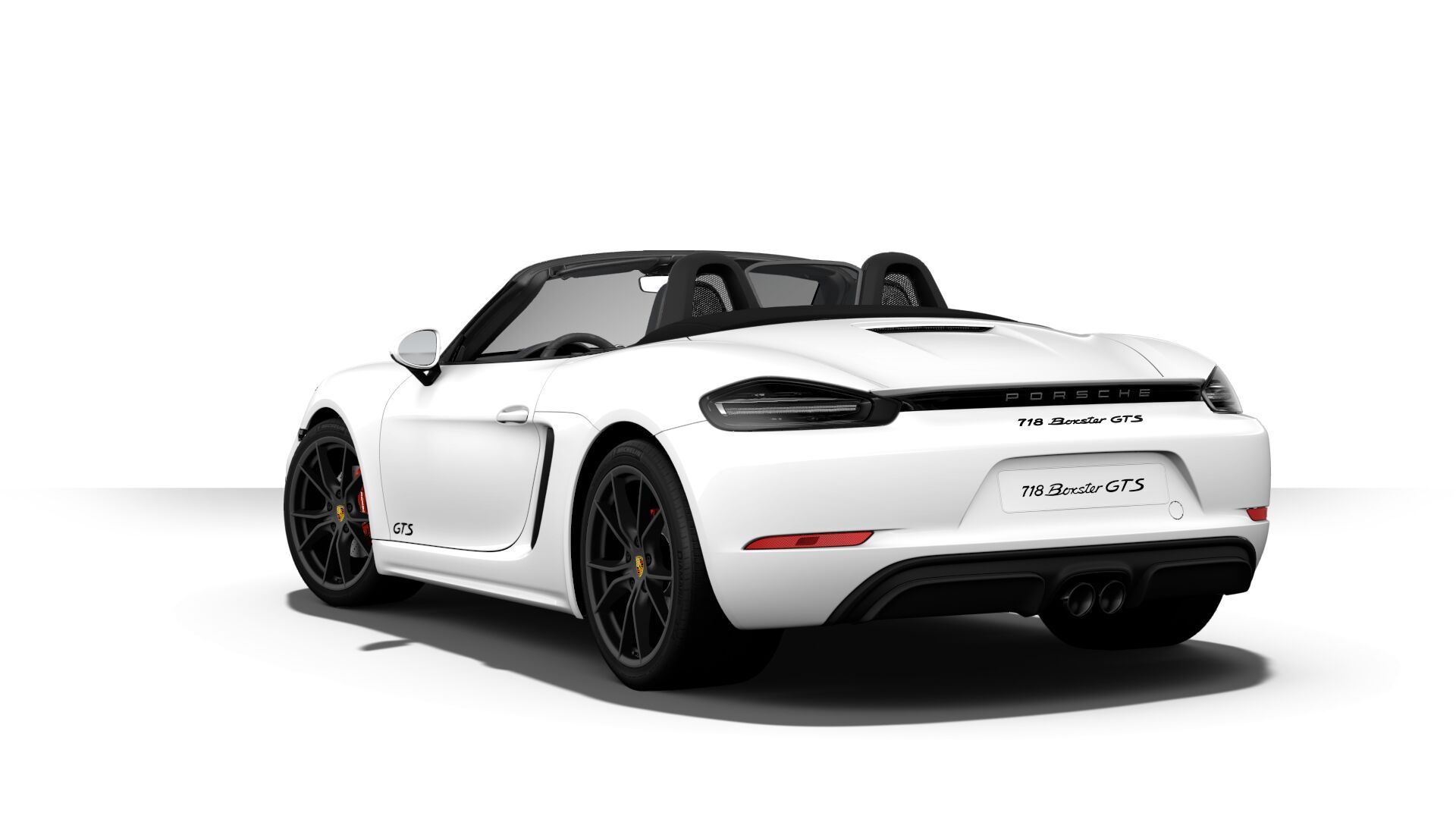
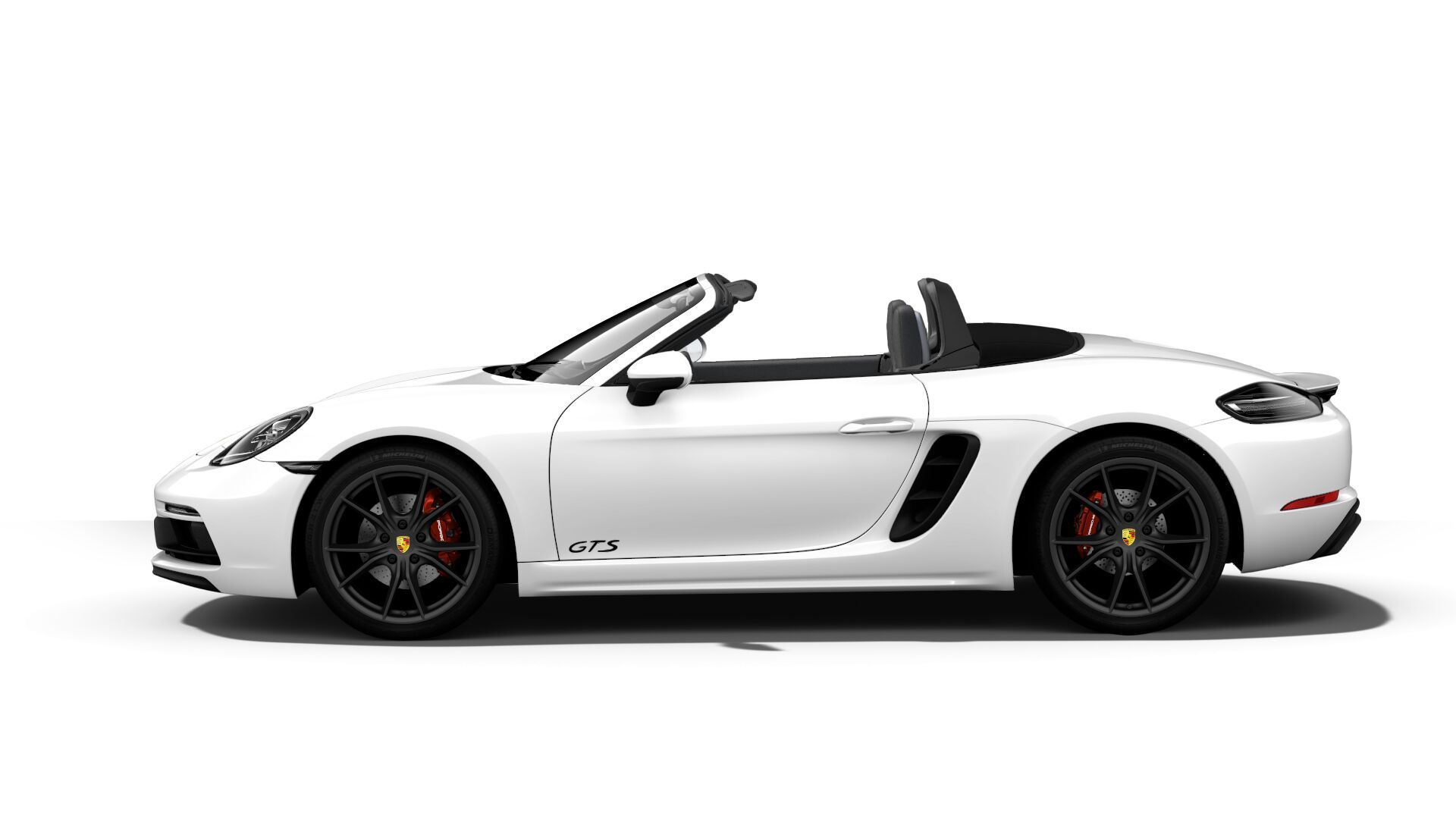
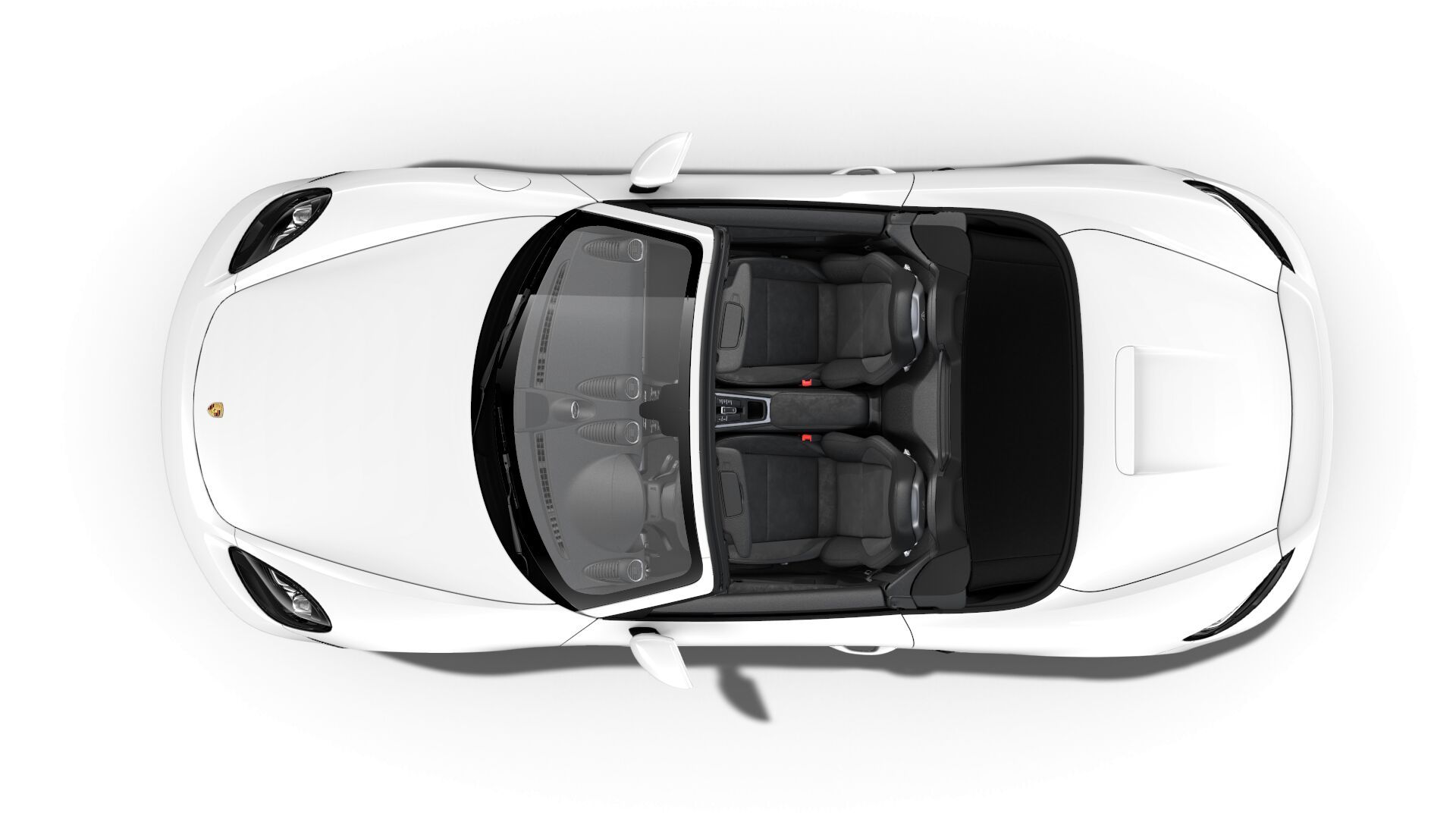
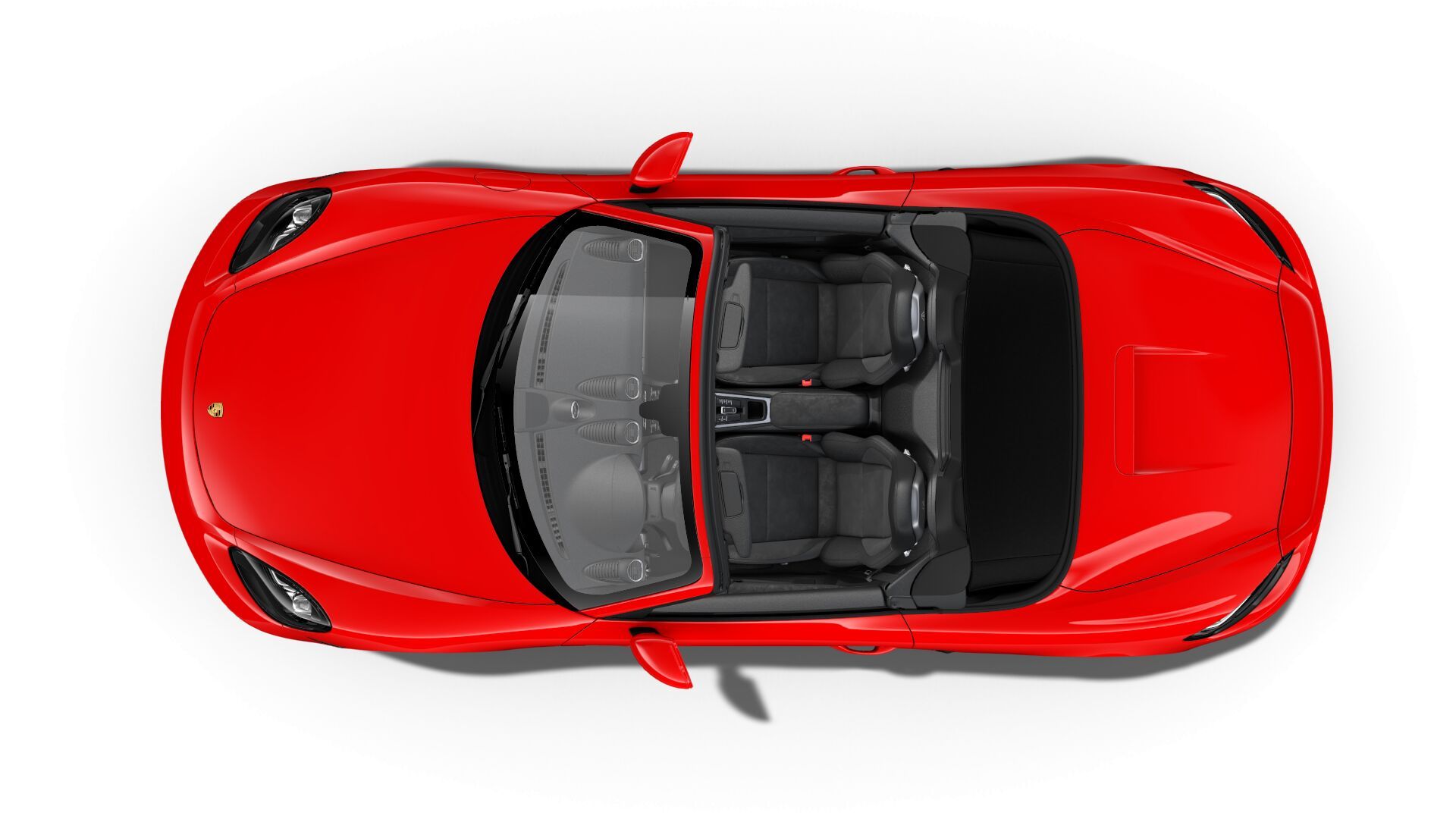
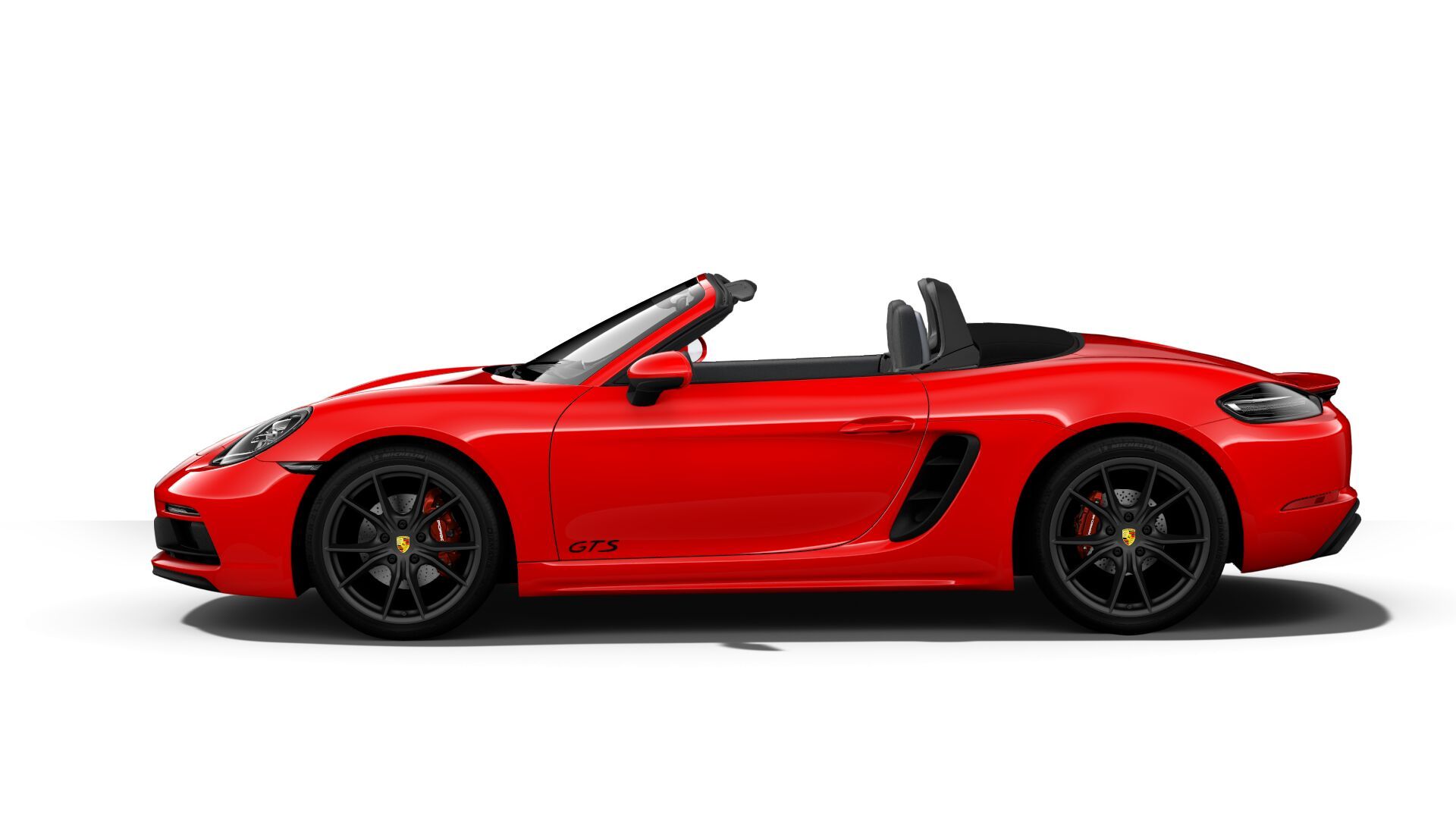
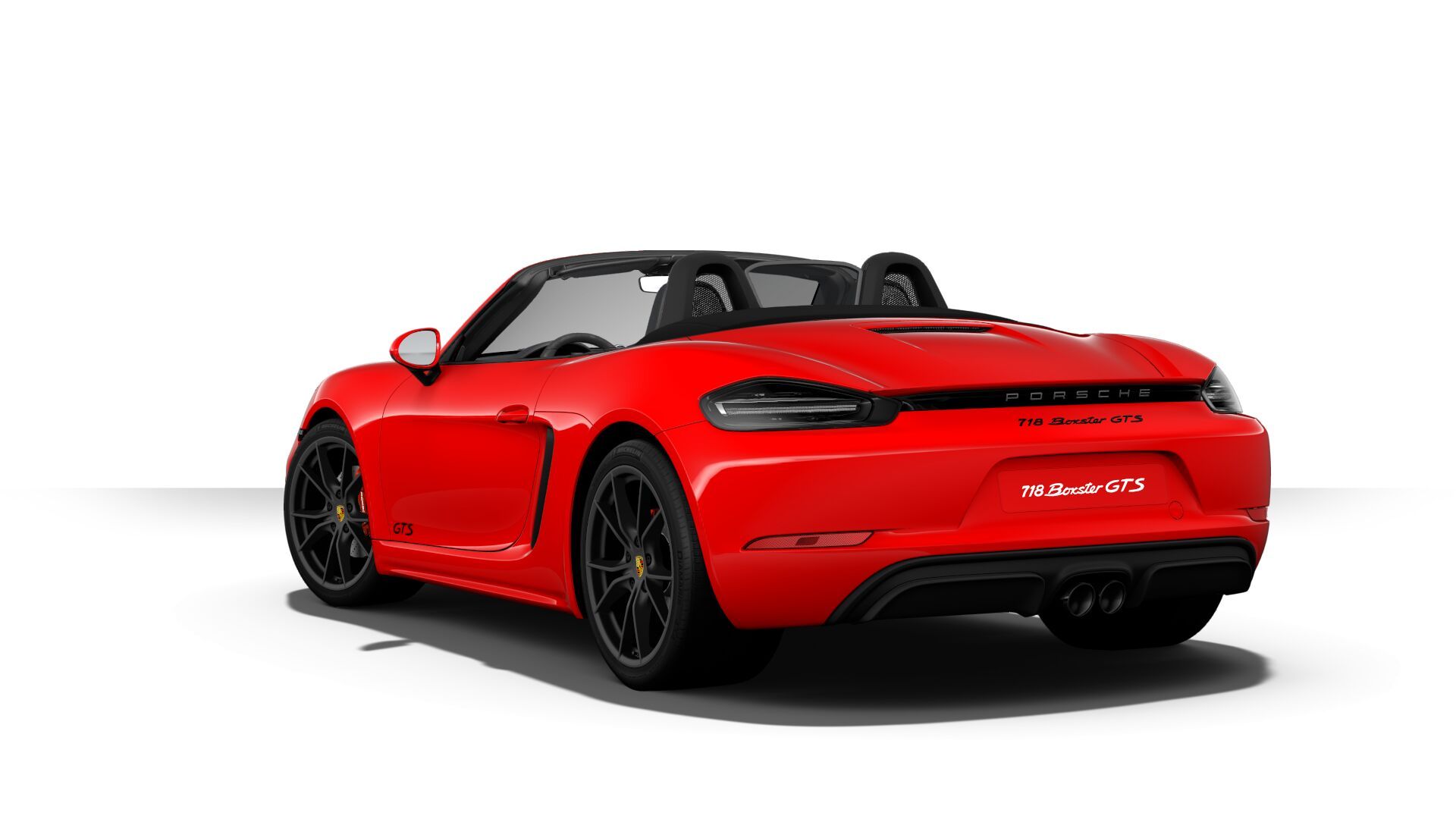
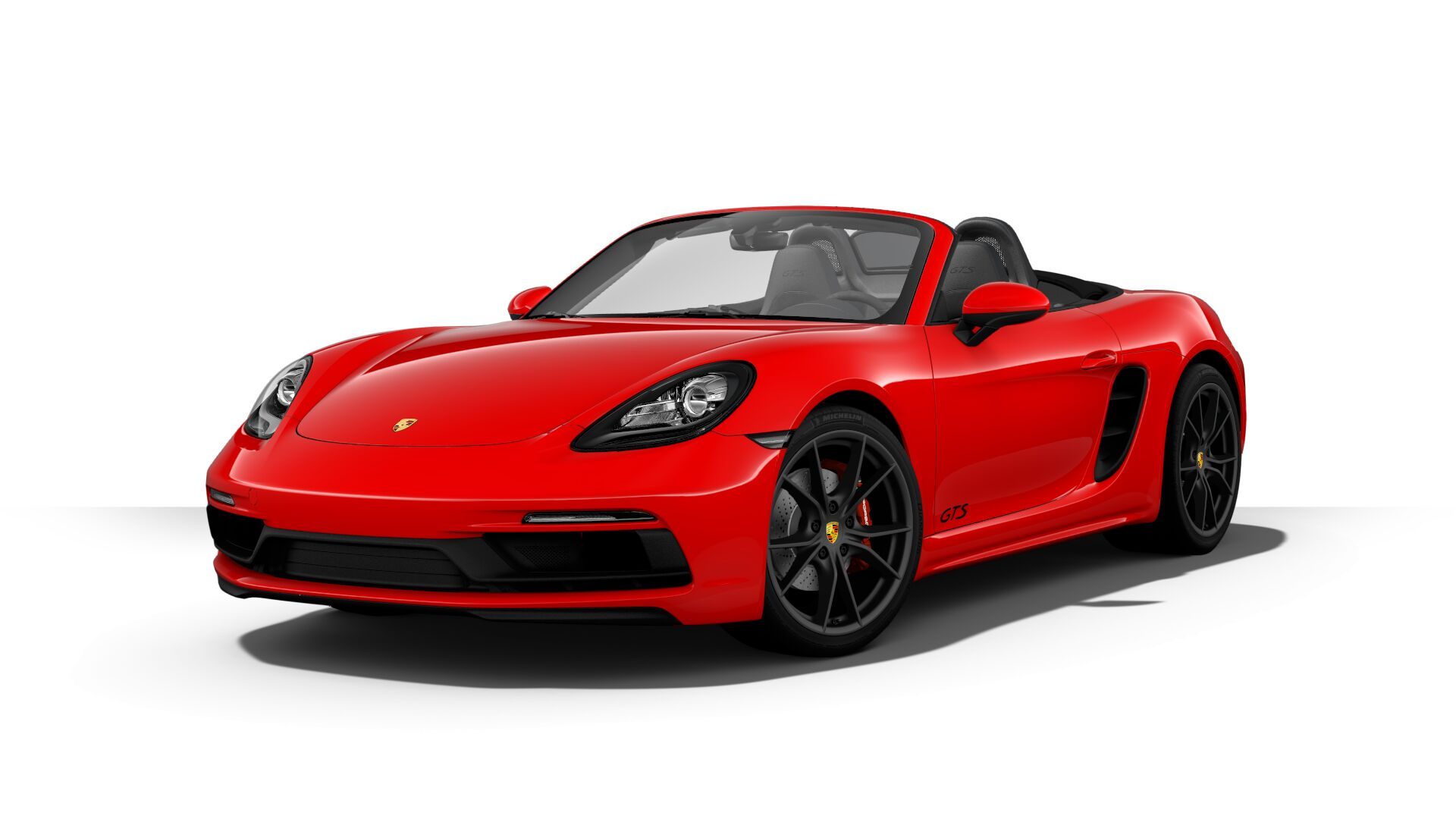
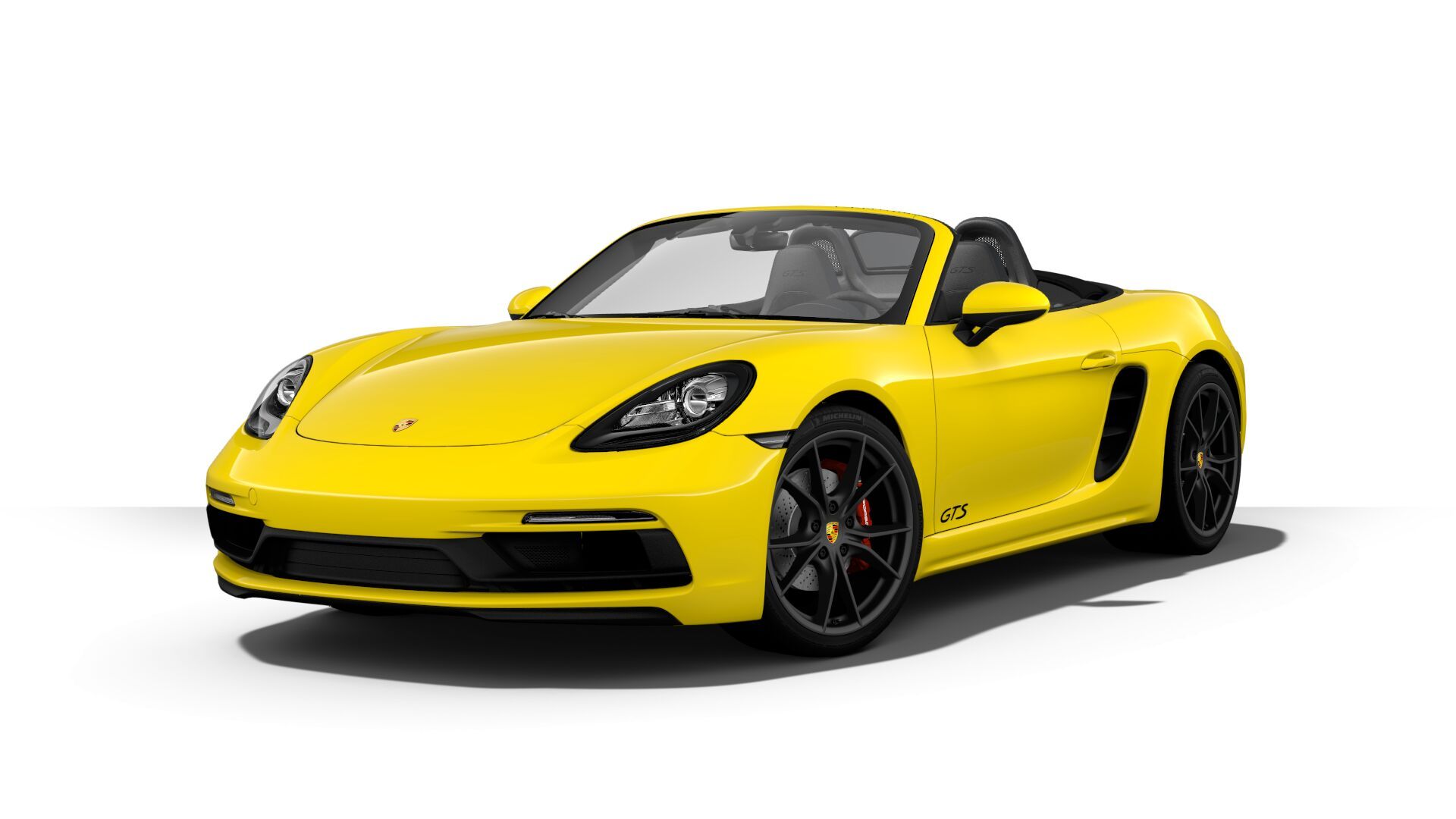
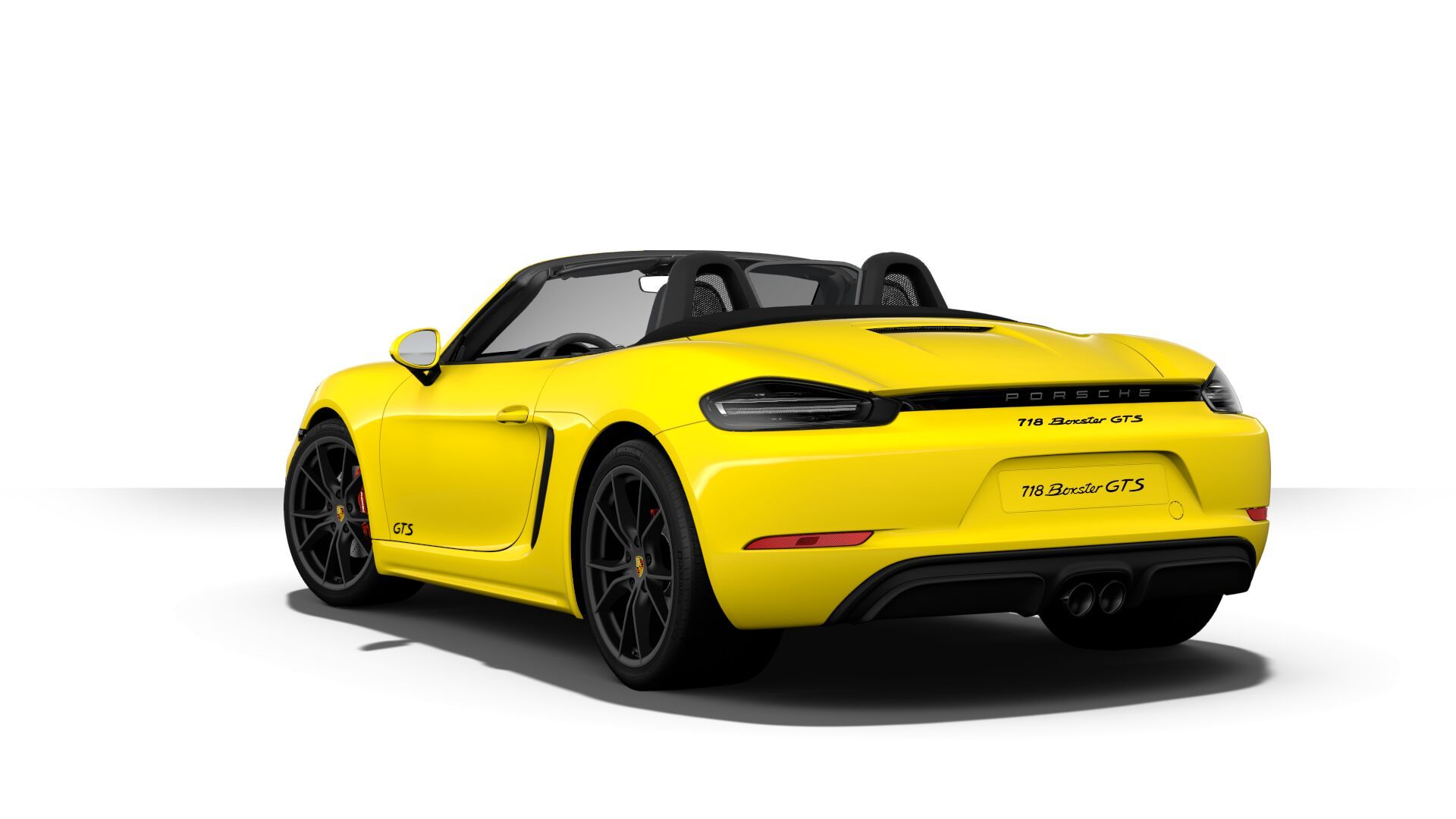
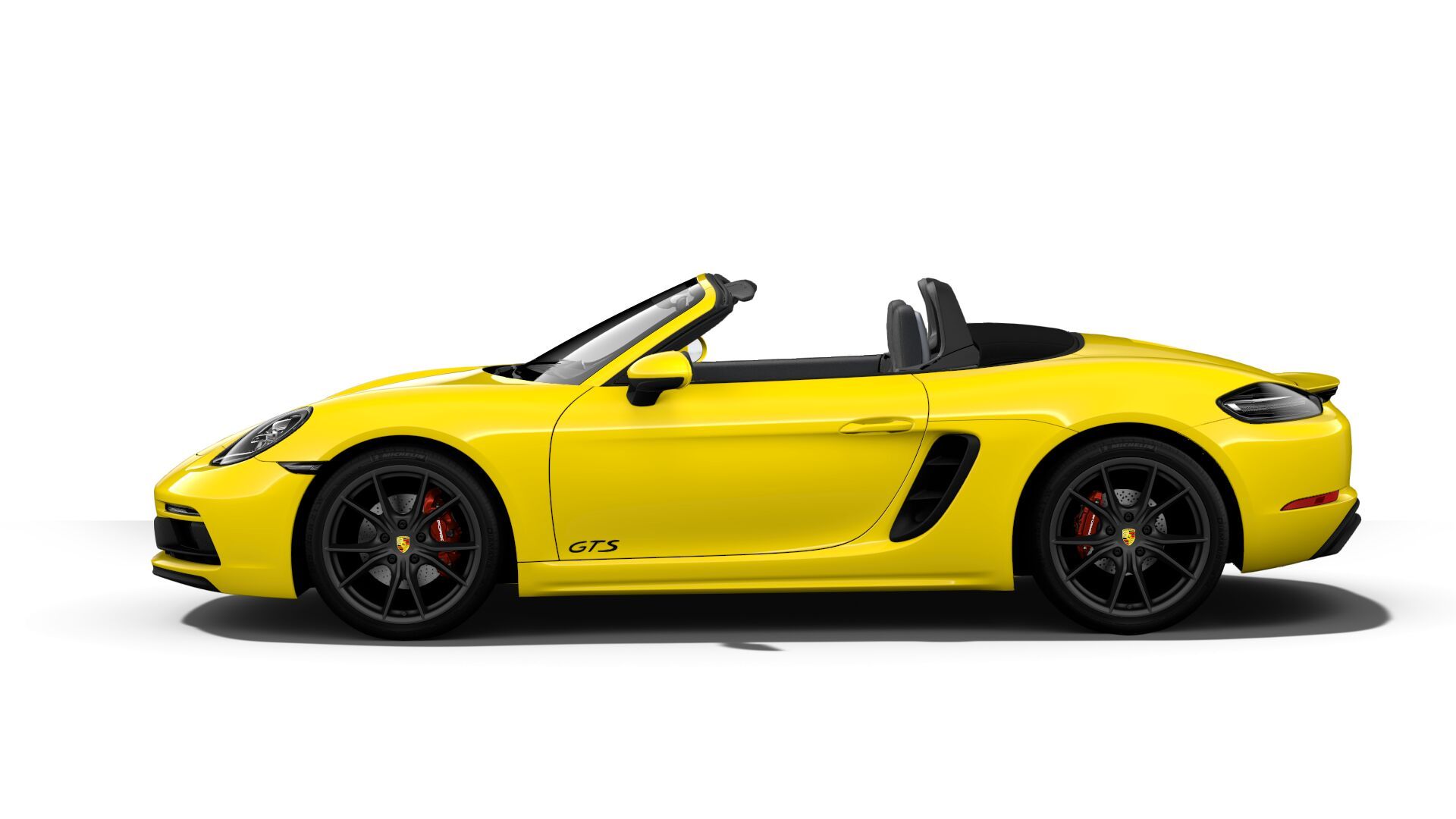
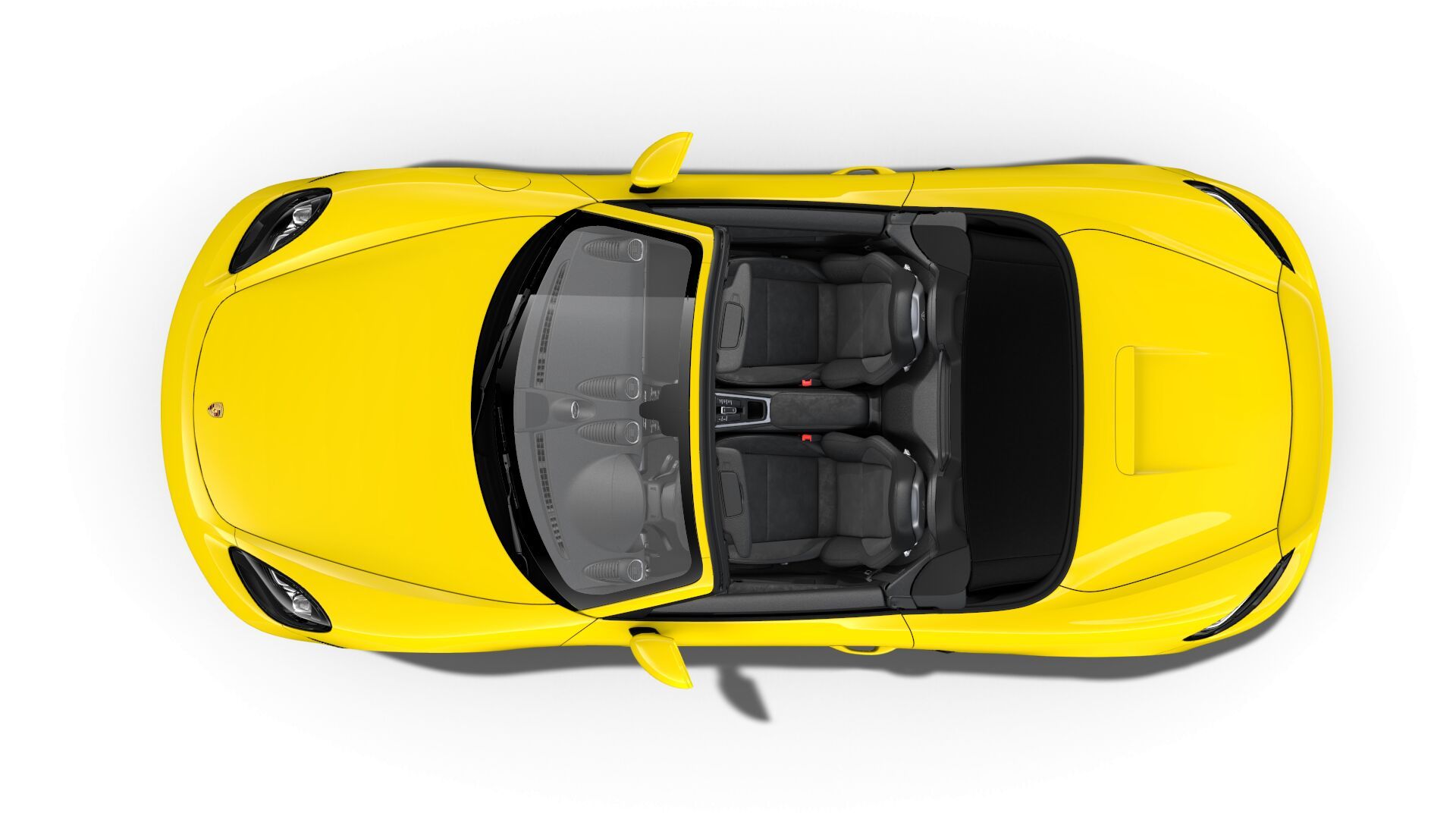
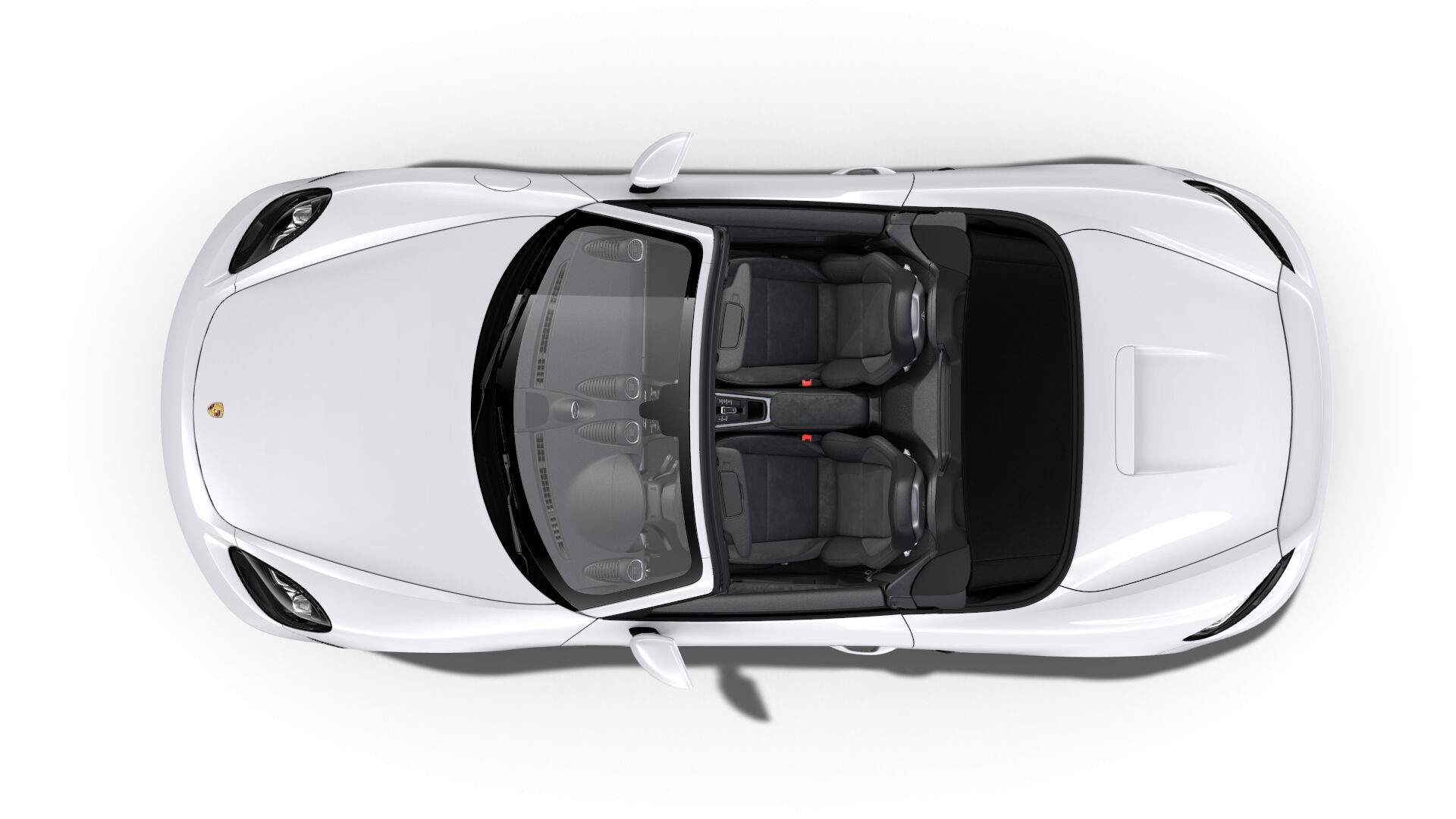
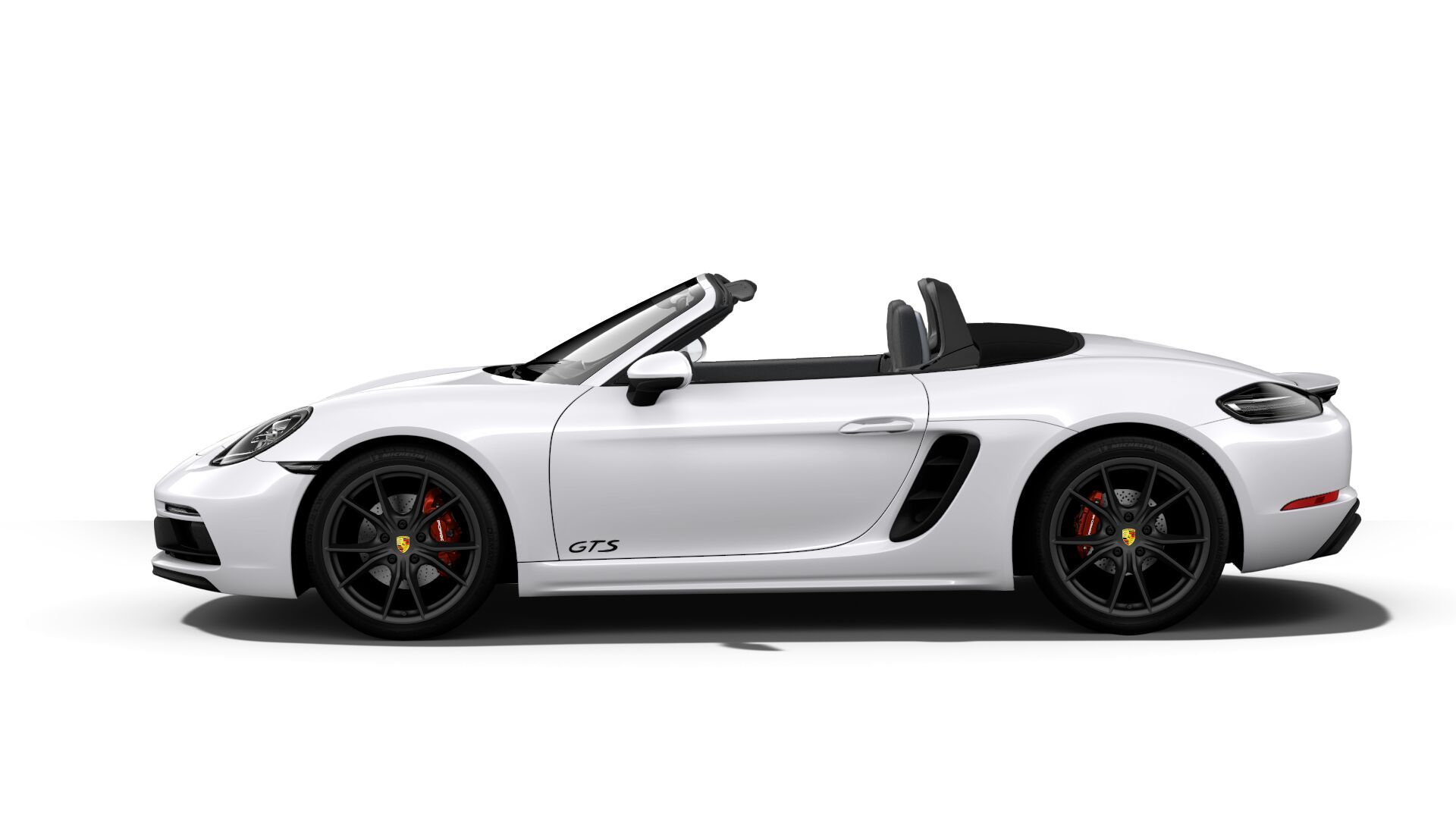
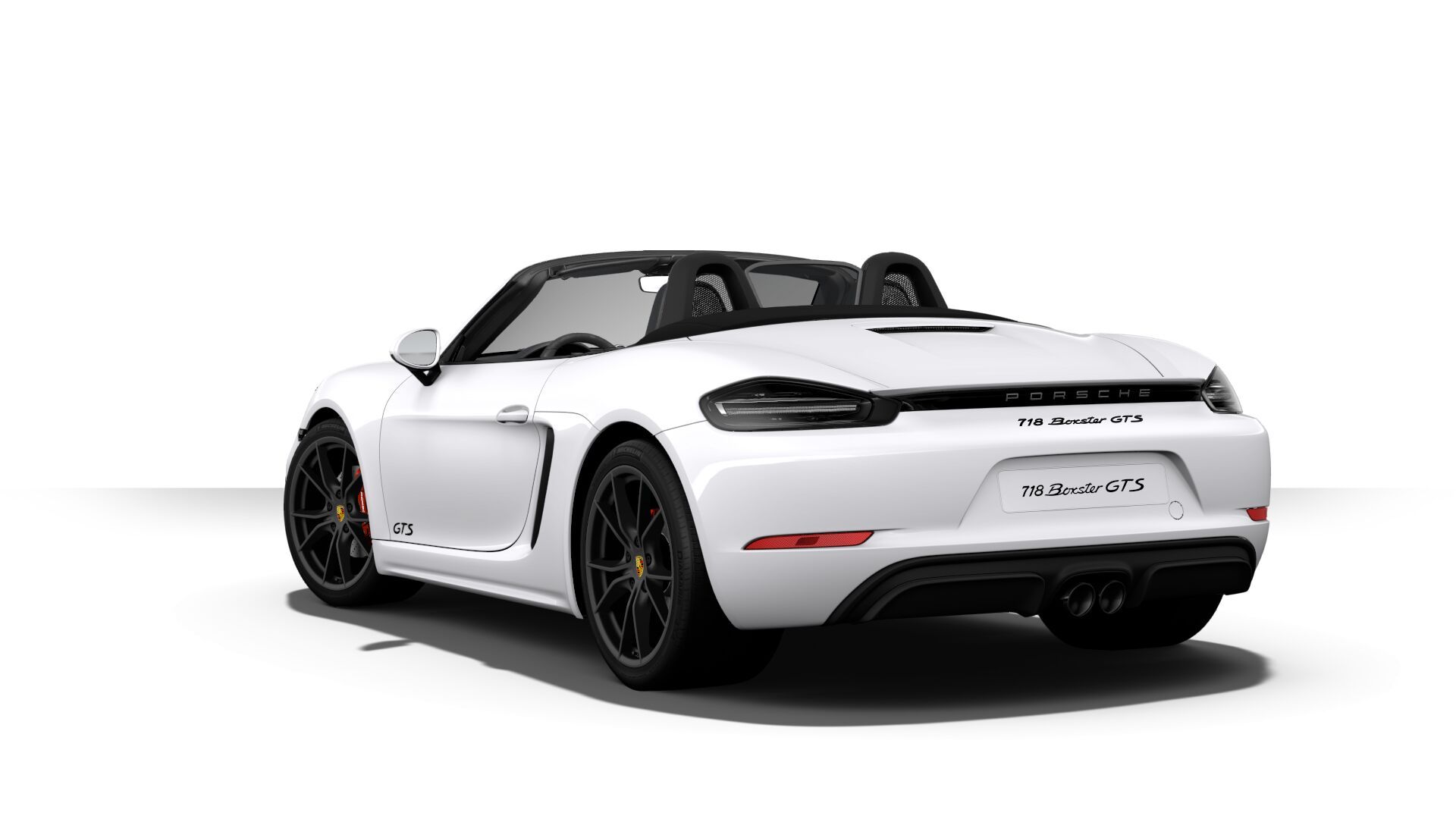
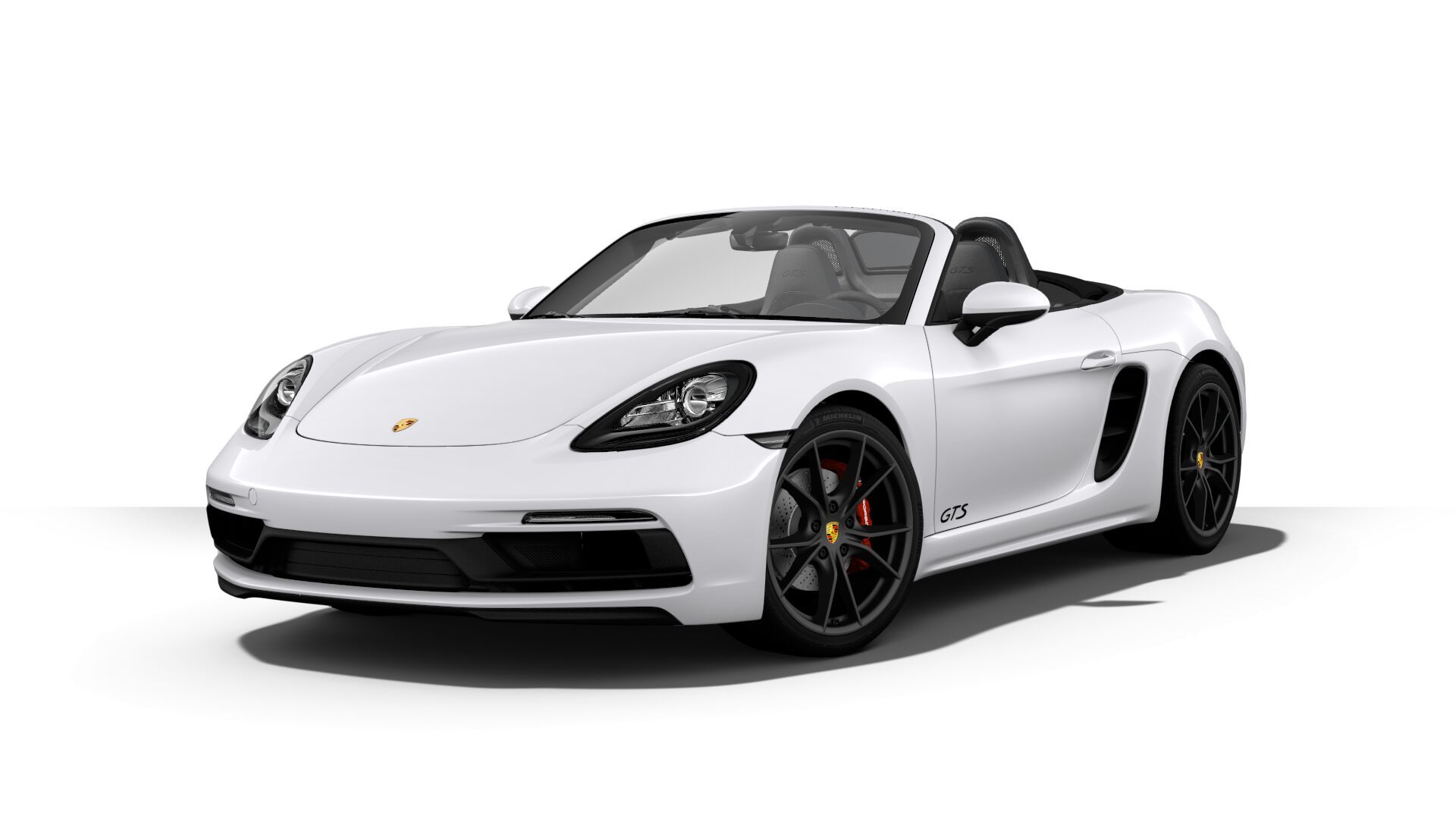
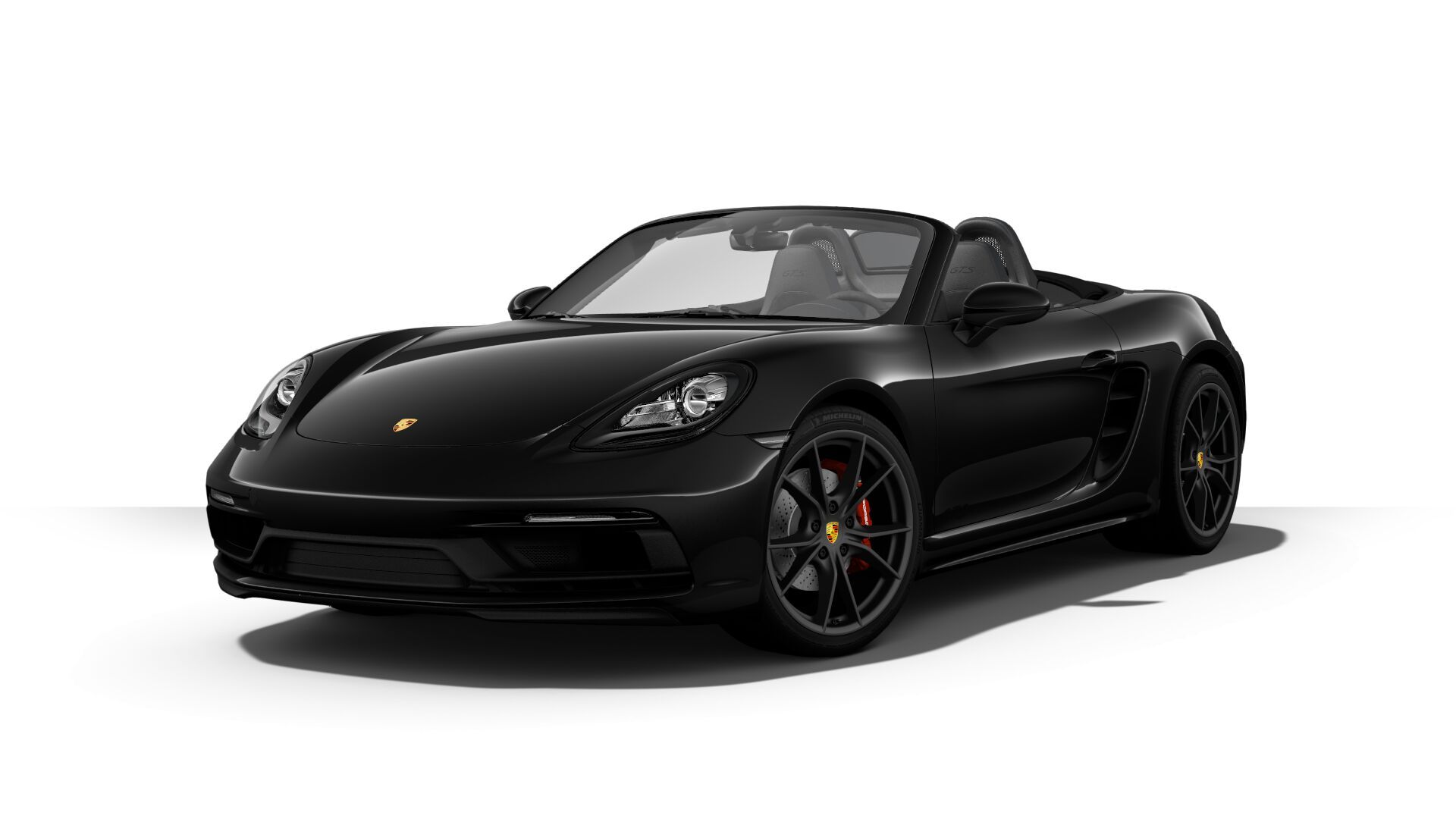
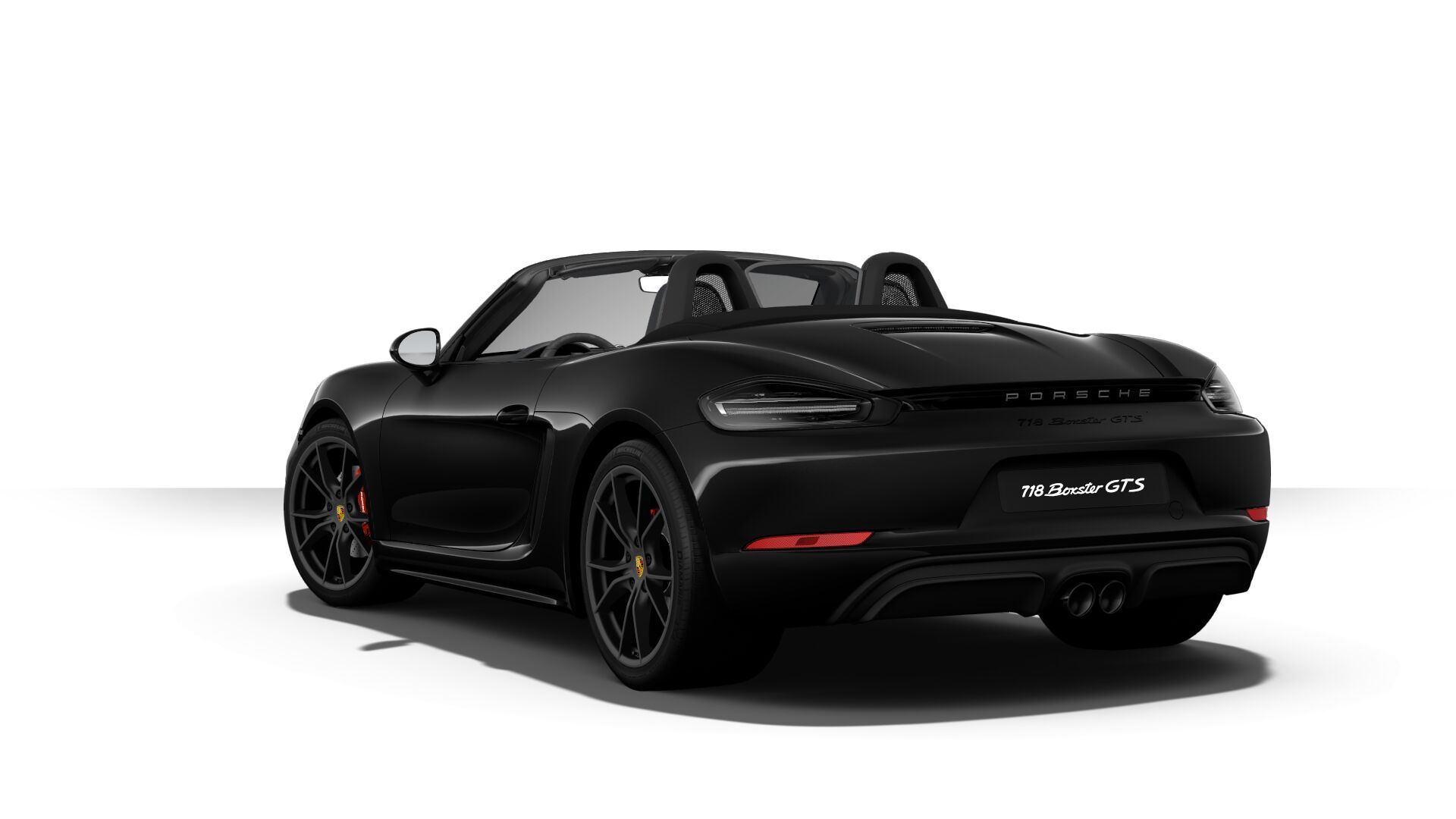
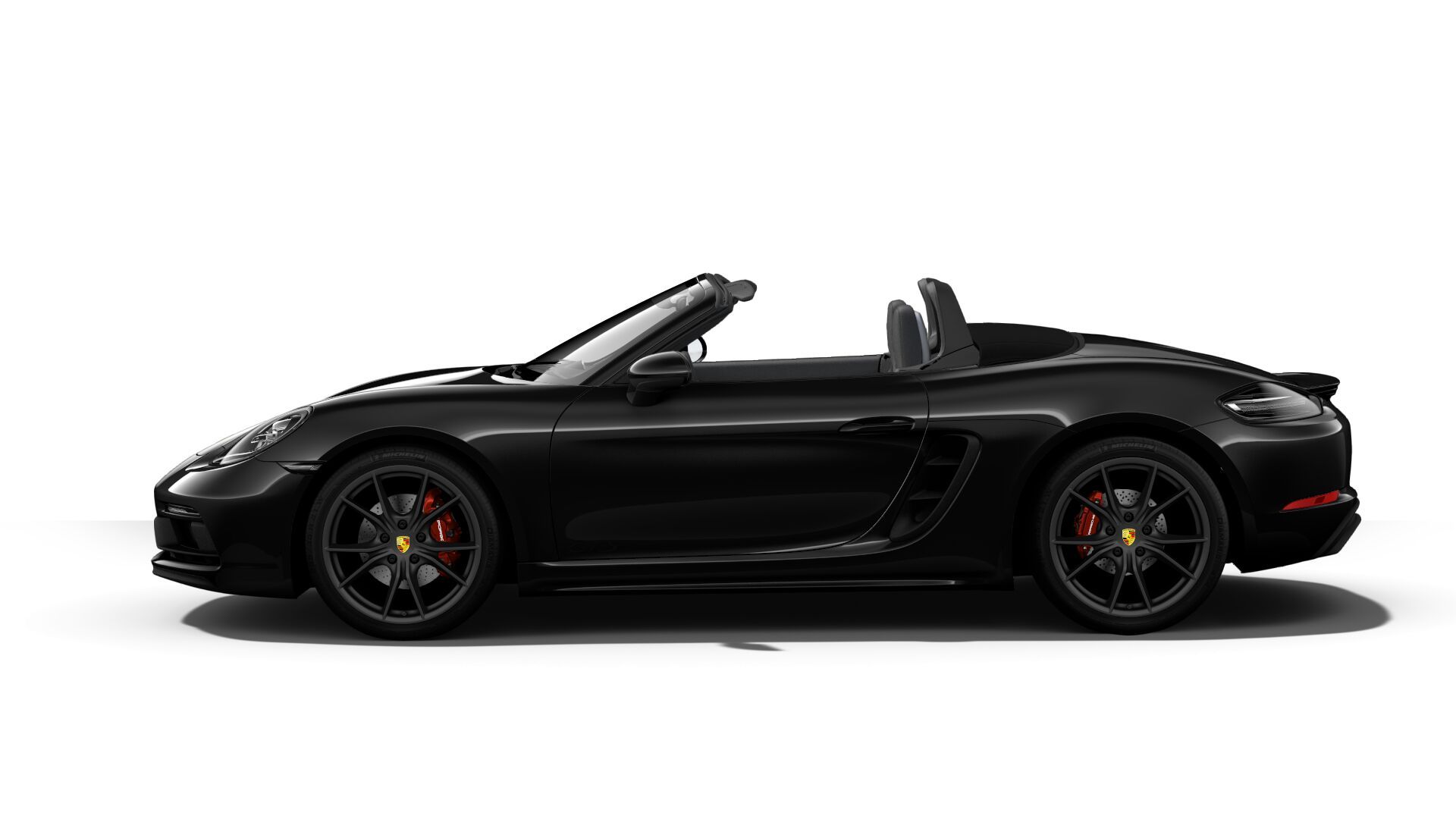
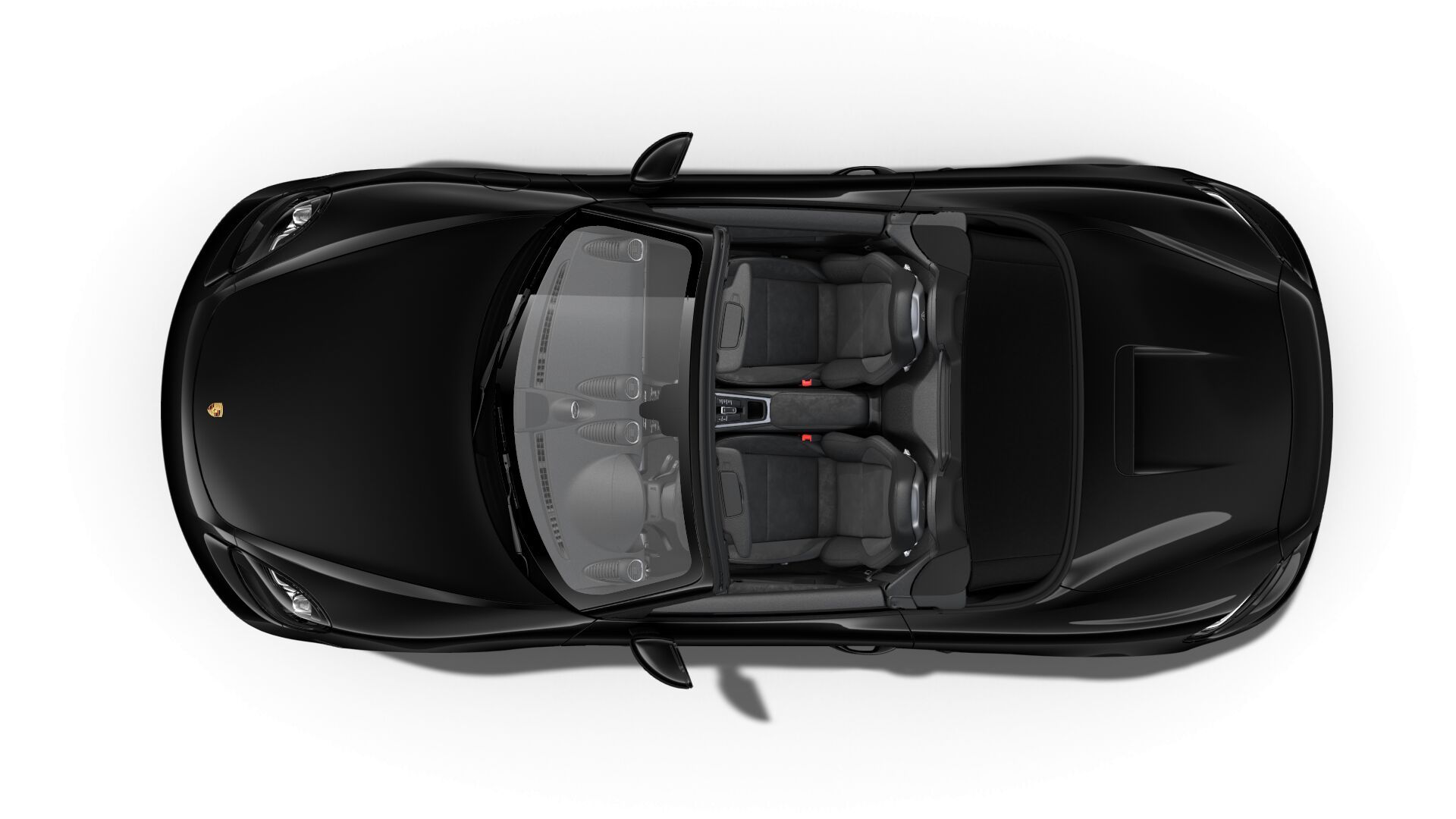
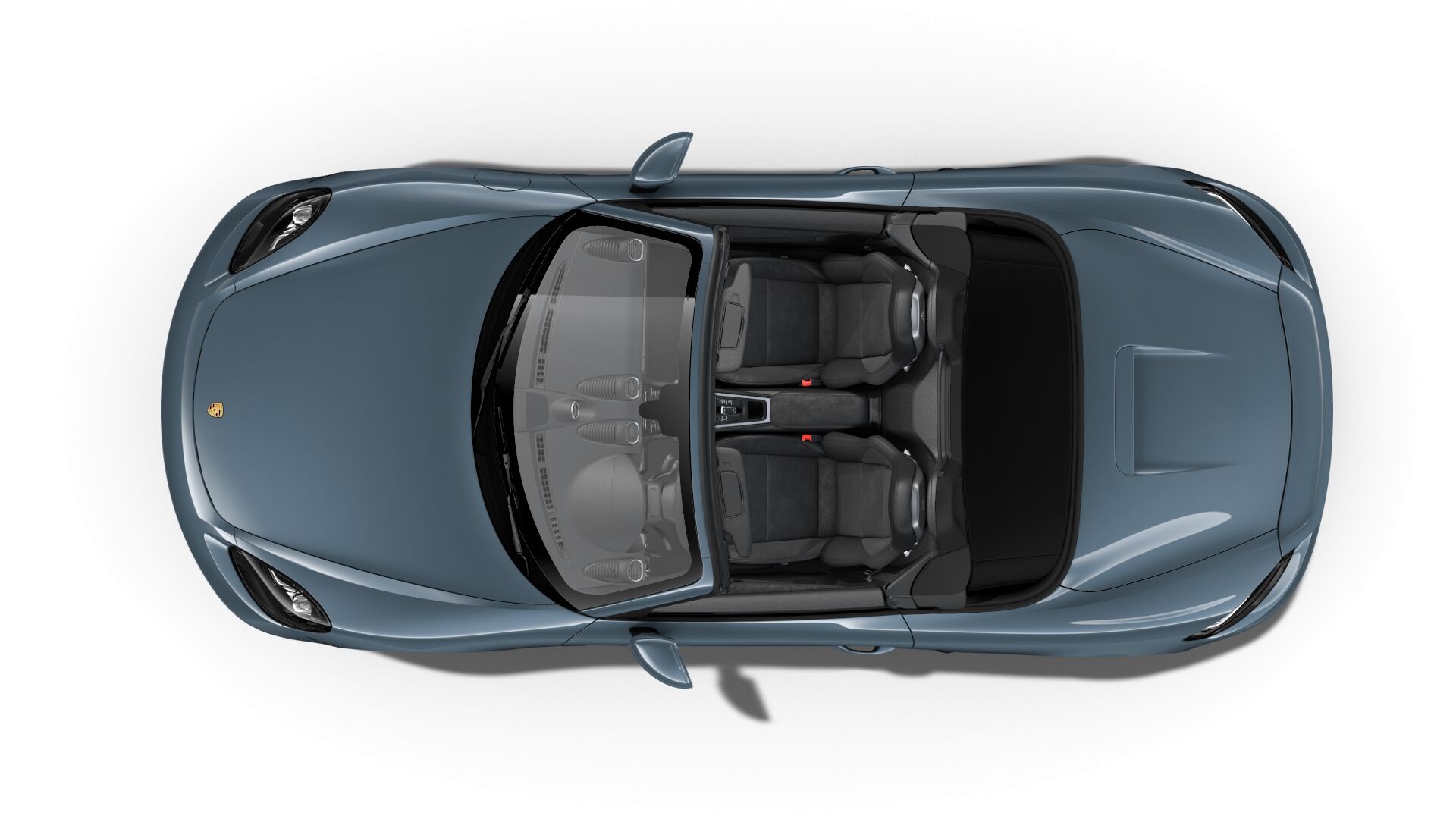
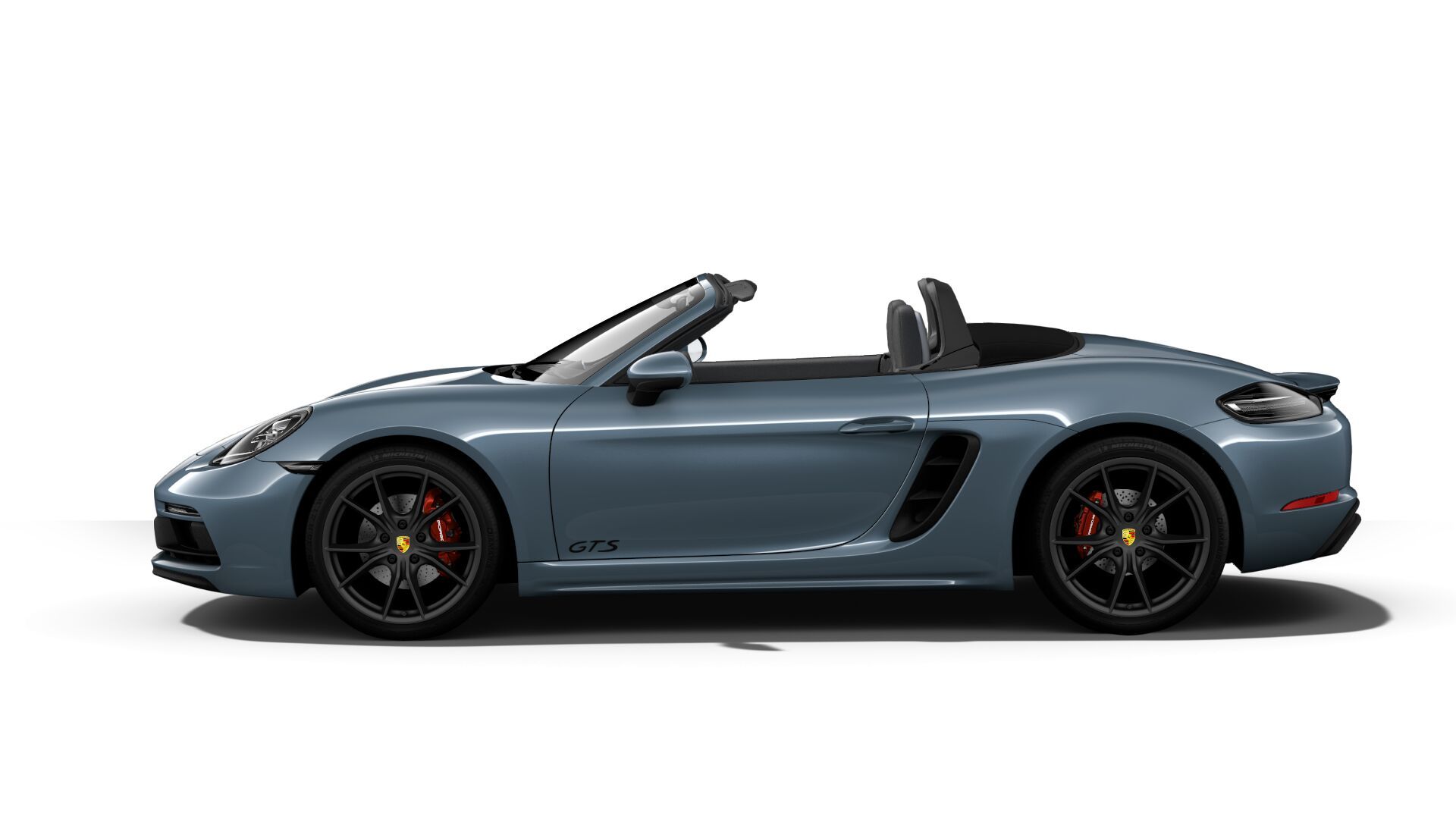
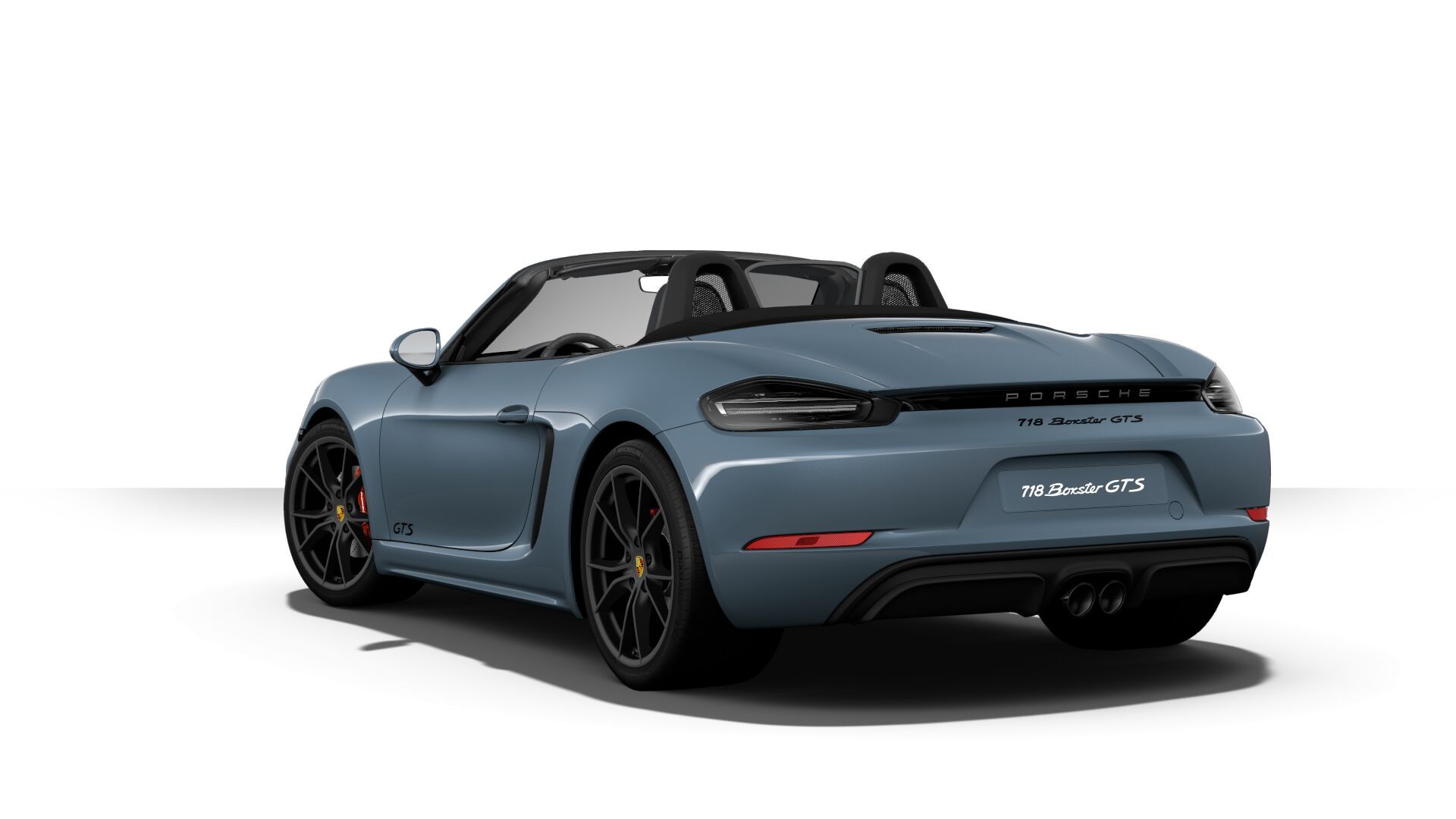
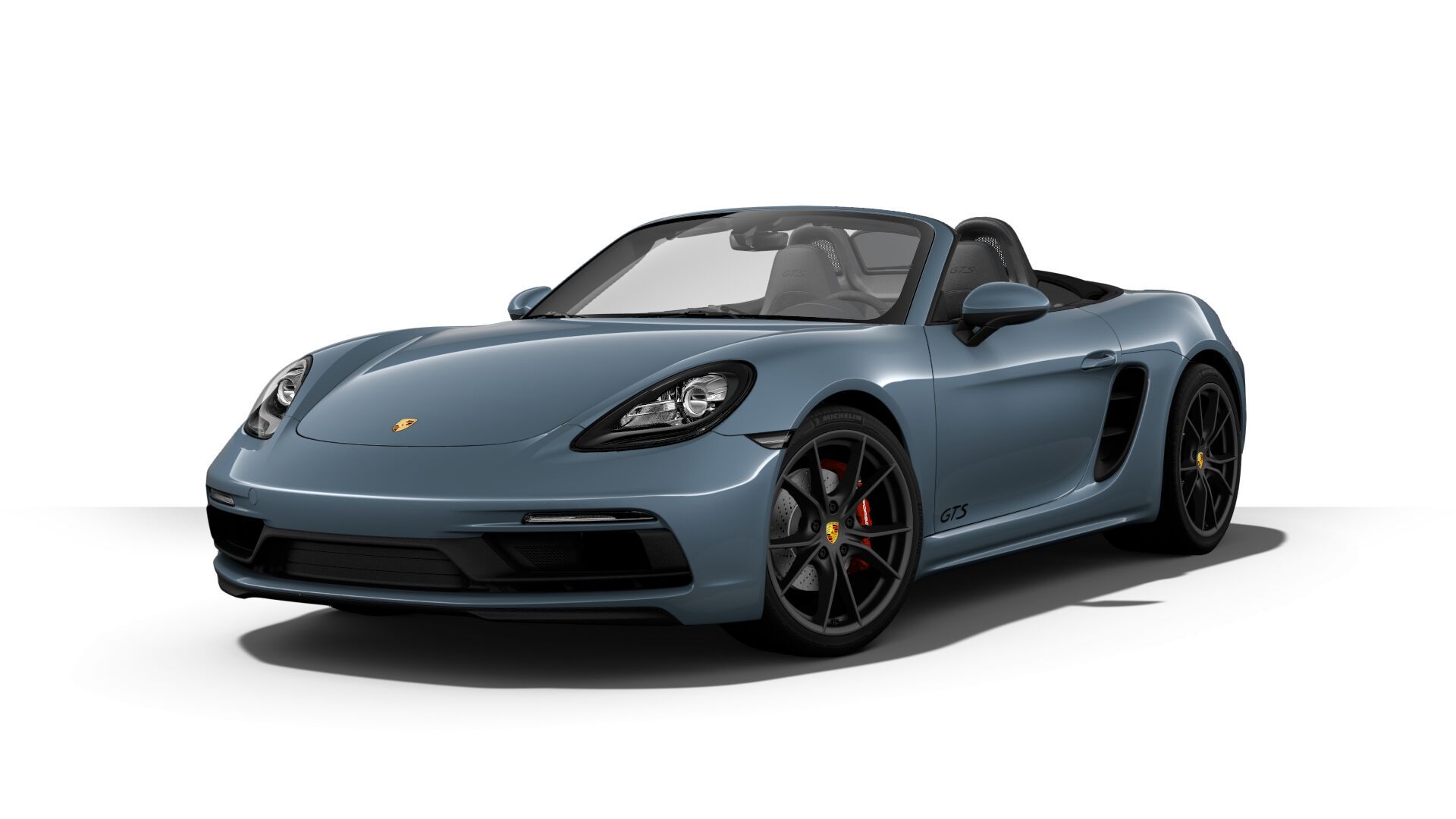
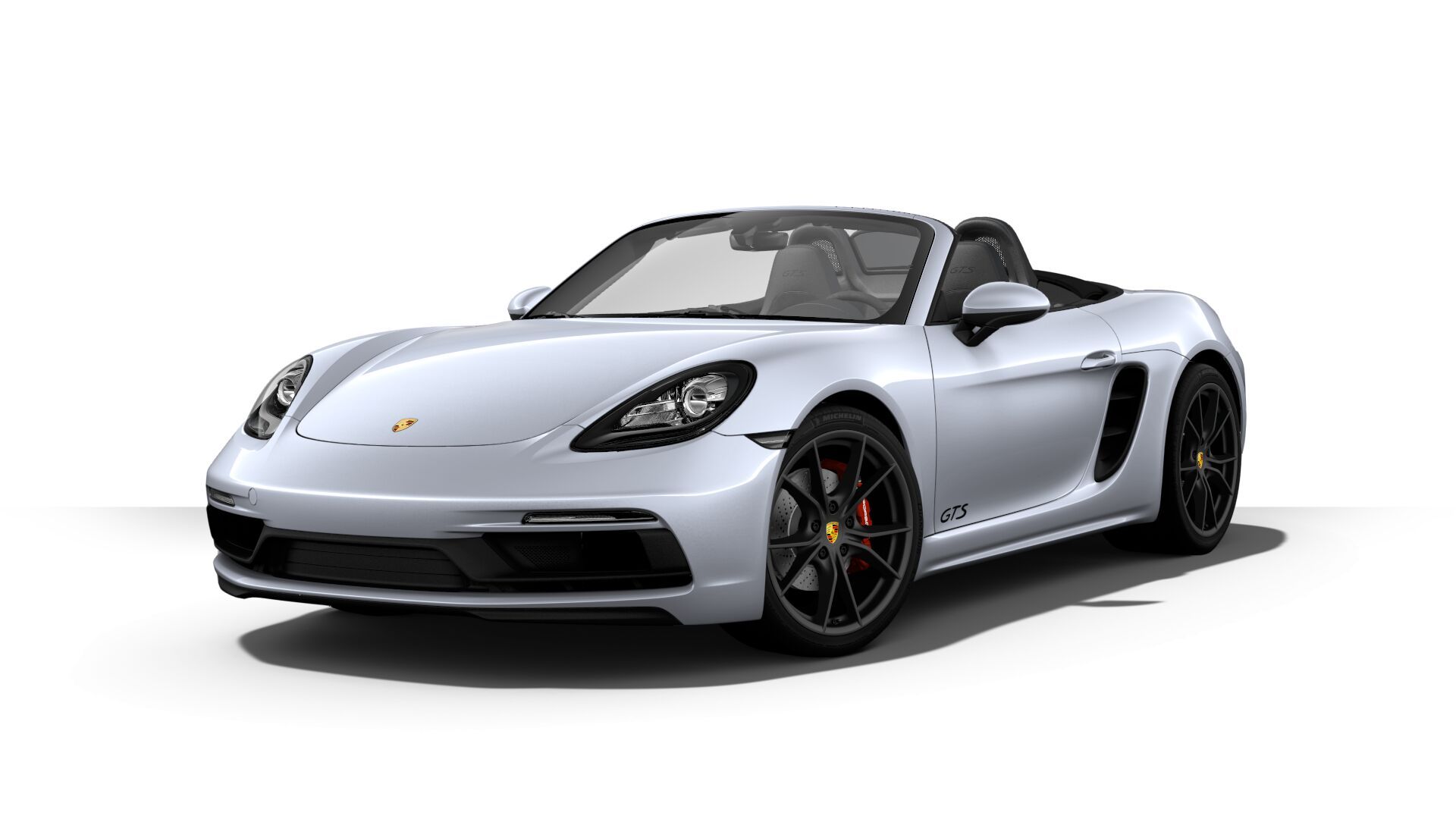
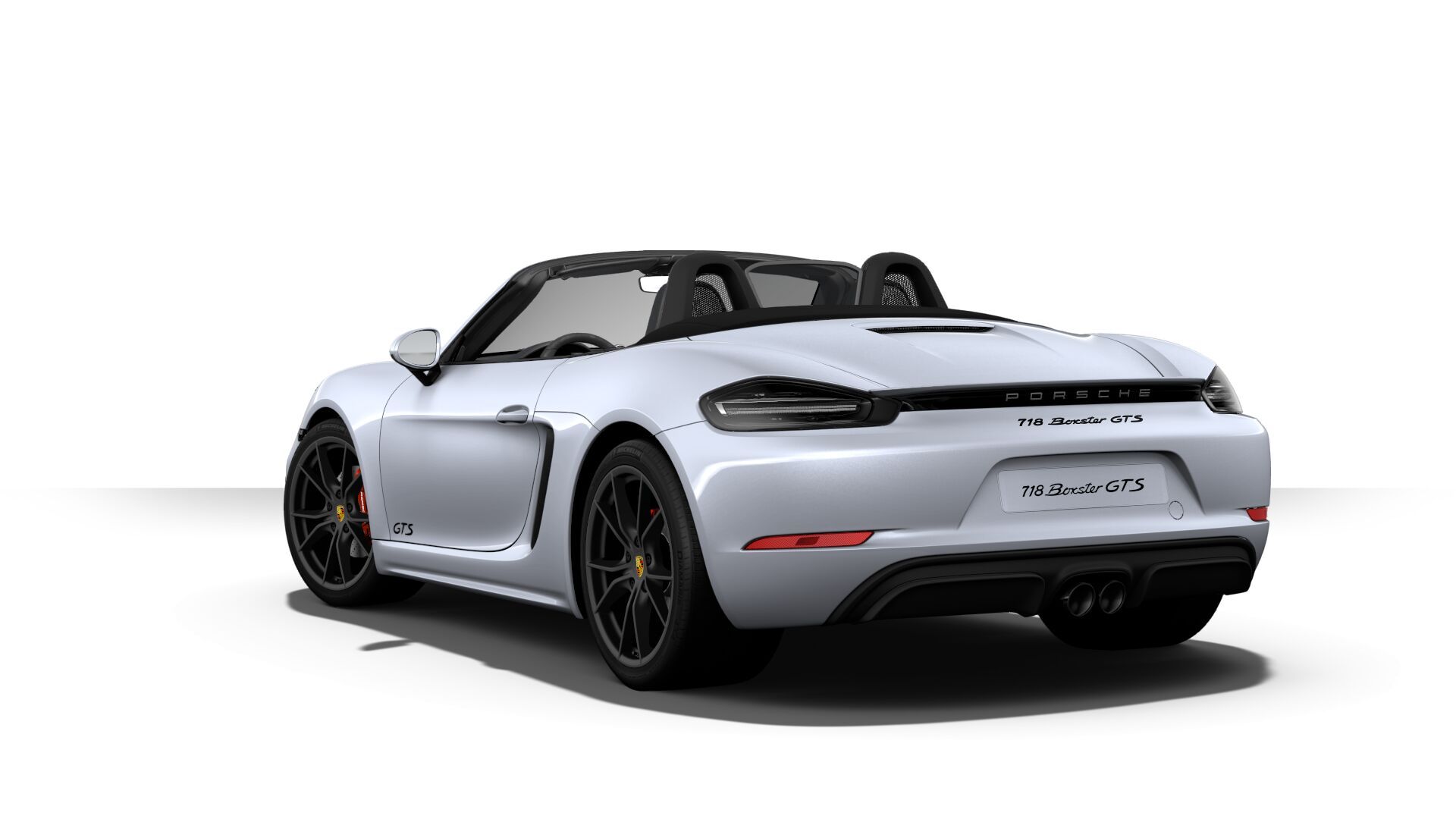
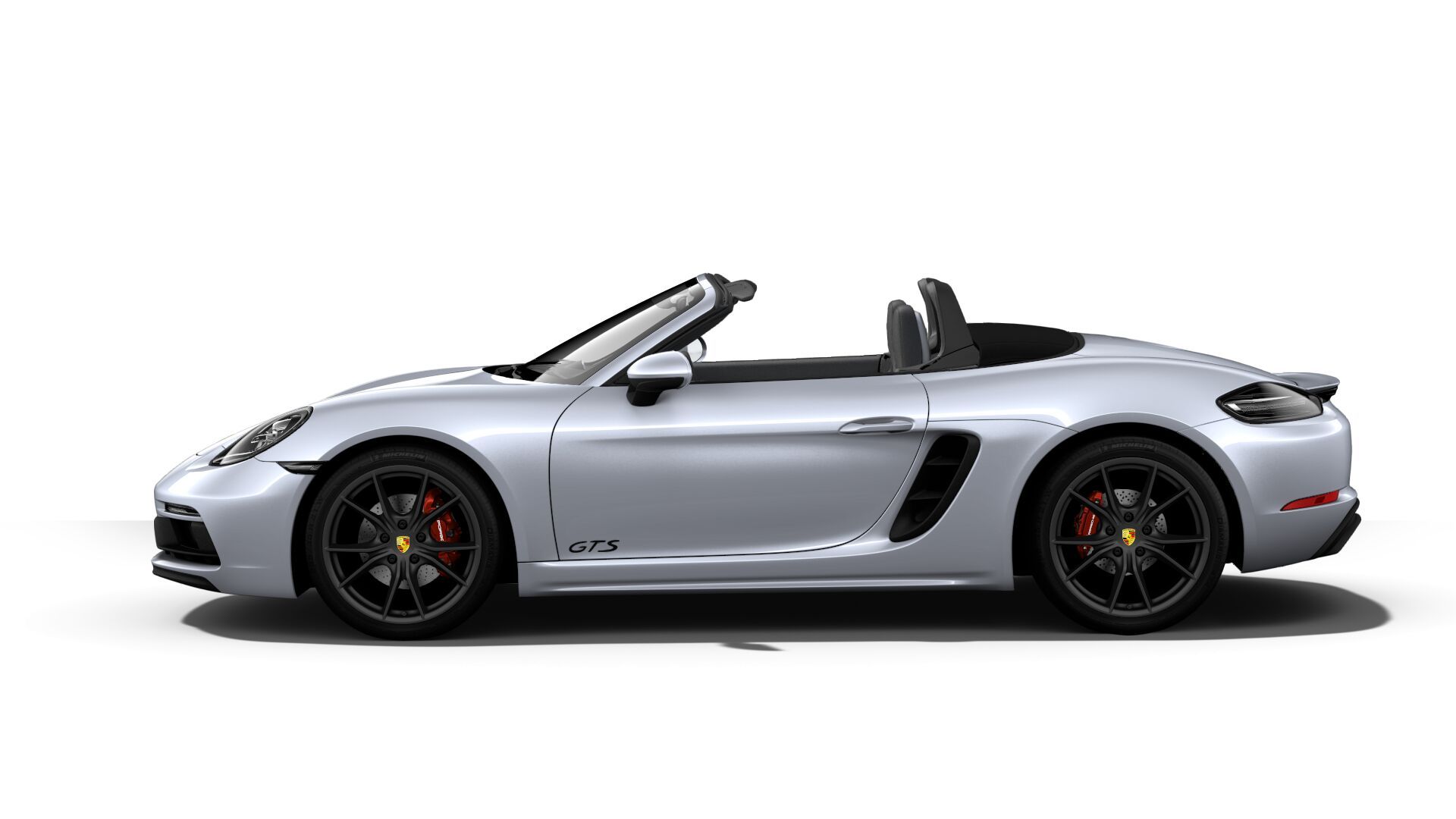
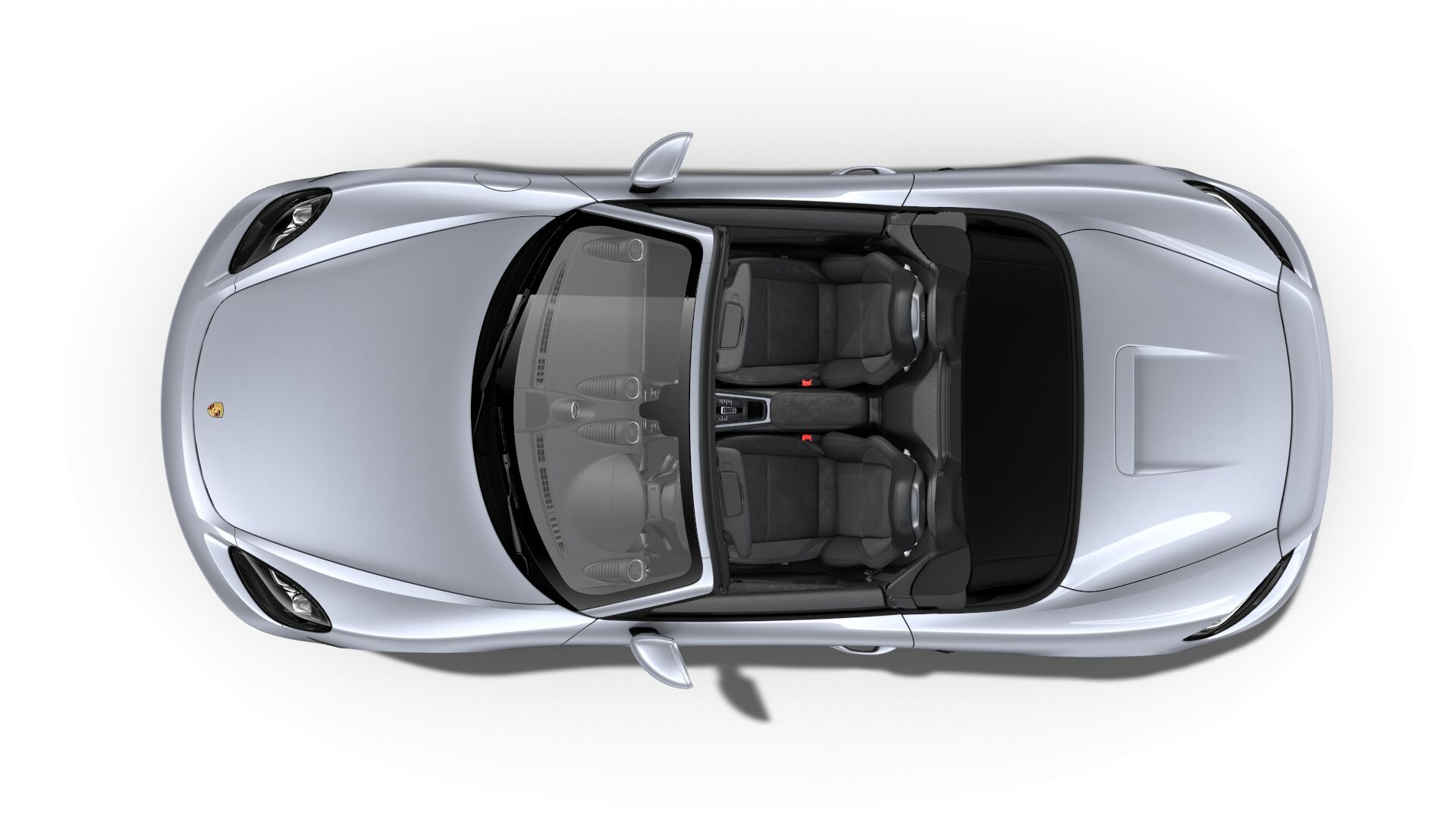
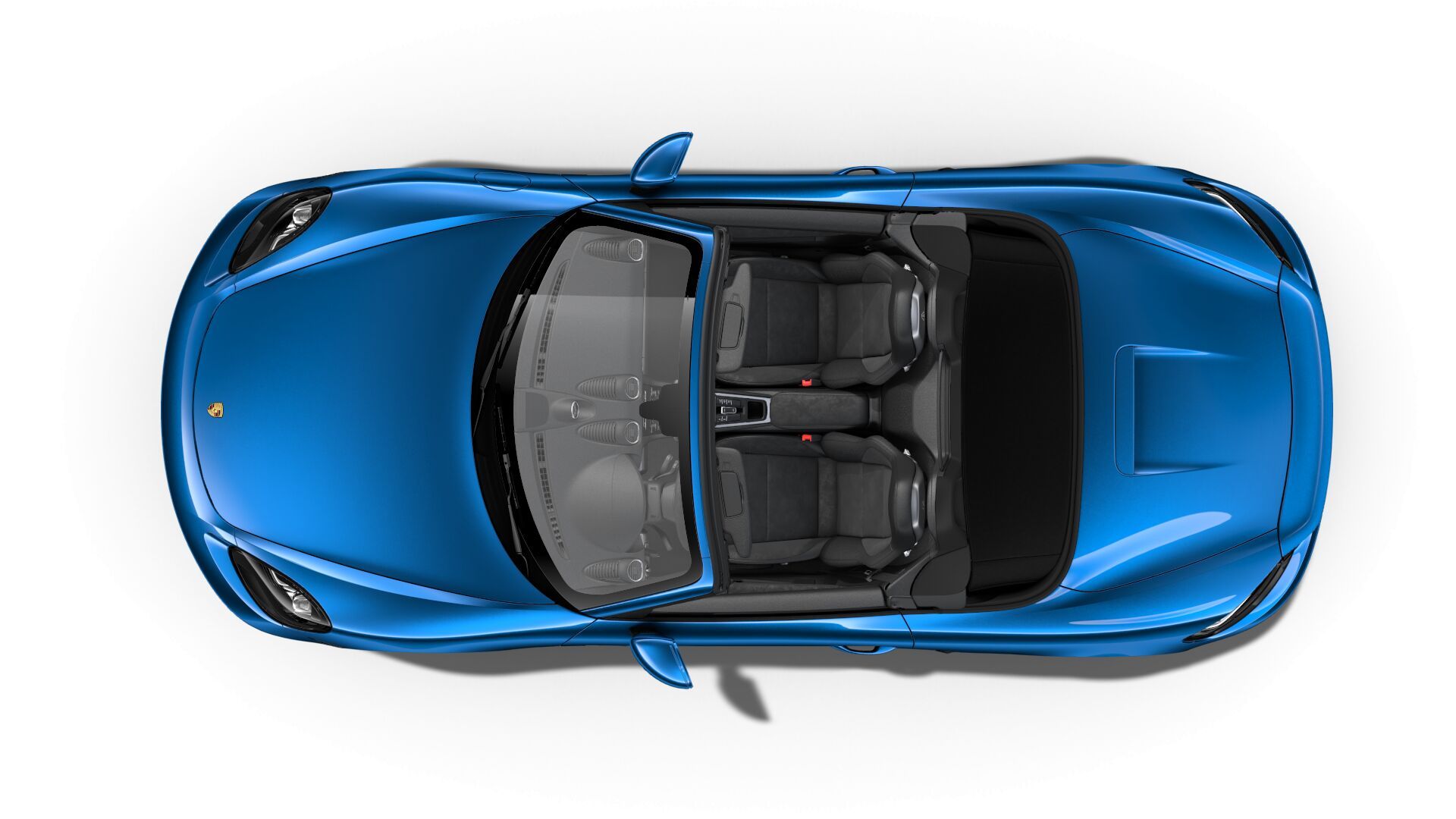
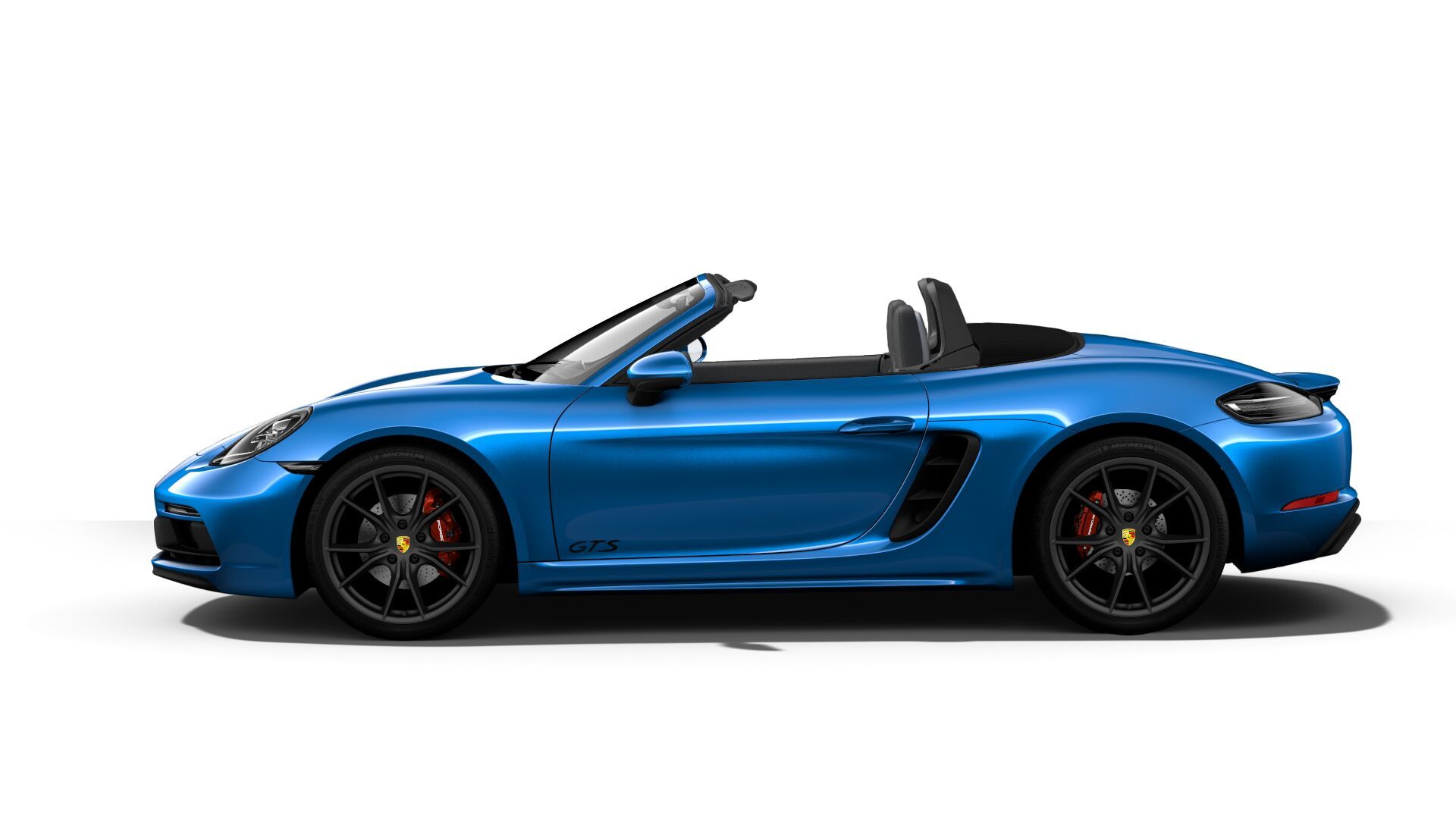
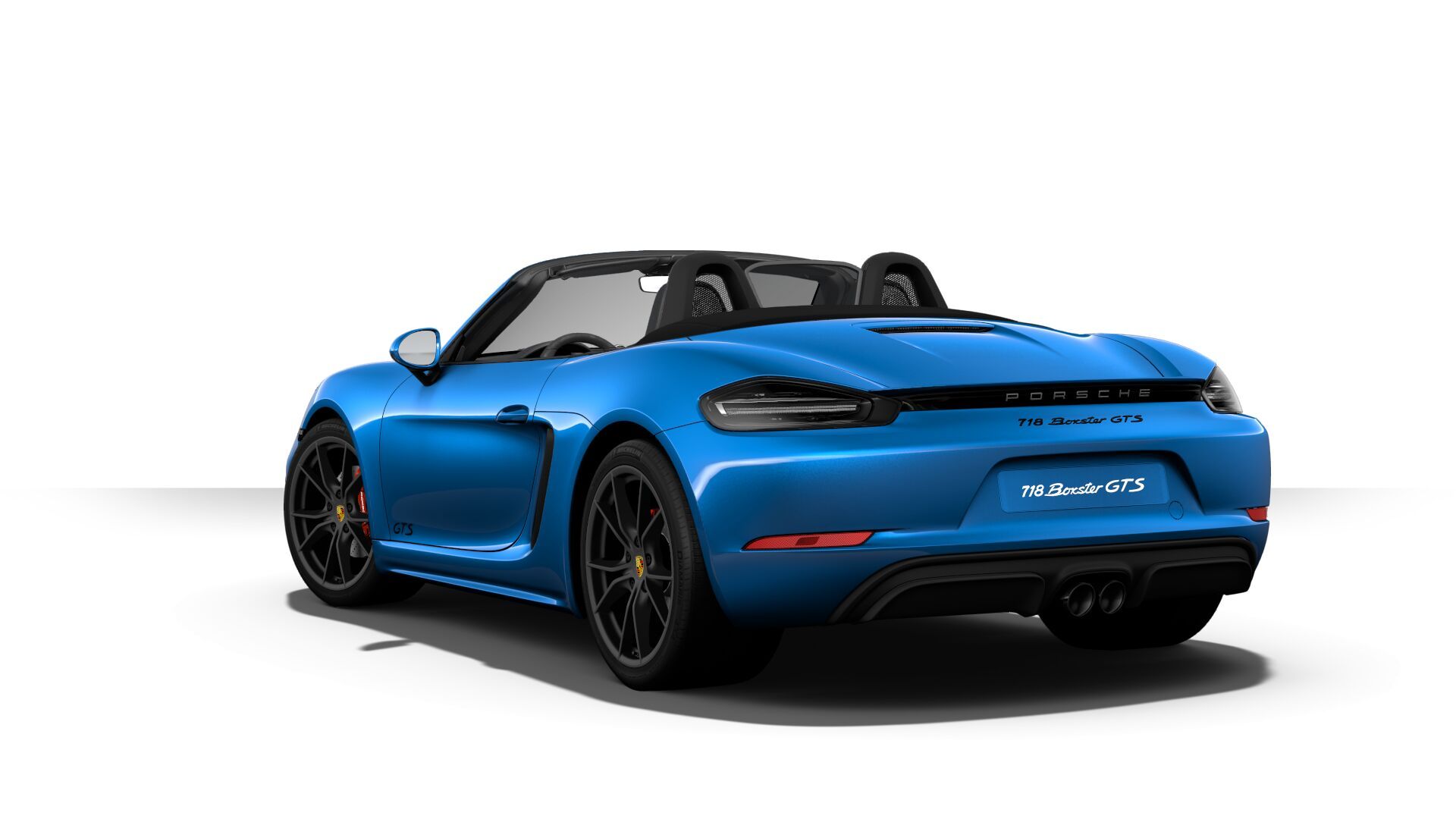
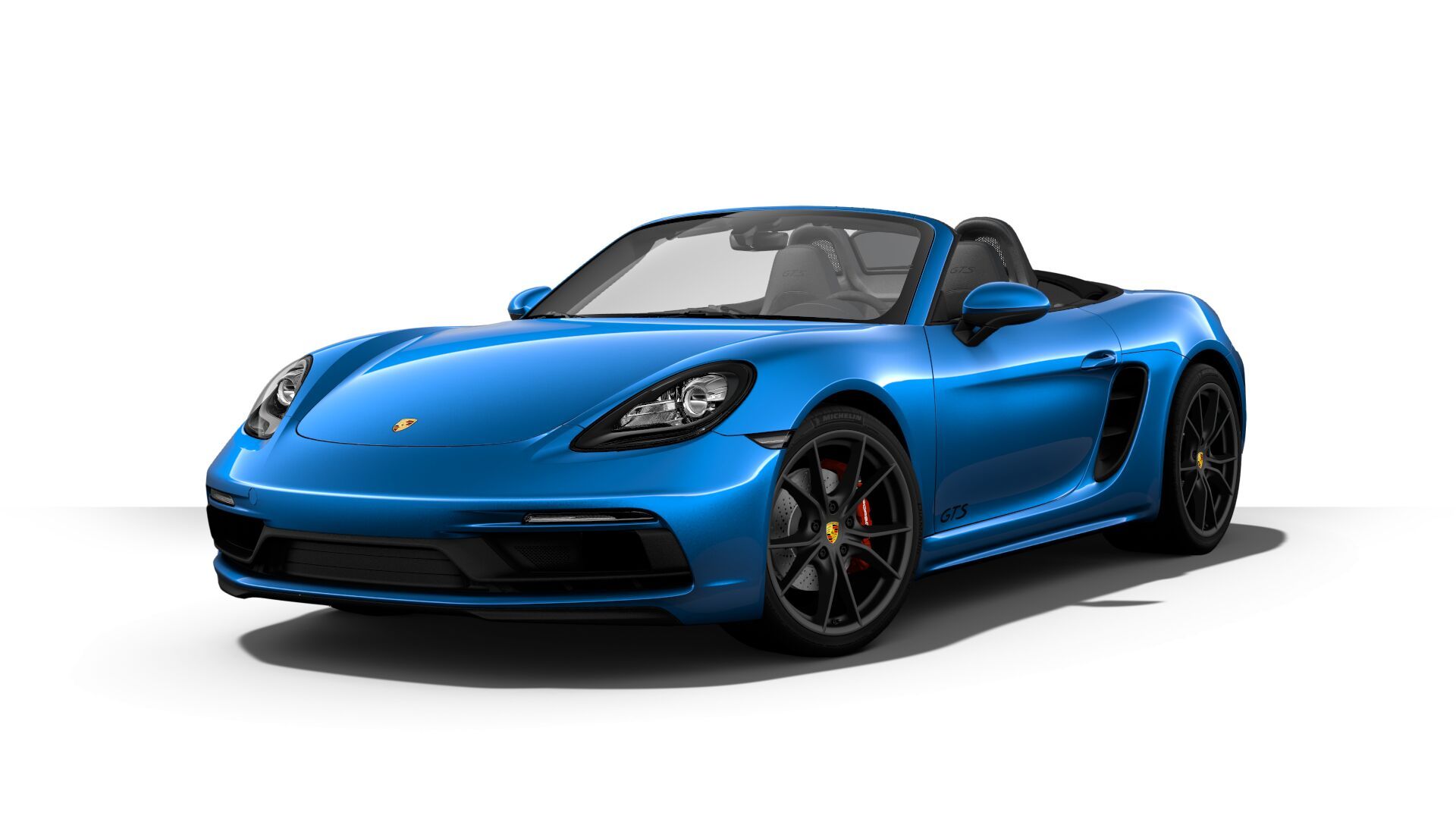
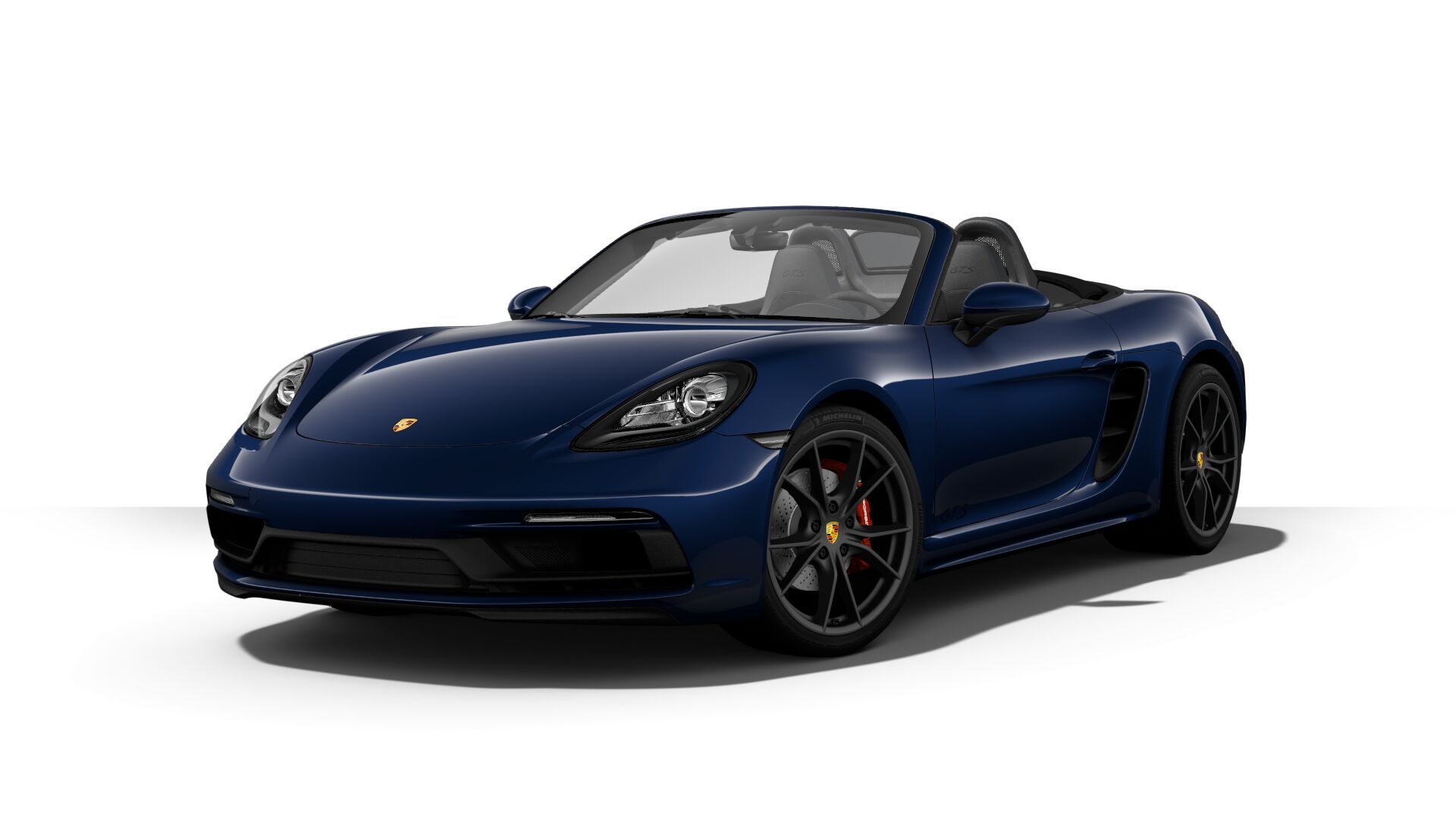
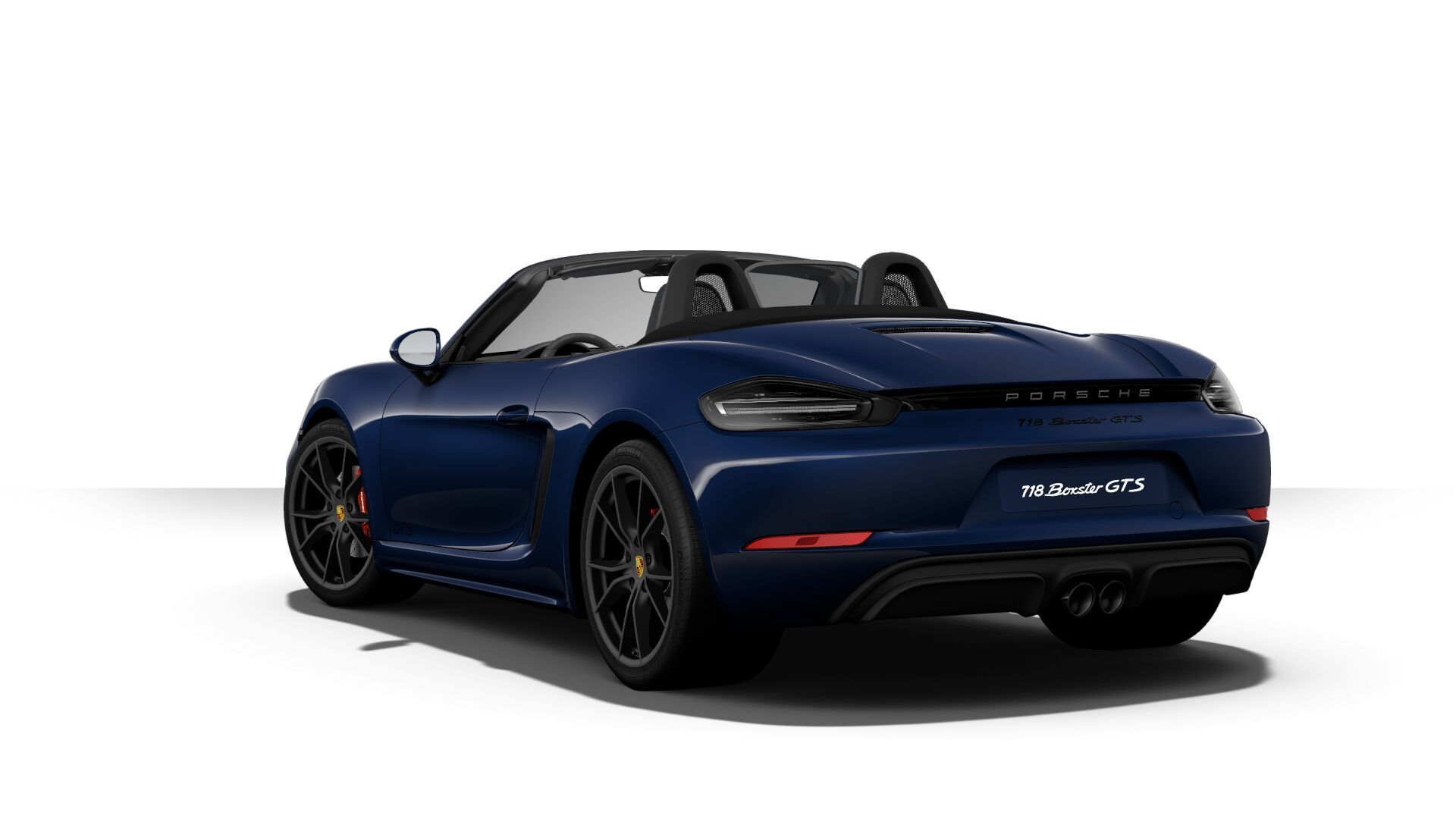
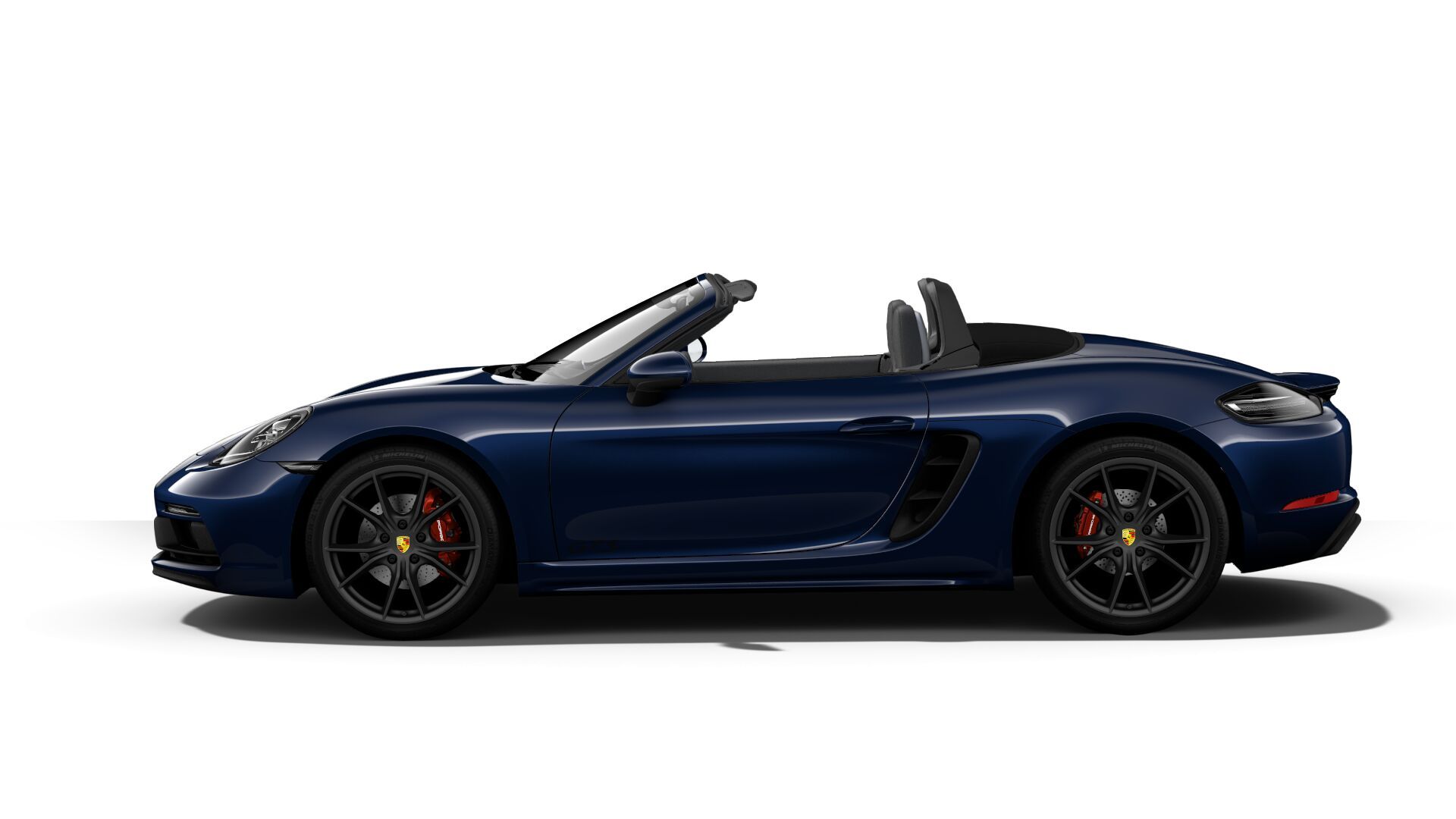
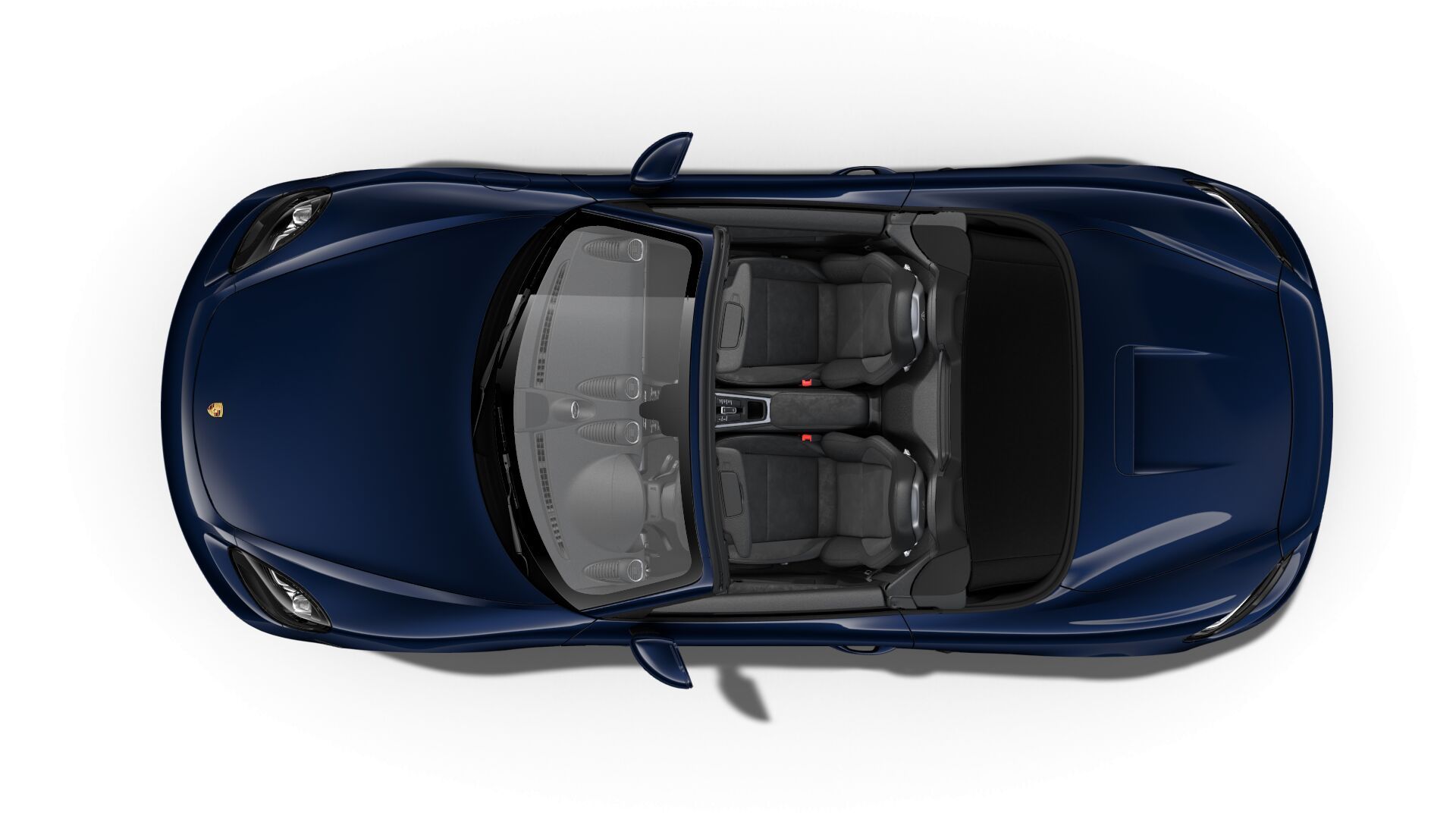
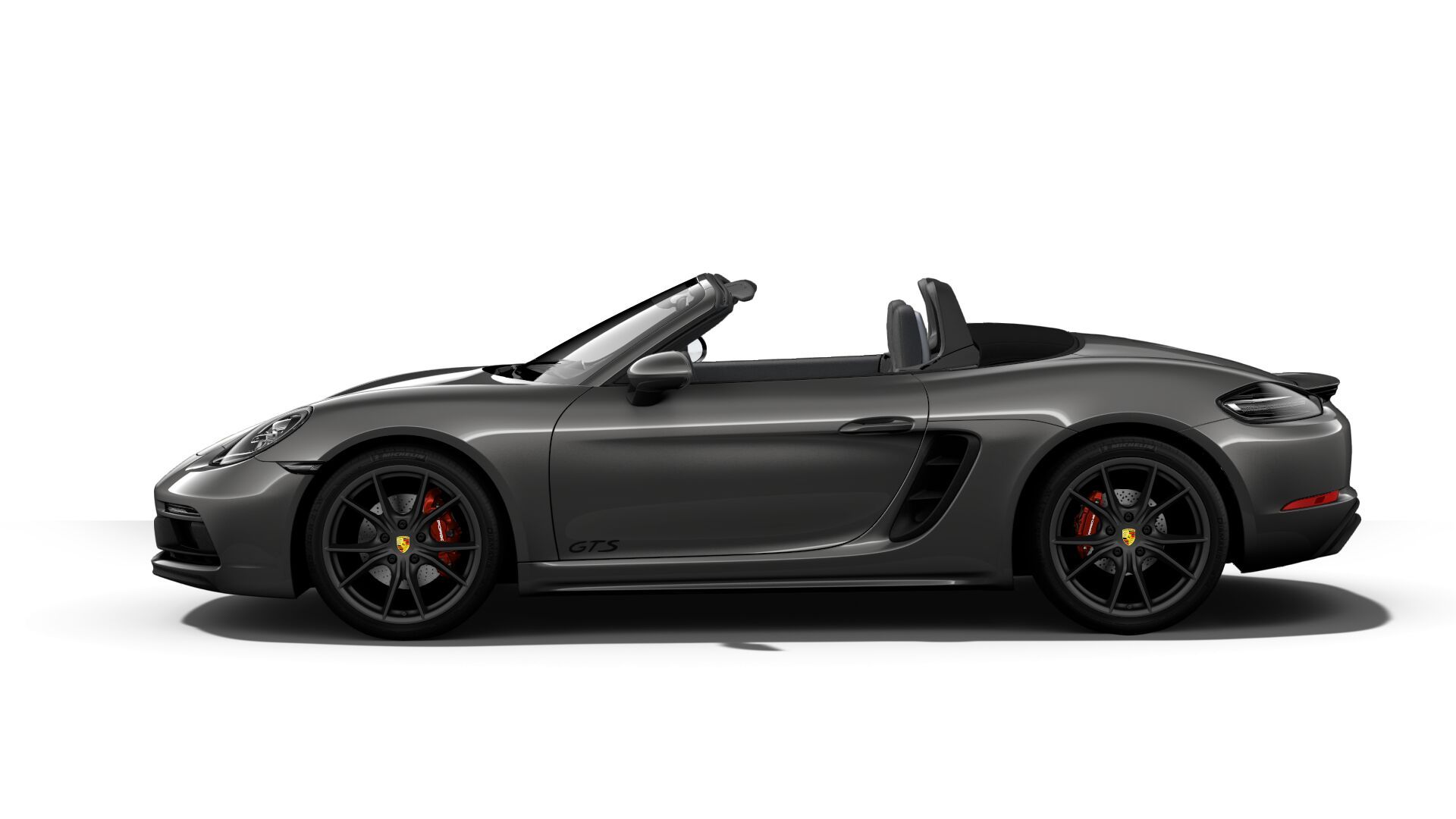
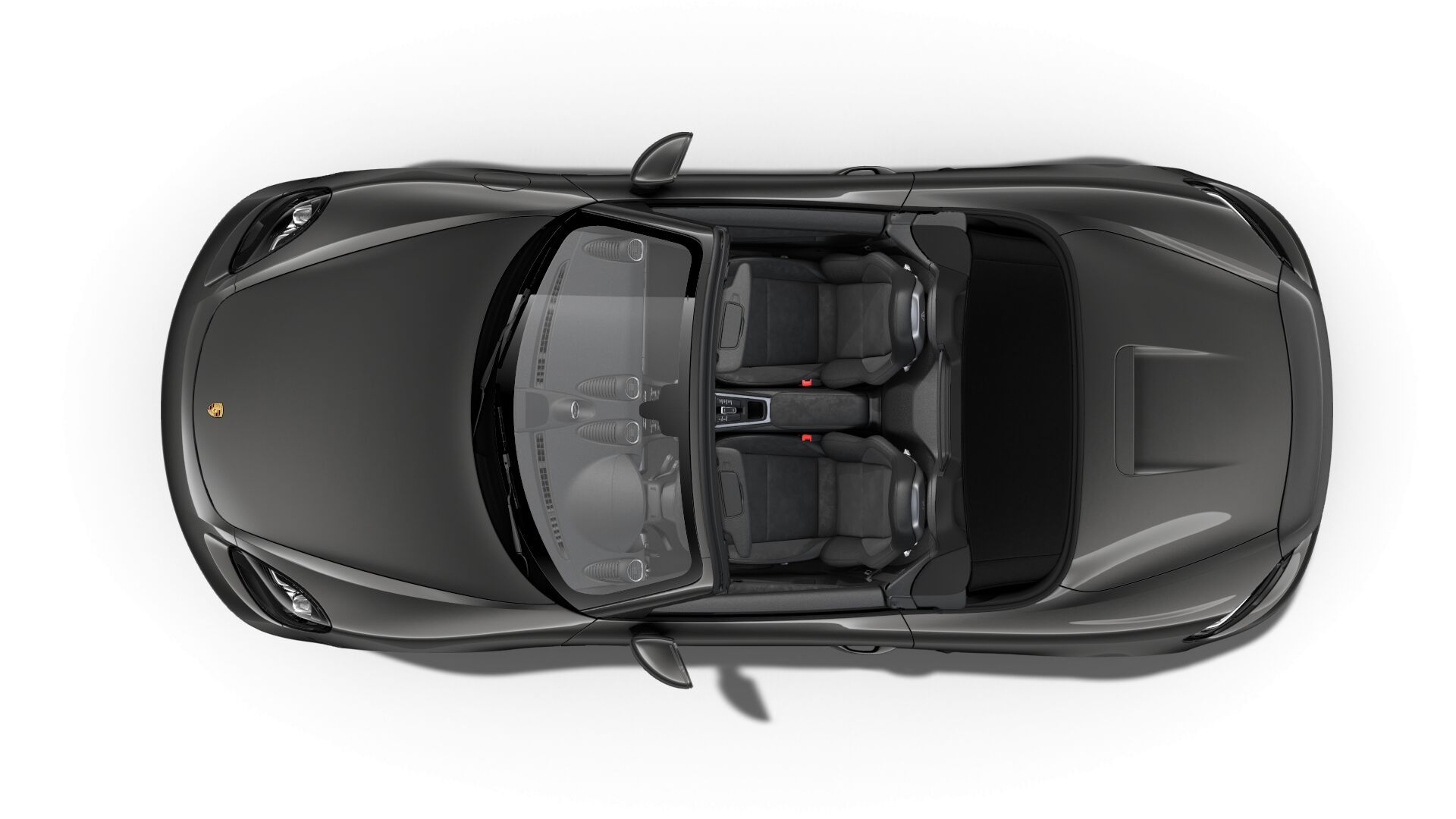
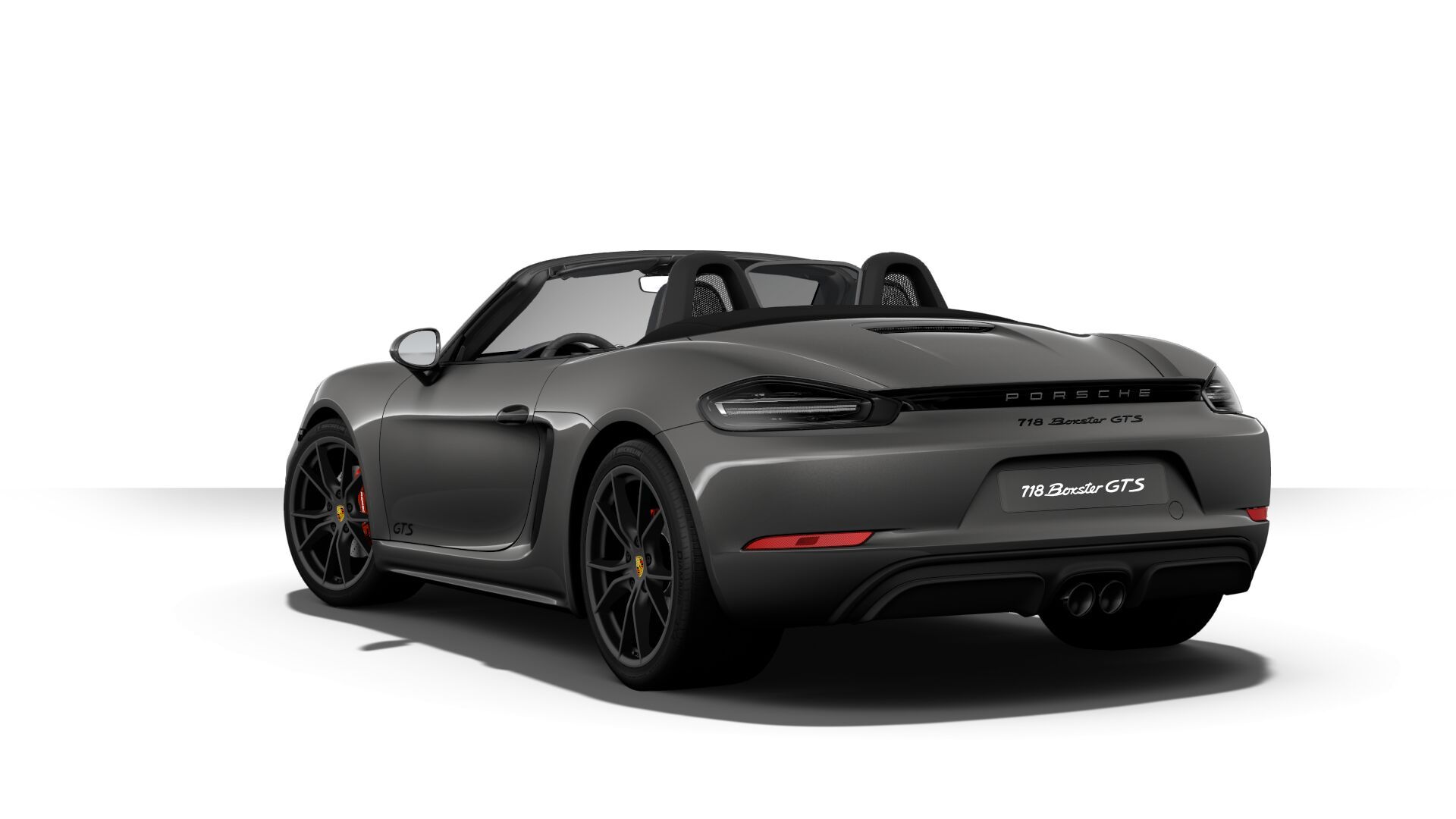
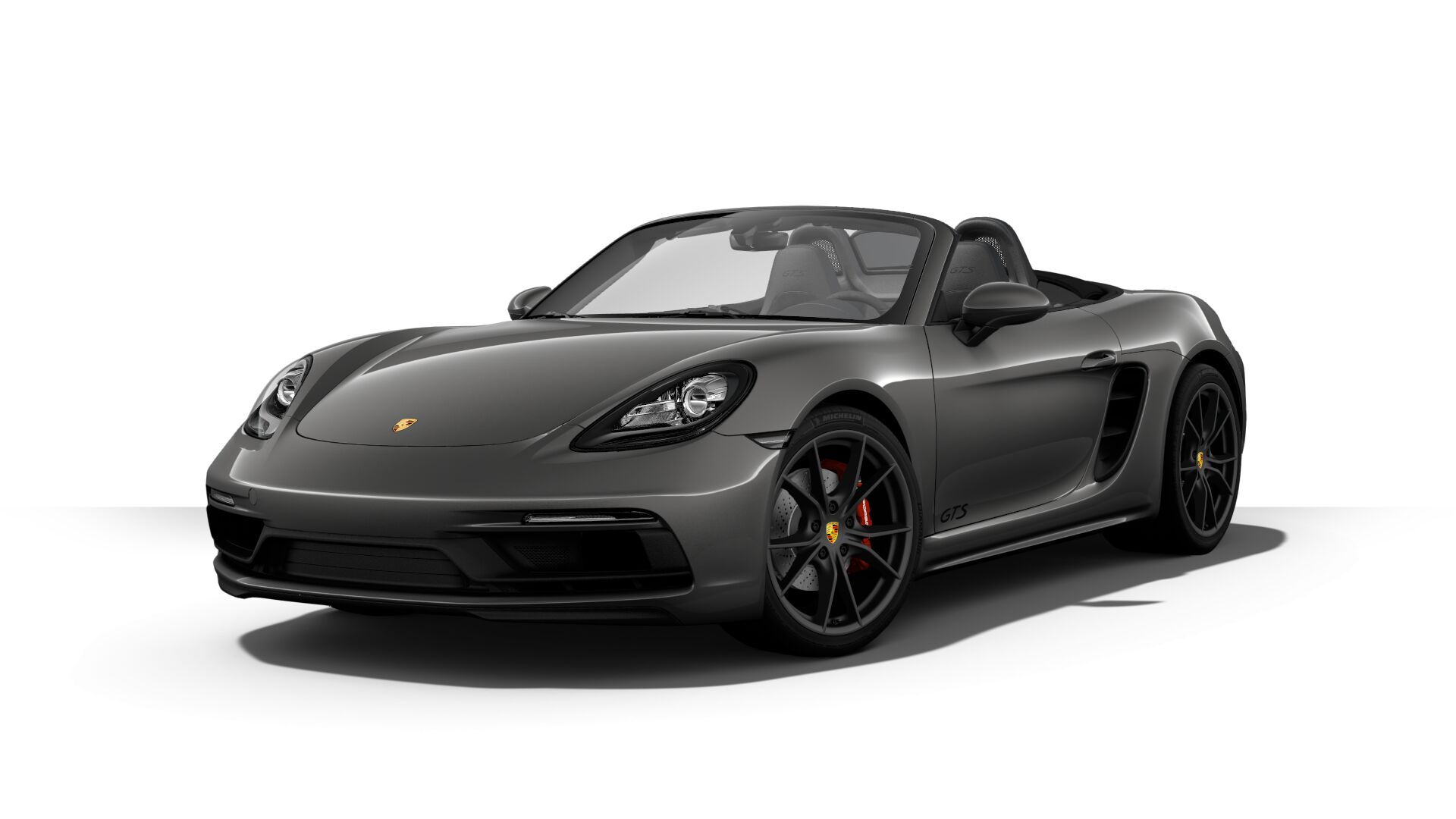
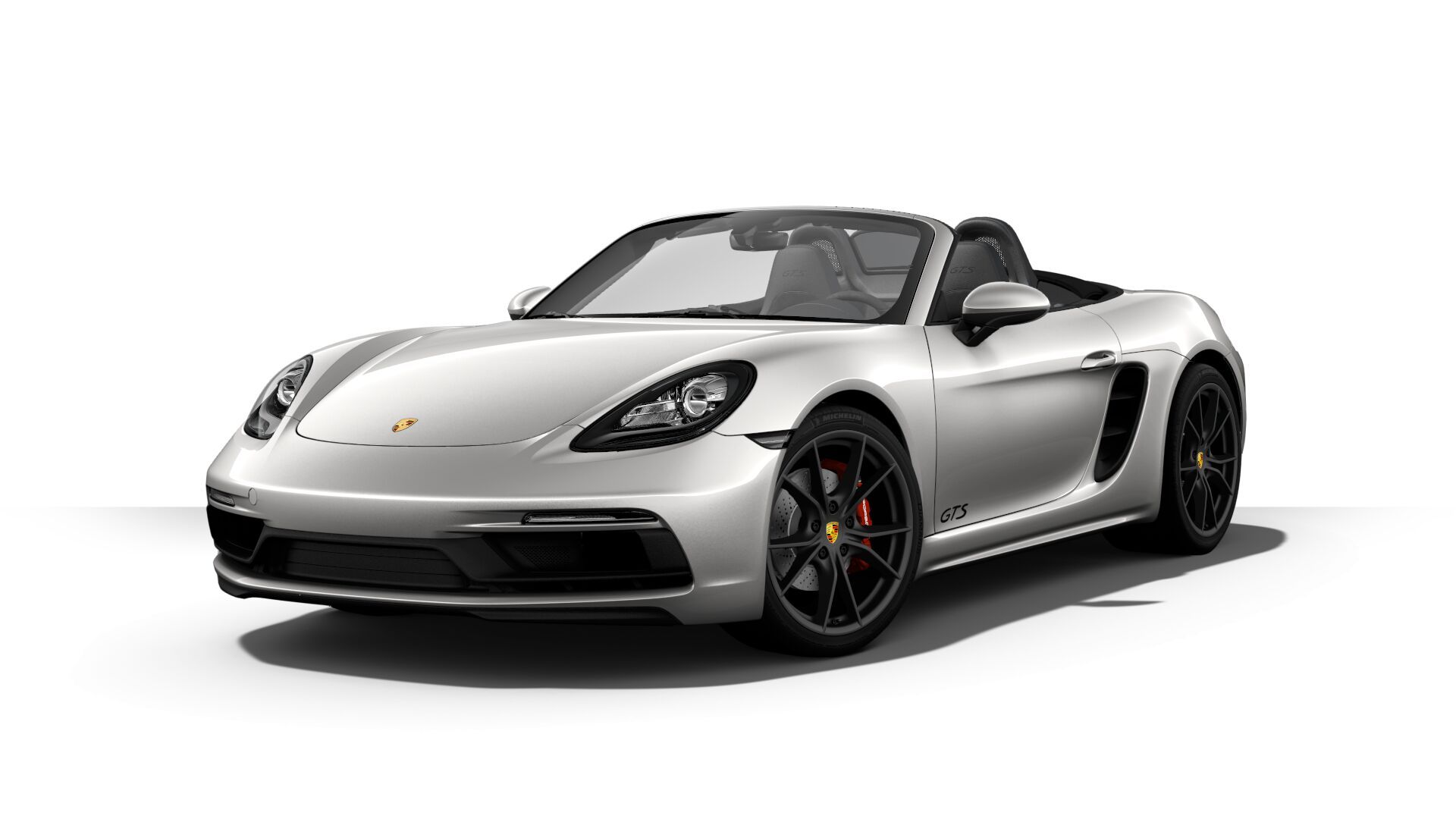
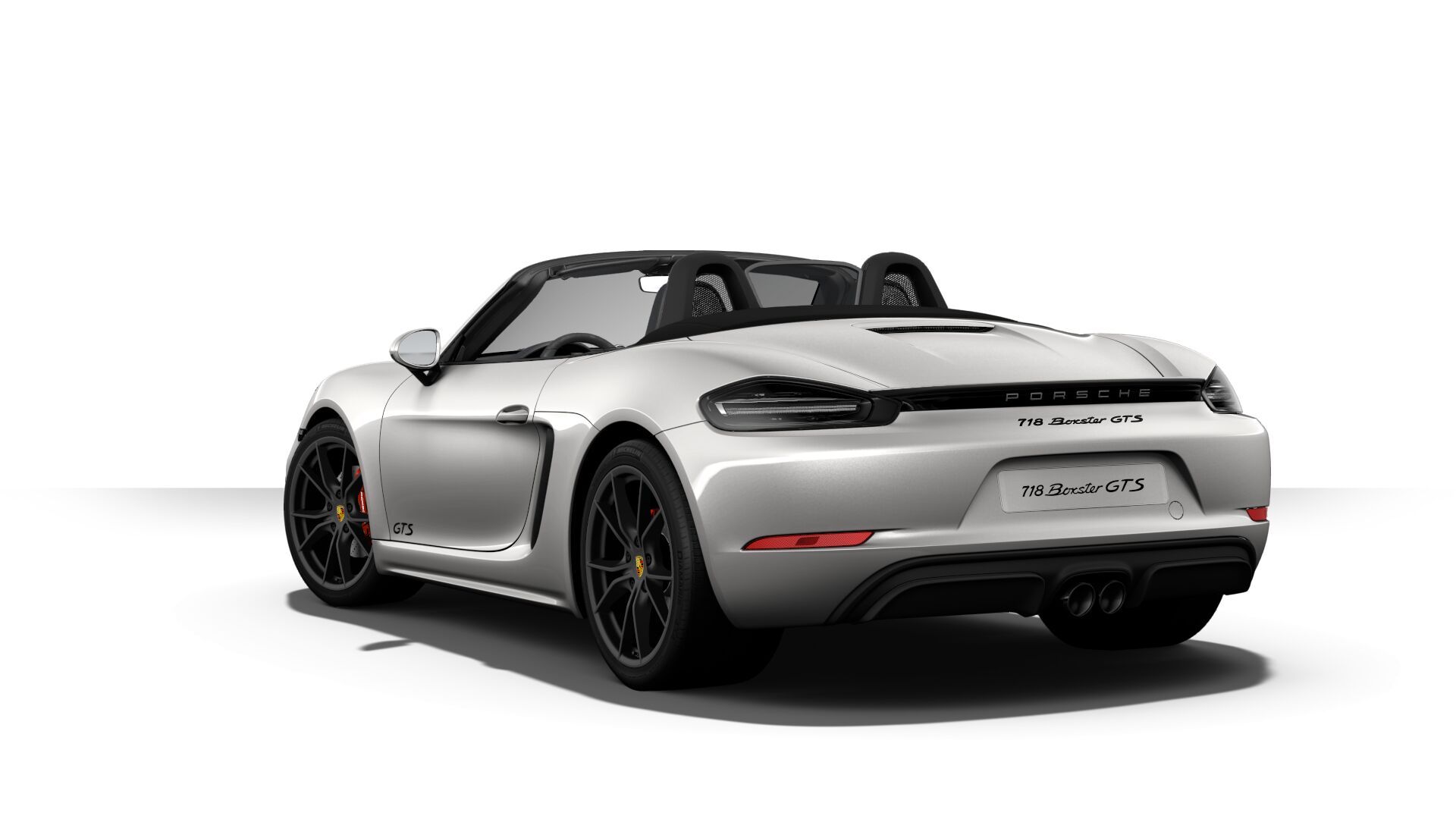
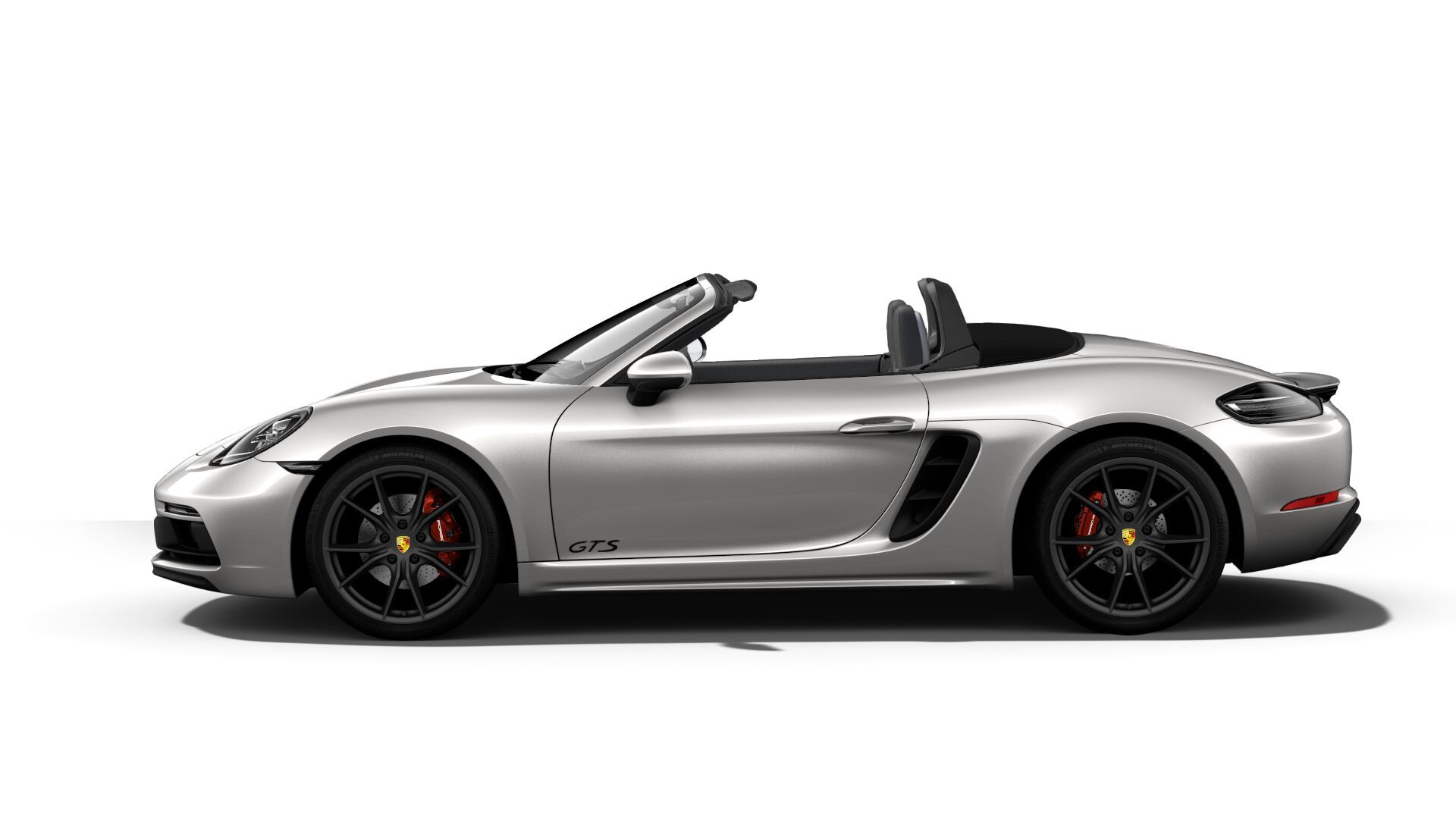
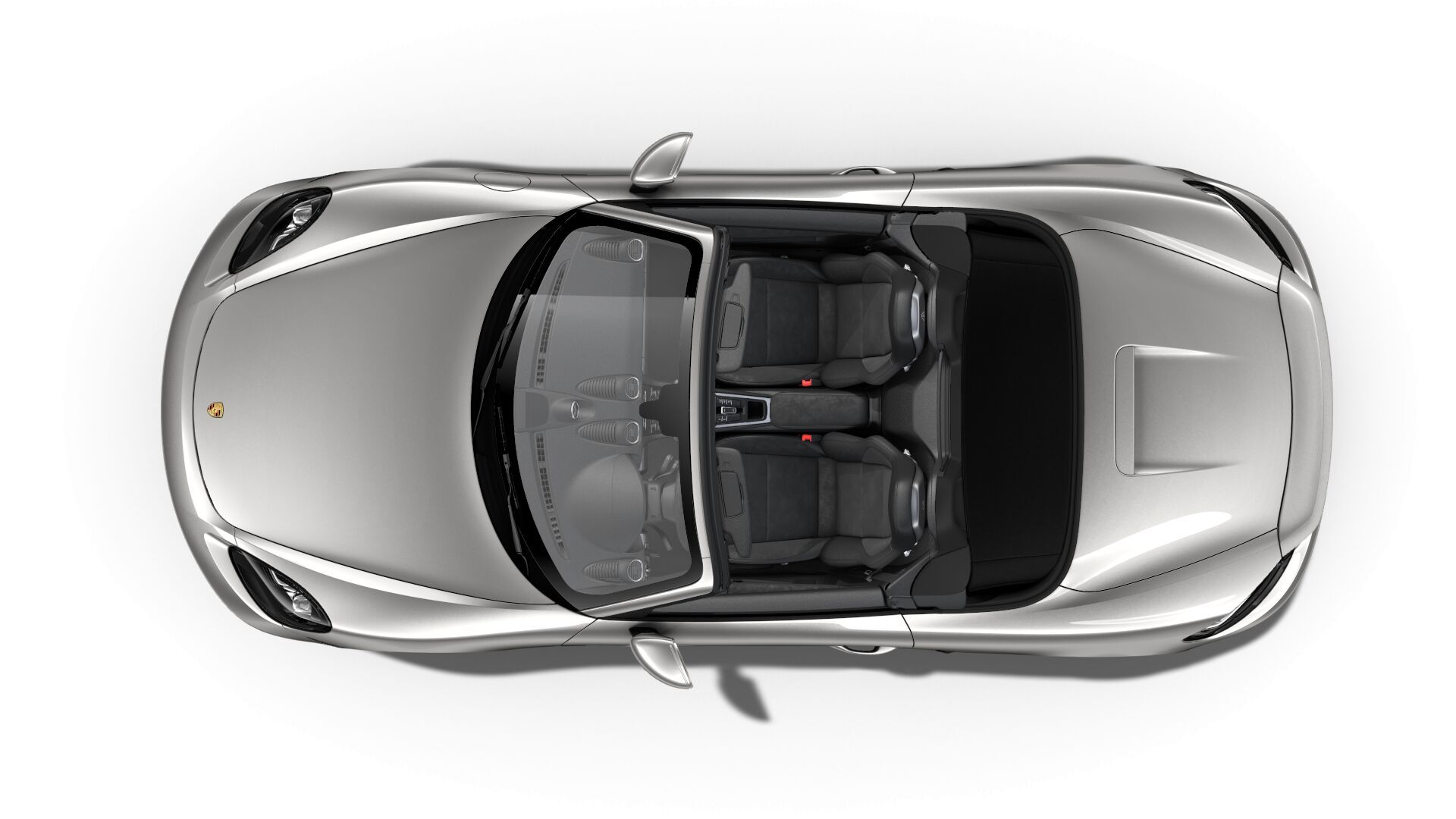
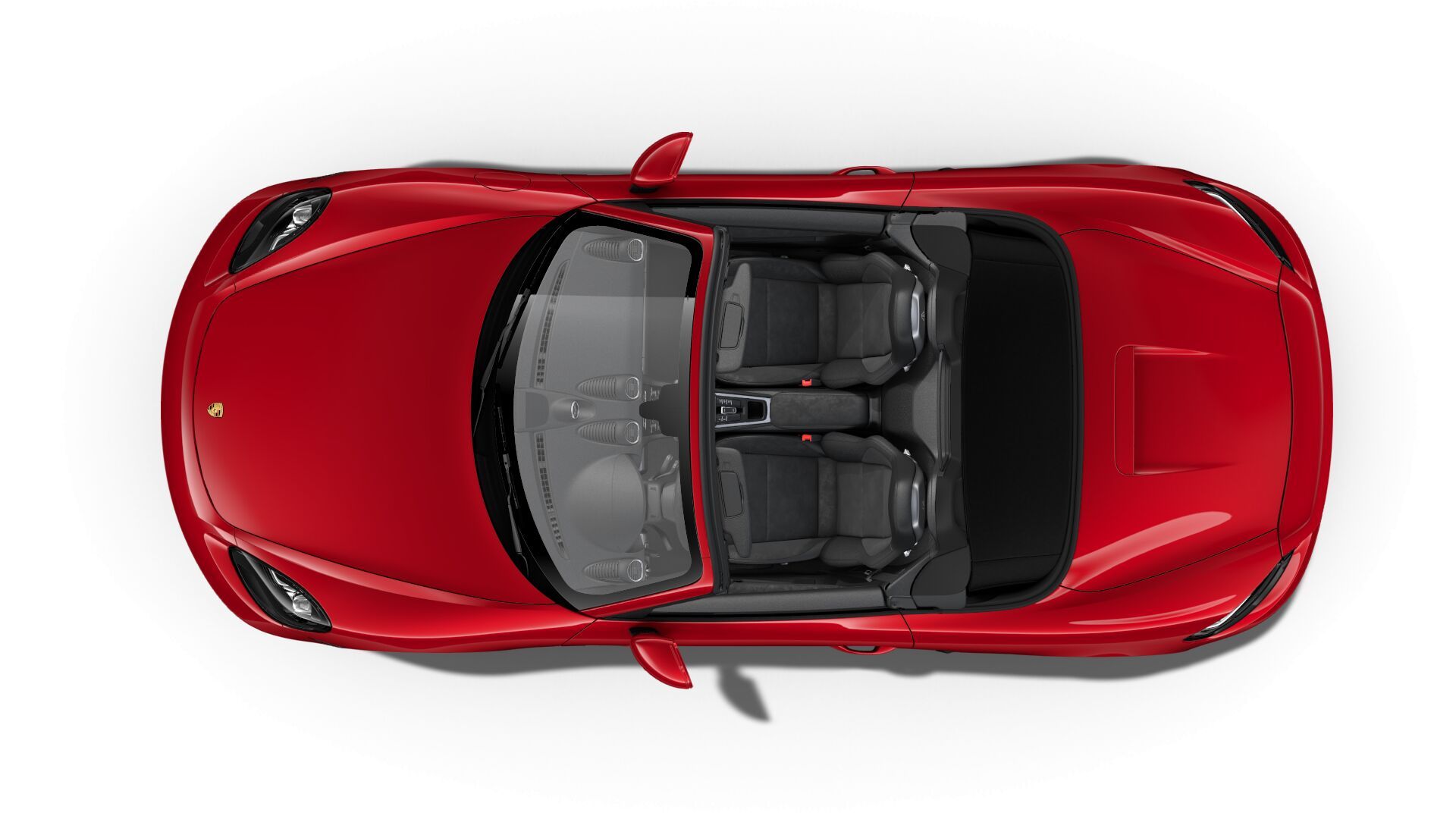
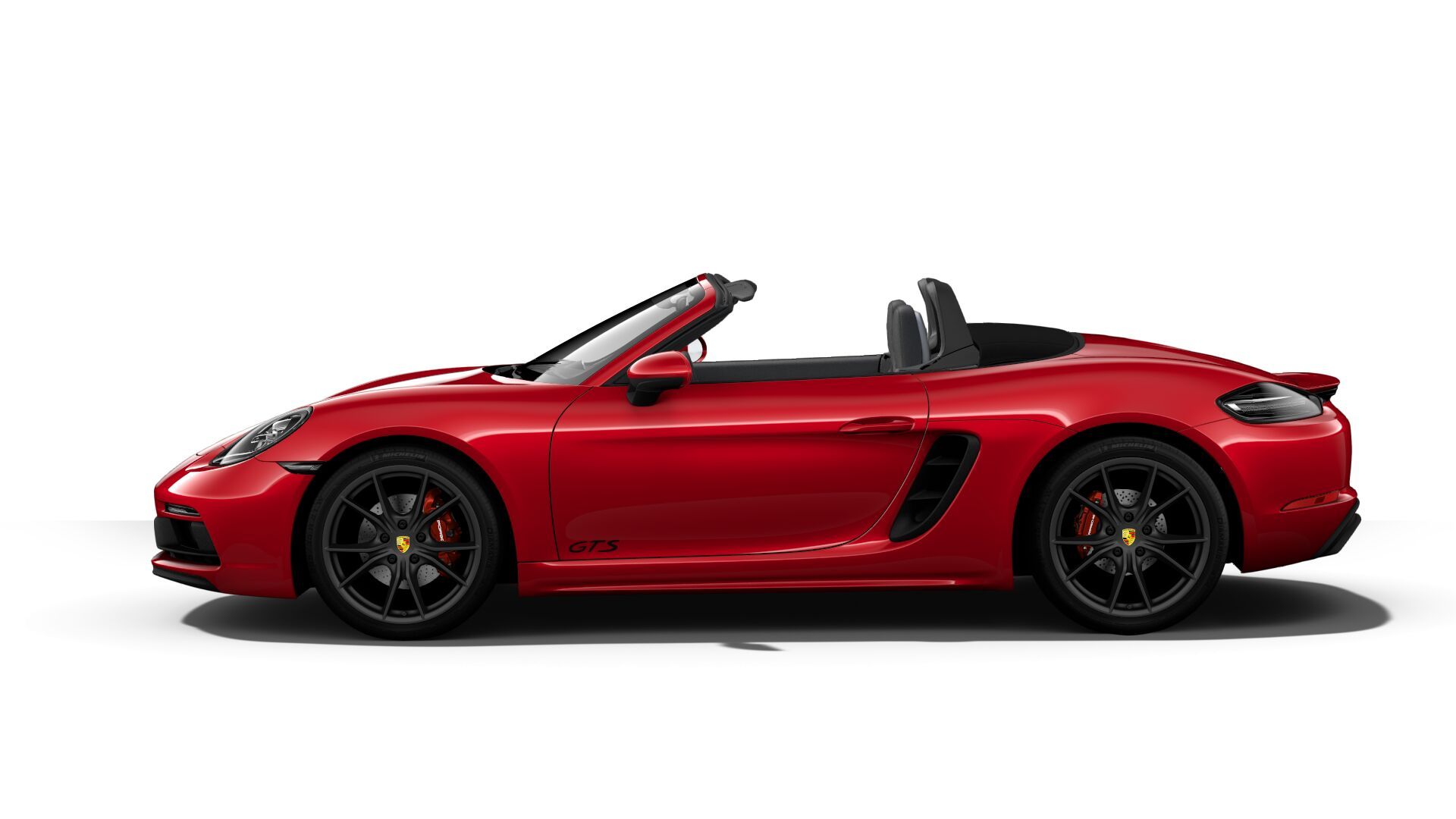
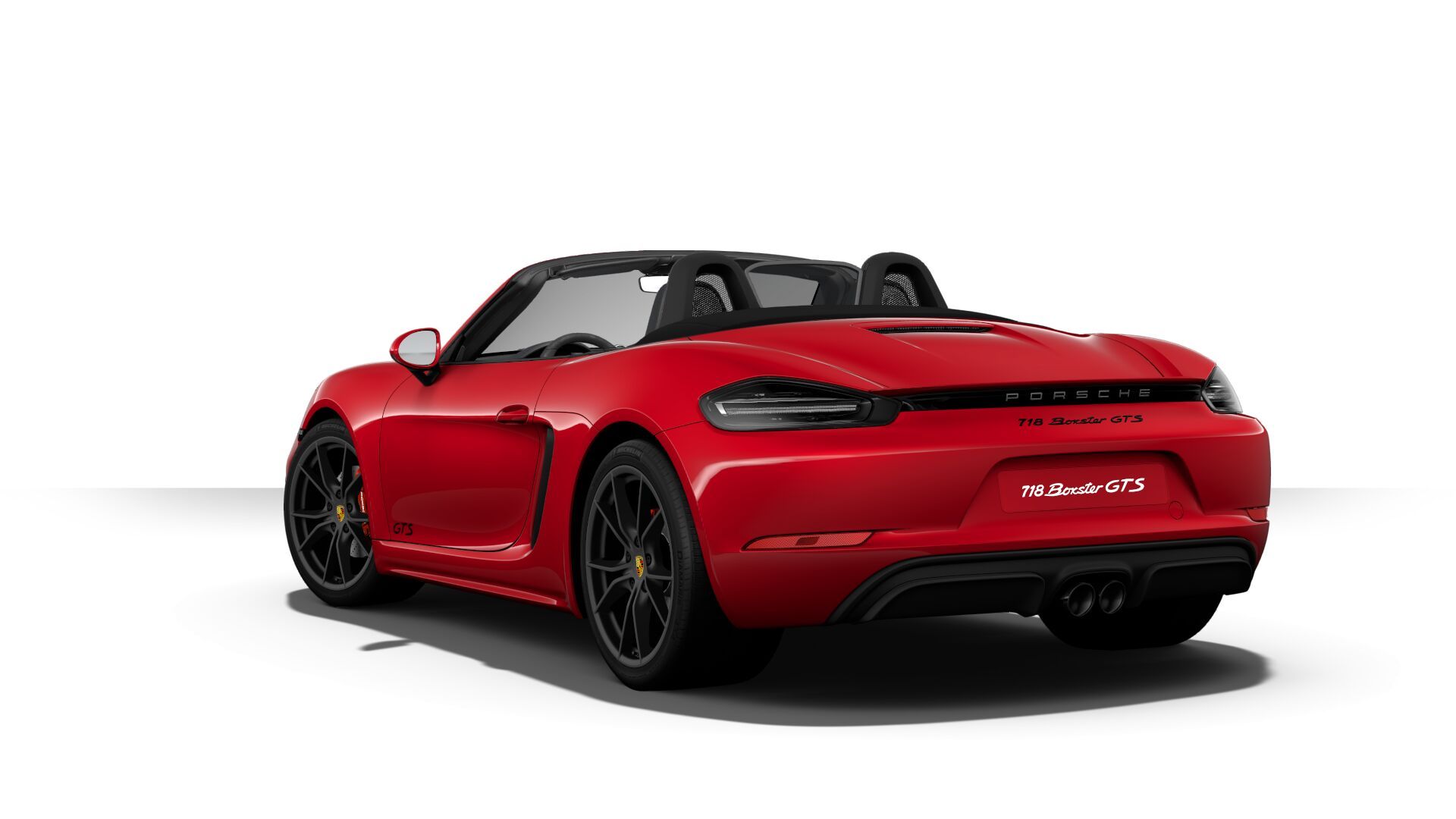
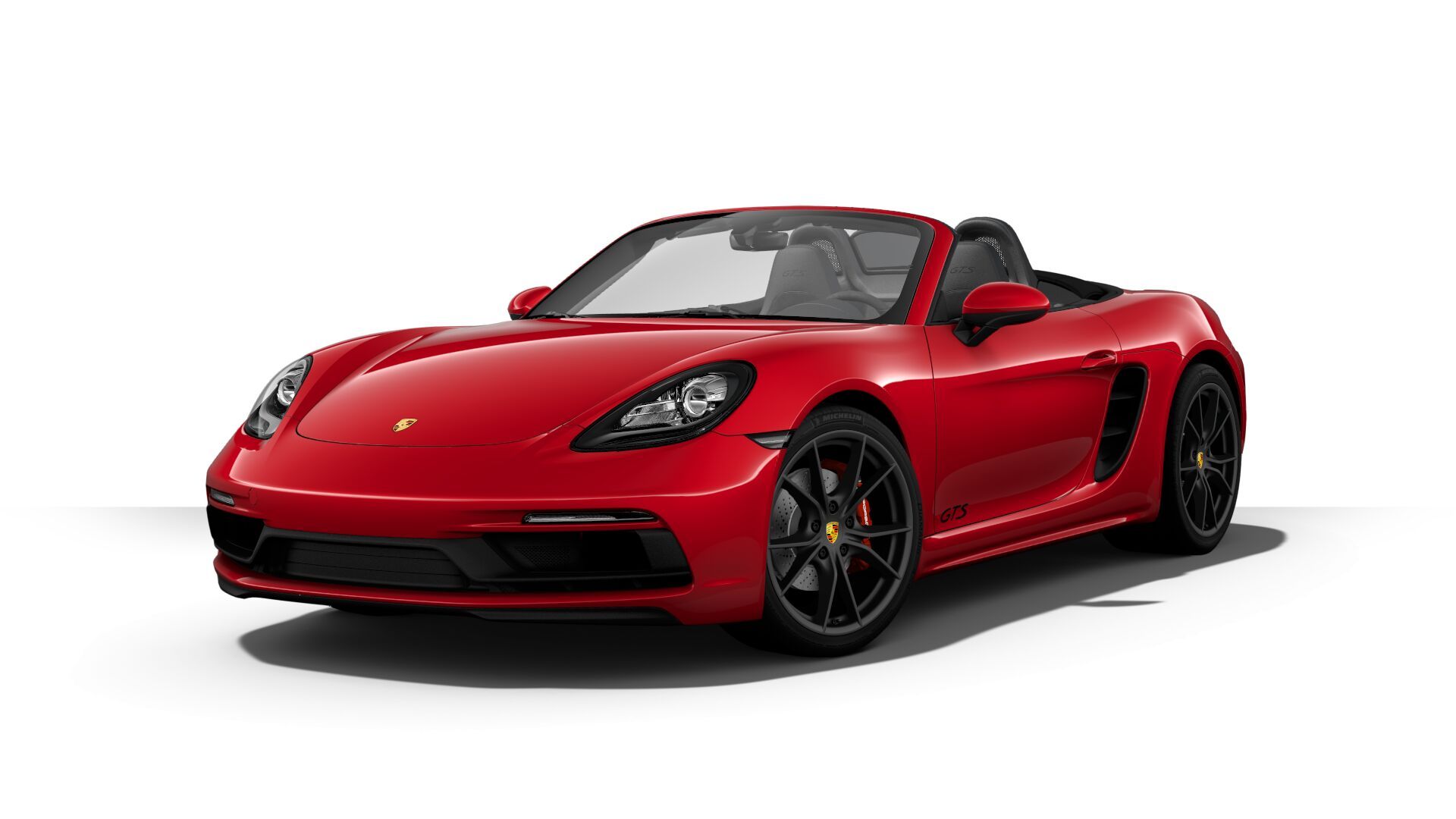
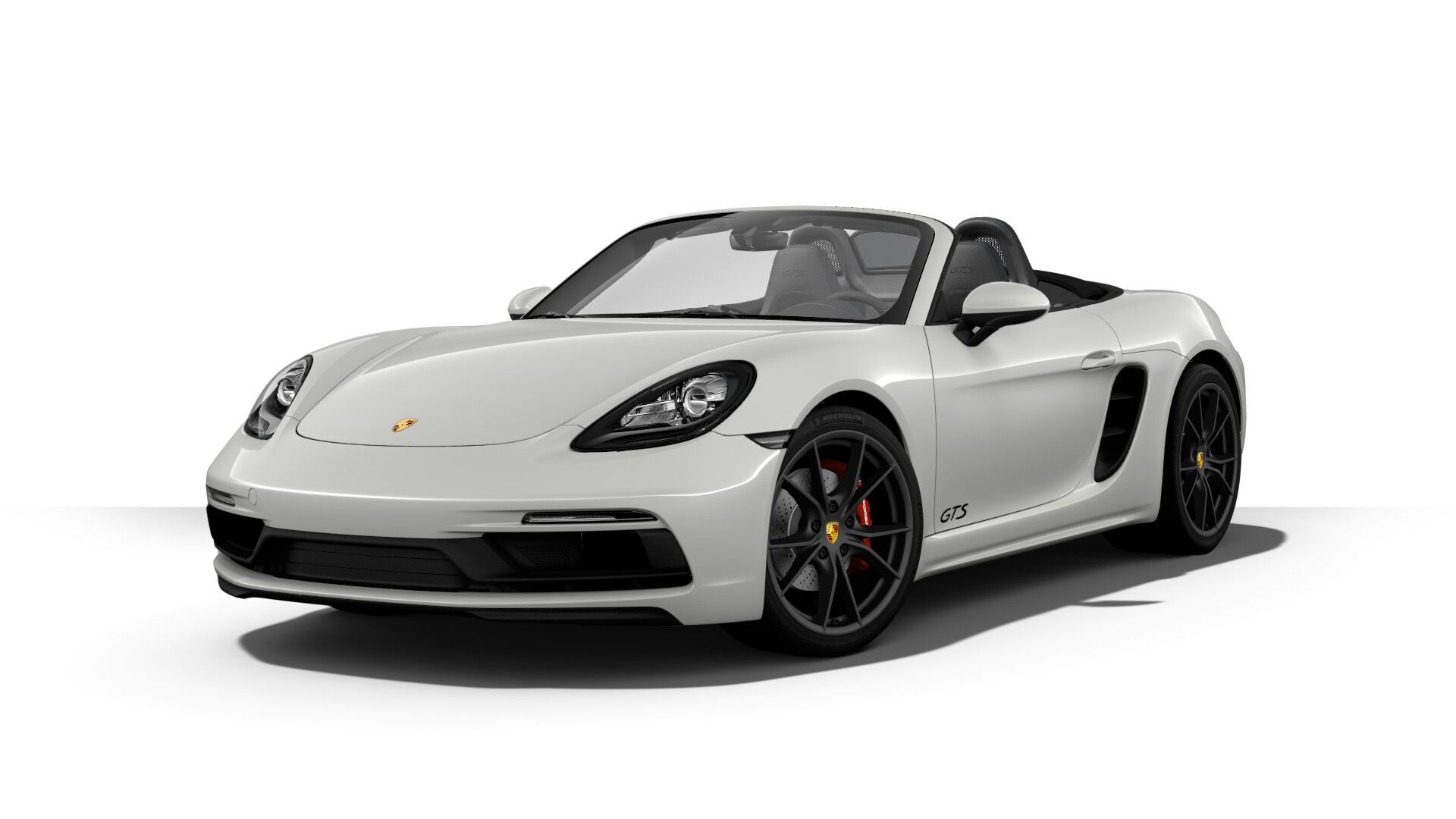
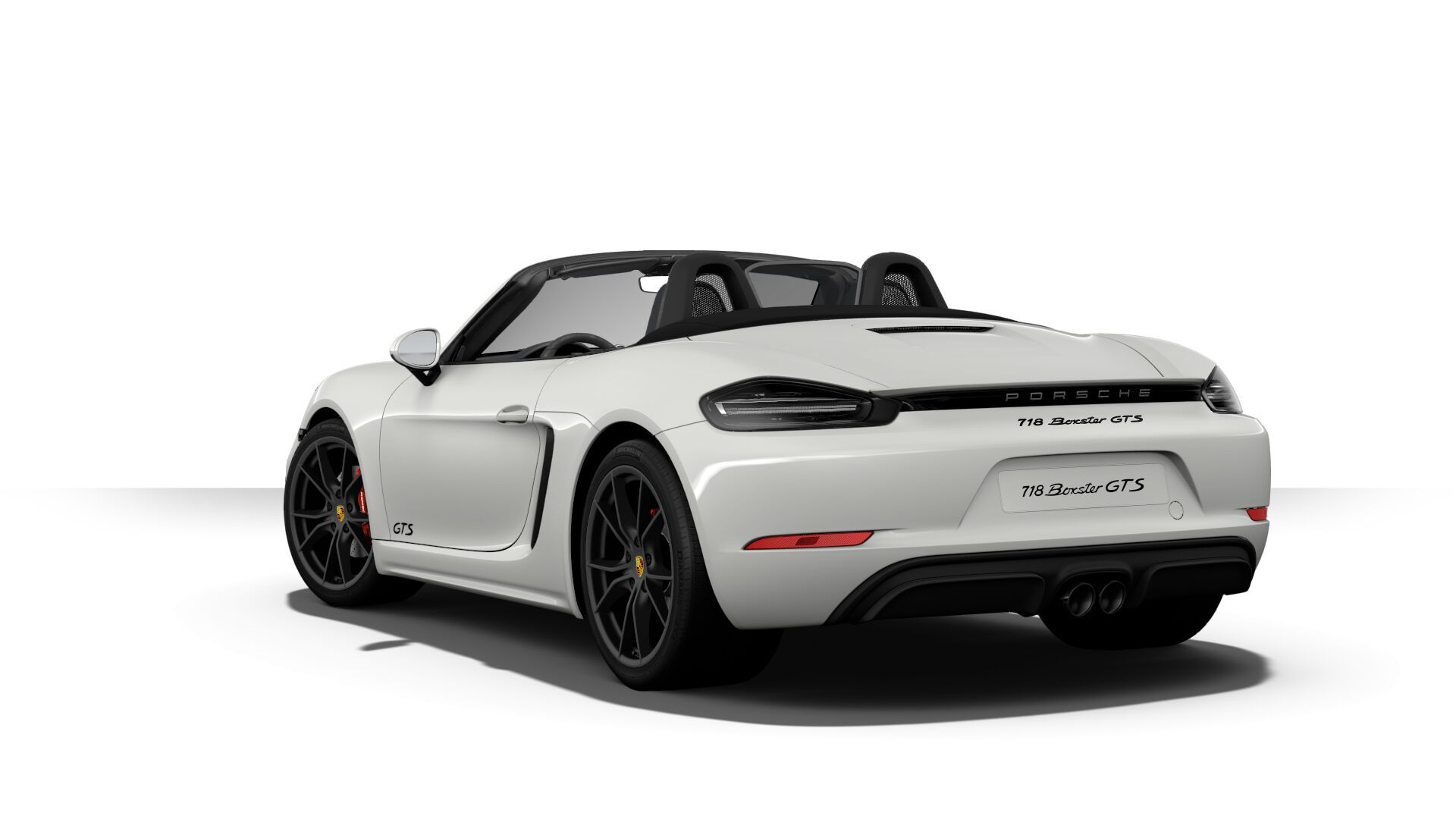
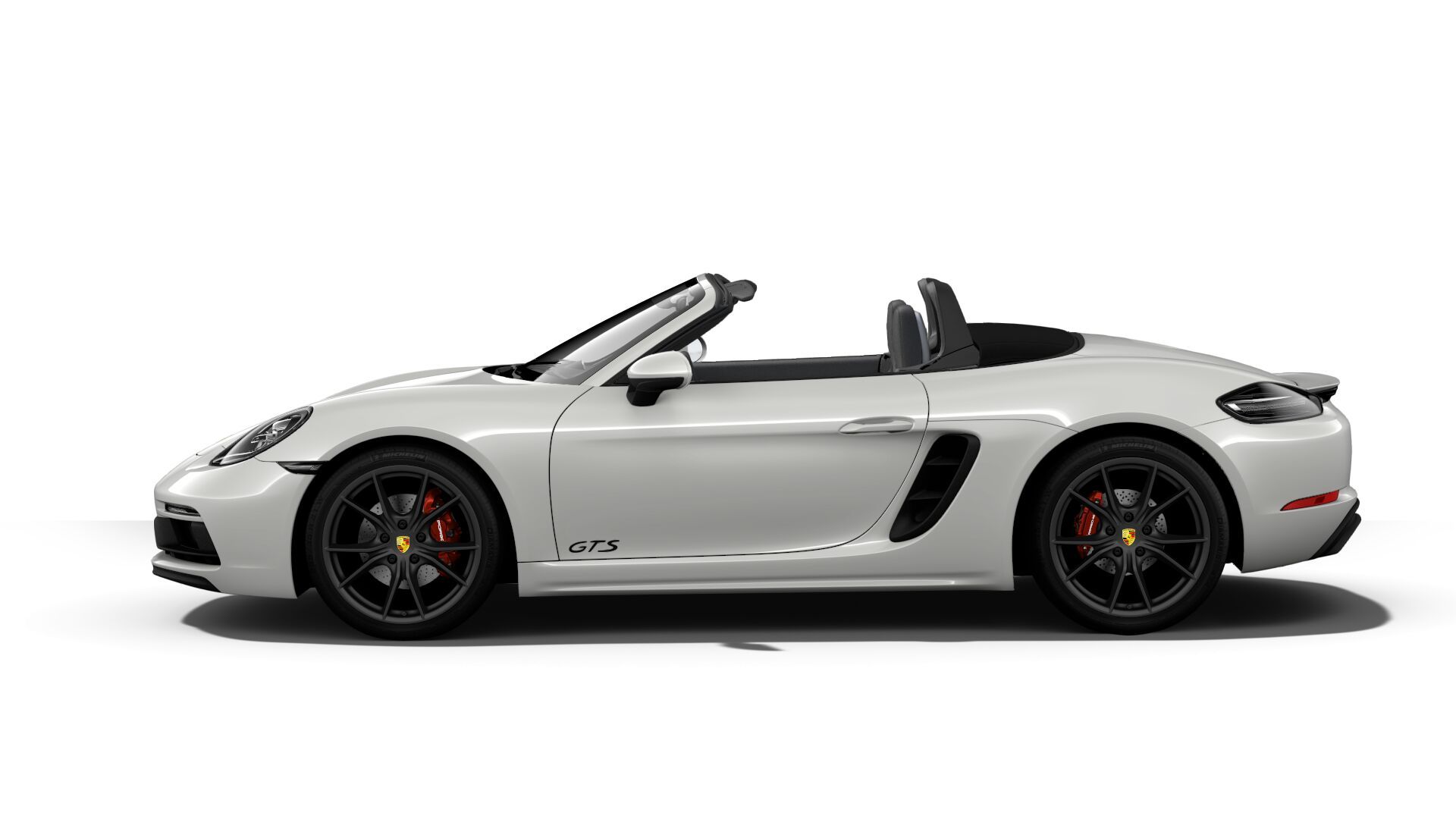
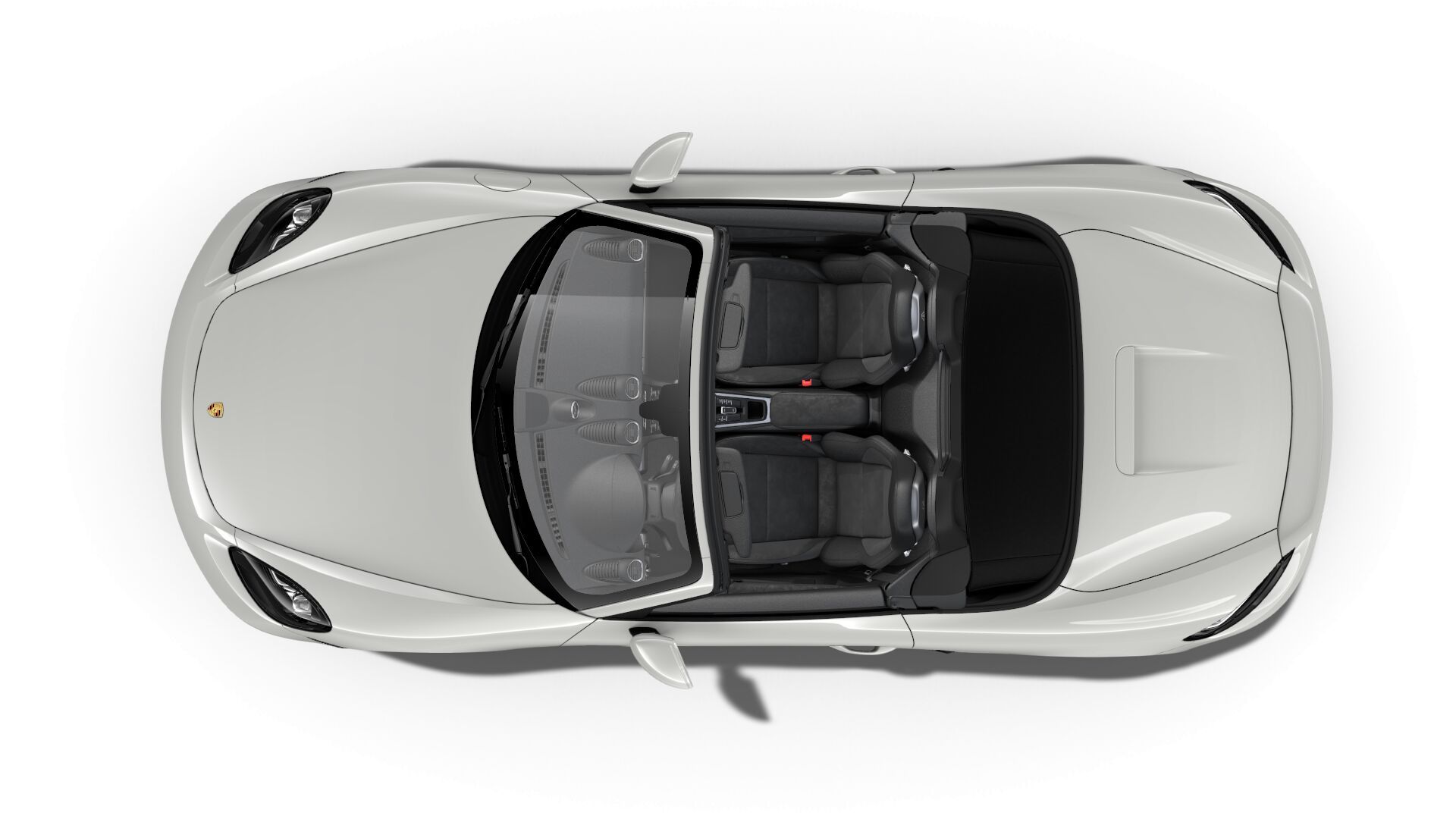
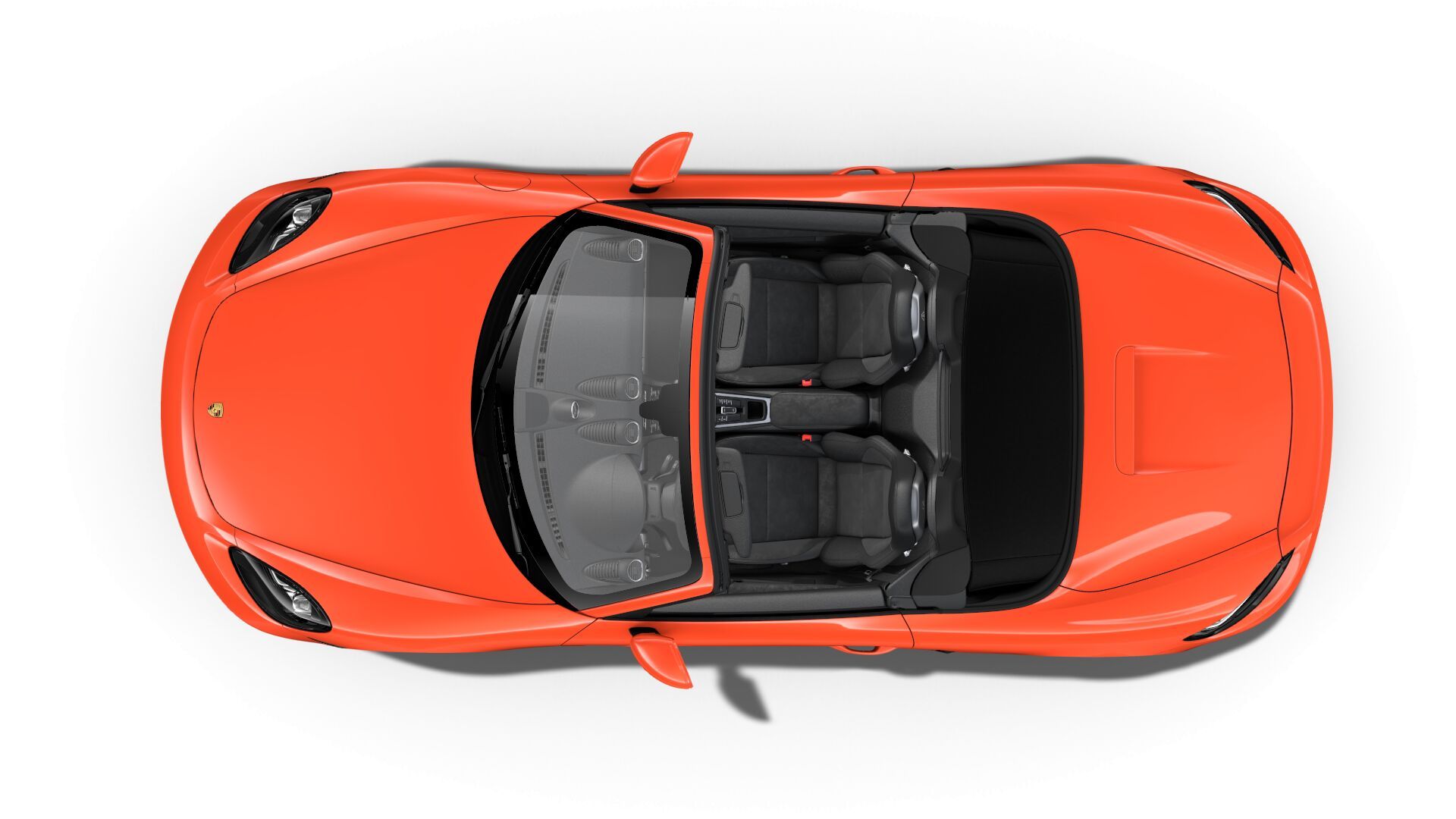
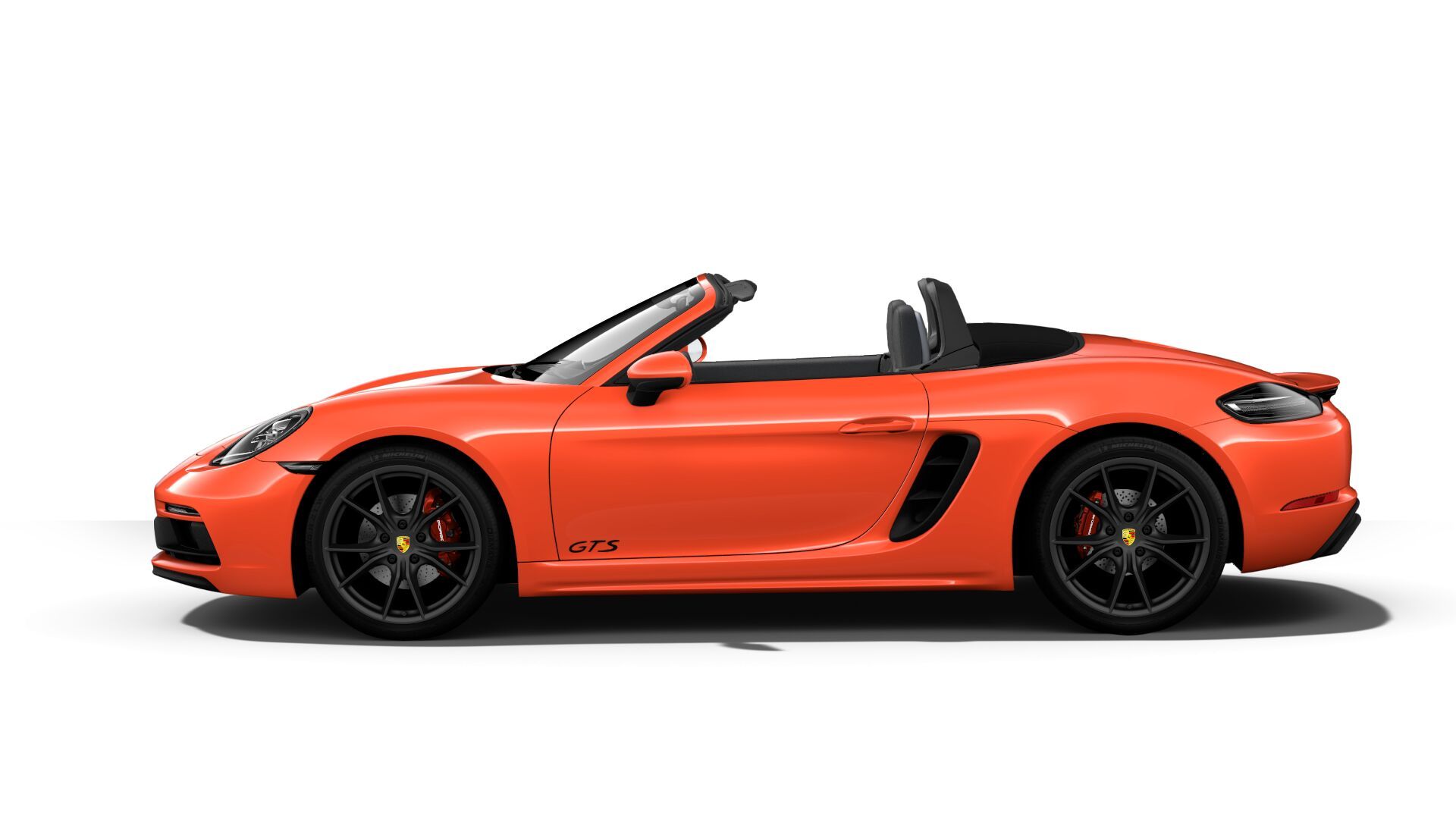
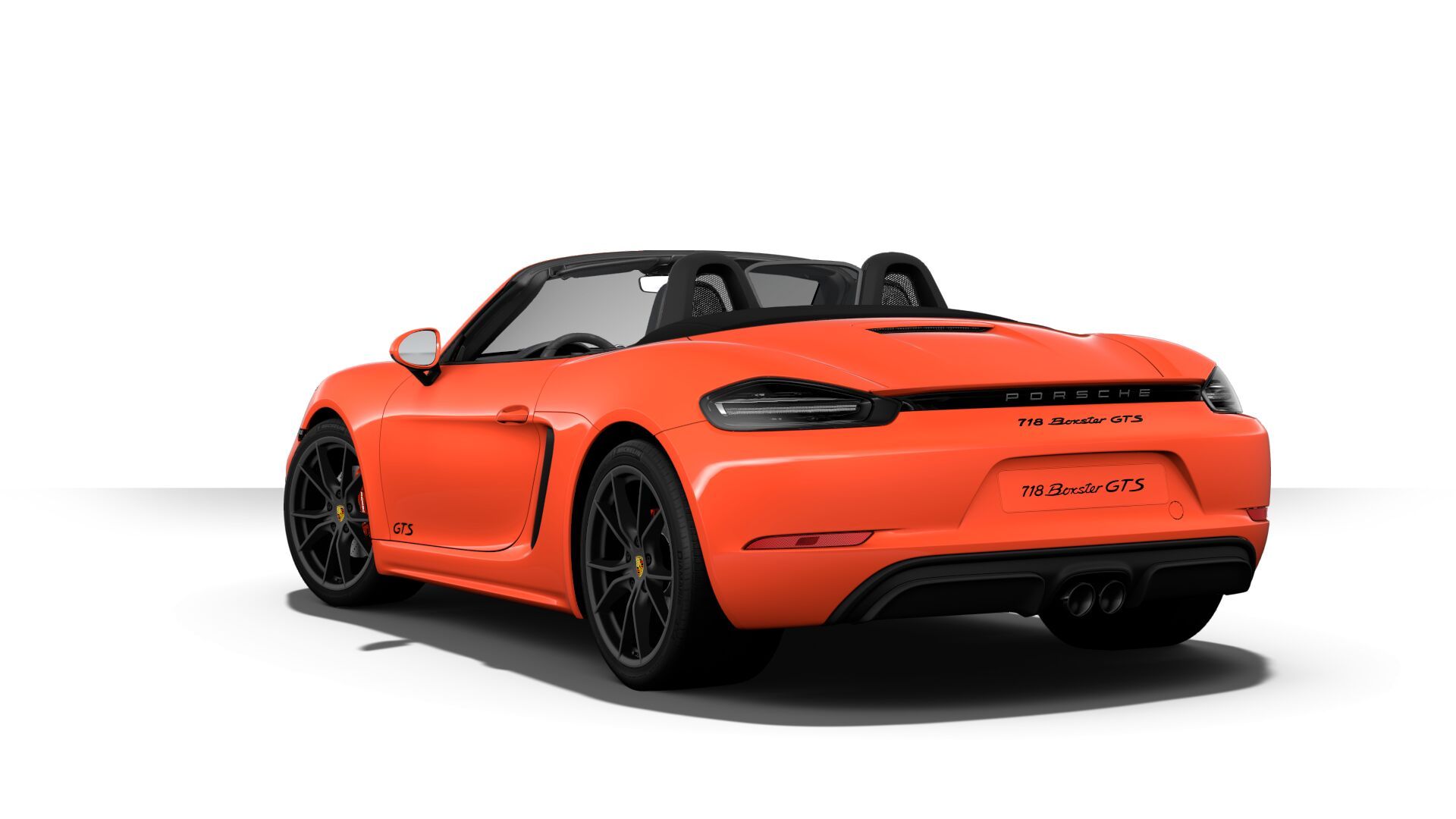
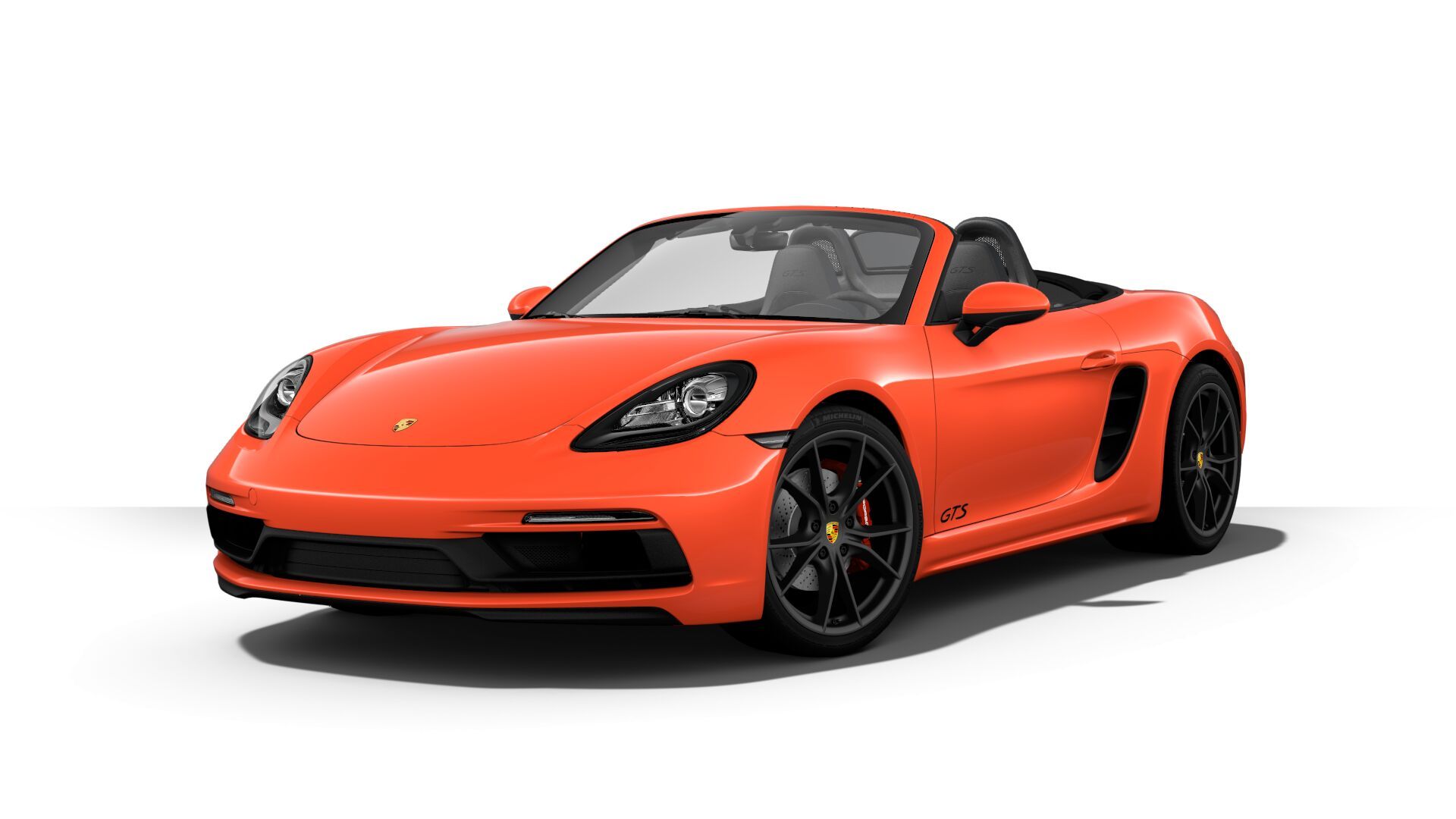
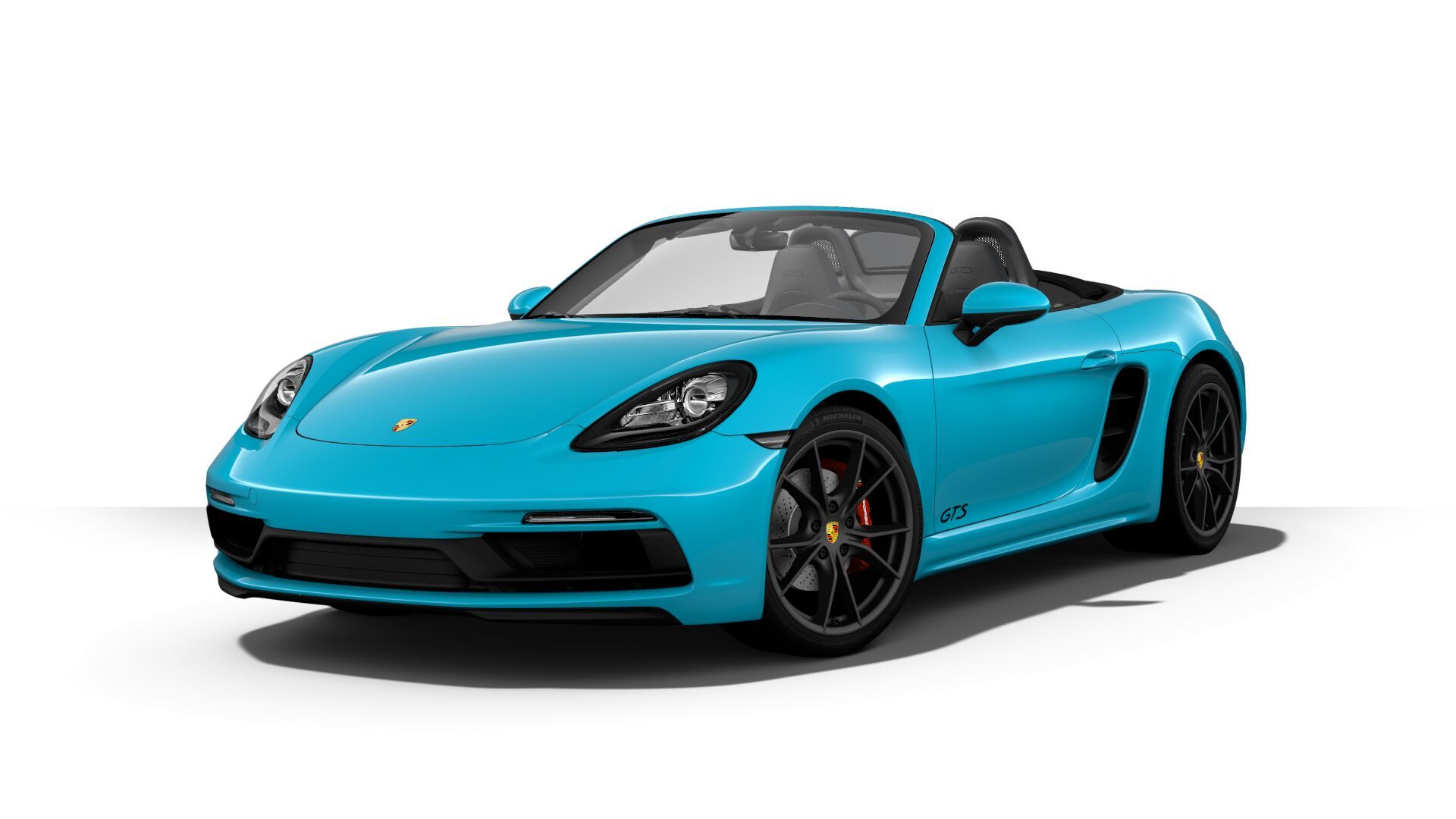
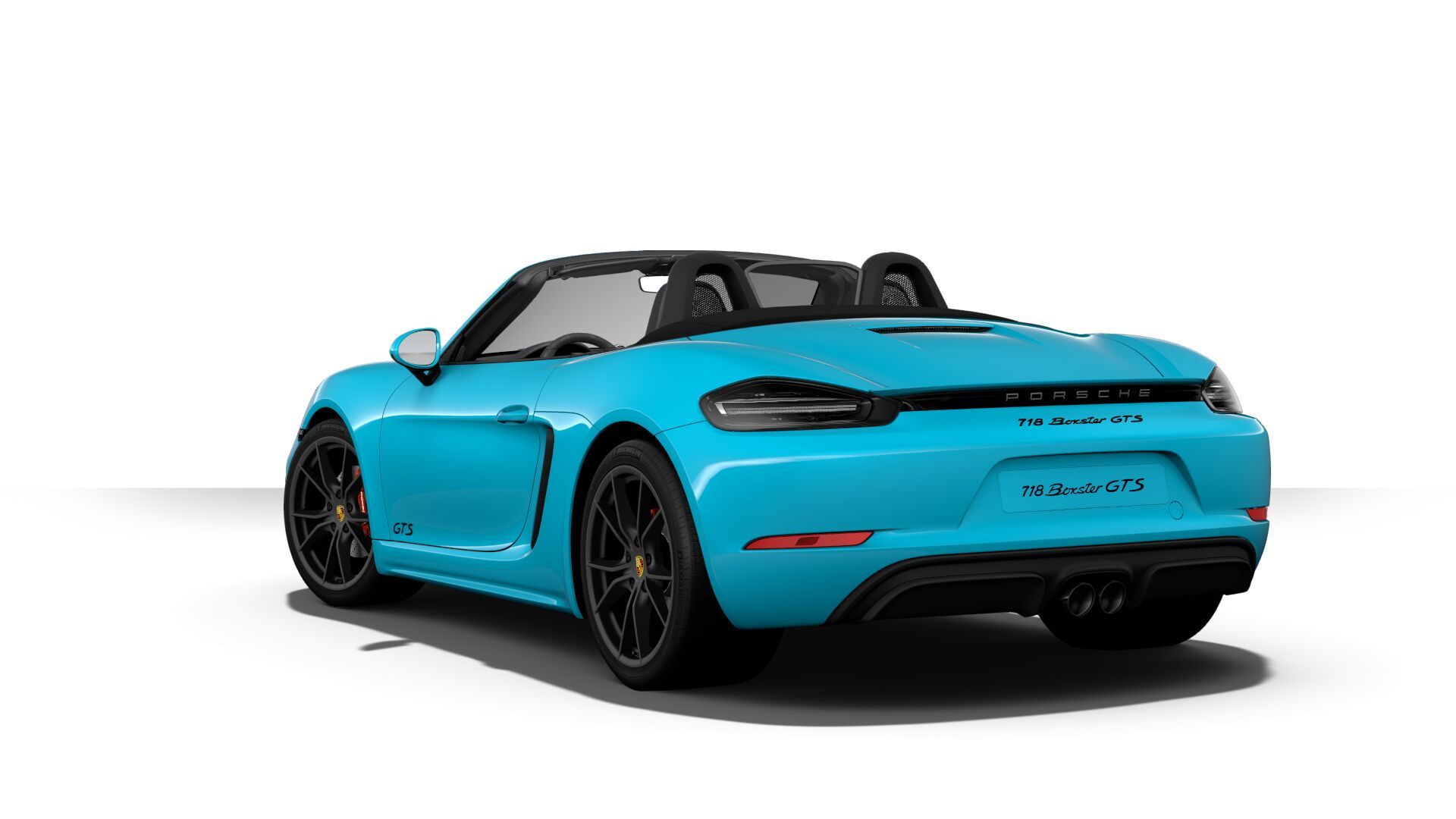
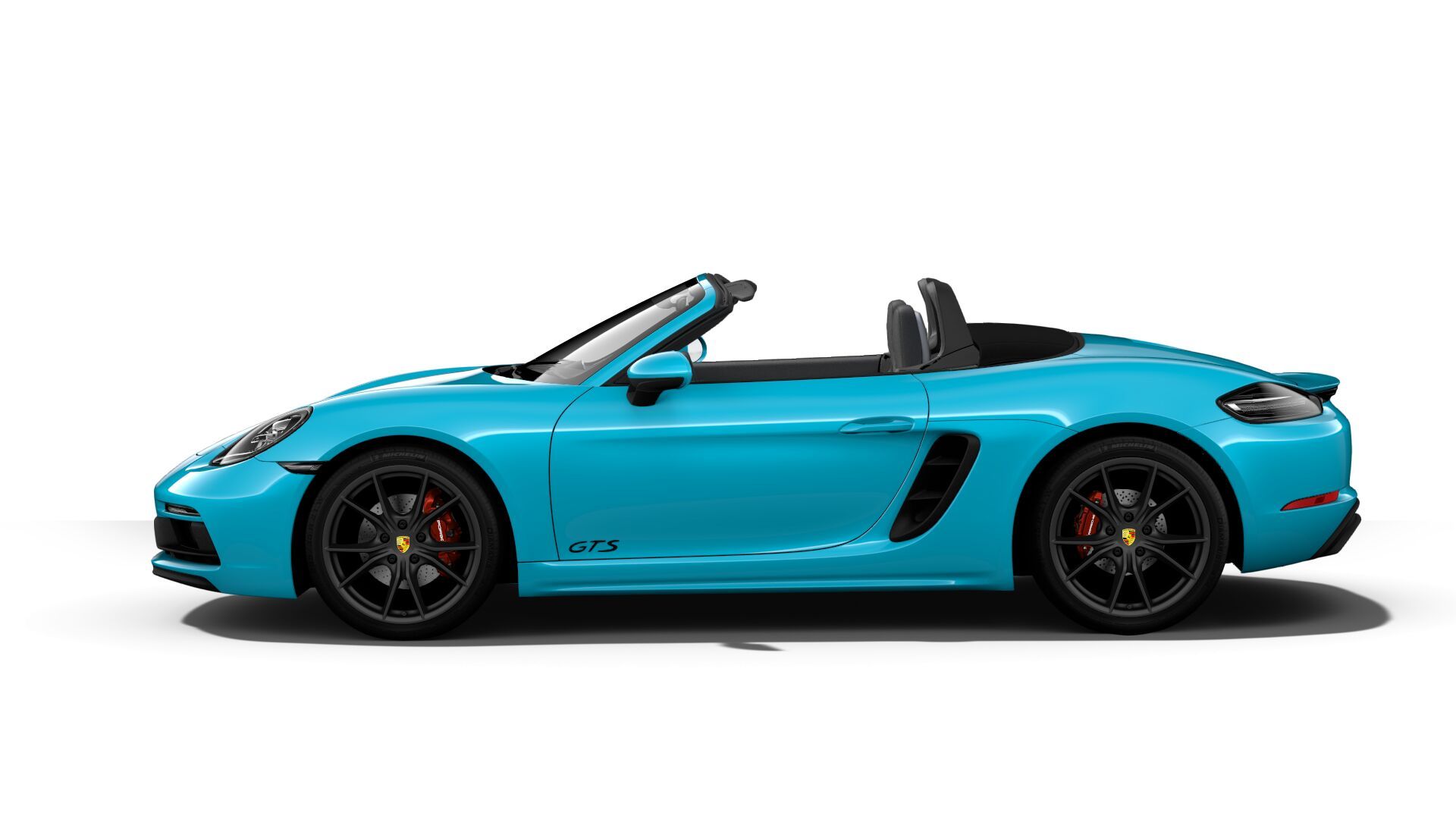




















































































































- Make: Array
- Model: 2018 Porsche 718 Boxster GTS
- Engine/Motor: flat-4
- Horsepower: 365 @ 6500
- Torque: 317
- [do not use] Vehicle Model: Array
Official video
Exterior

Having already seen the facelifted 718 Boxster and knowing the kind of upgrades the previous GTS had, the upcoming range-topping model wasn't much of a mystery design-wise.
As expected, the new GTS got a more aggressive front fascia with larger air intakes below the headlamps and a wider lower grille for improved cooling and aerodynamics. The central trapezoidal section is also sportier, while the horizontal slats in the side vents are gone, replaced by a fine mesh in some areas and by nothing at all in the center. Between the nose and the splitter, there are only black elements that seem to float in the fascia, which give the GTS a very unique look.
On top of these Boxster-specific features, the GTS also sports tinted headlamp and indicator lights, and a revised splittler. In the bumper, we can see two additional winglets that most likely enhance aerodynamics.
|
|
ids=739340,725509 |
no_overlay=true> |
Onto the sides, the latest 718 Boxster didn't change much, and as a result neither did the GTS model. However, we can see black "GTS" graphics on the lower doors and a set of matte black, five-twin-spoke wheels. This rims aren't only lighter than the standard units, but also cover upgraded brake discs and much larger, red-painted calipers.
Around back, changes include a redesigned air diffuser with more aggressive cutouts, as well as larger exhaust pipes. Above the fascia, there’s a movable spoiler that not only improves downforce but also becomes useful under braking and during cornering too. The redesigned taillights with 3D LED technology and the black strip with "Porsche" lettering between them also give the GTS a more aggressive look. The beefed-up roadster should also get a couple of new paint colors and new, lighter wheel designs. The GTS-spec rear end is rounded off by smoked taillight lenses, "718 Boxster GTS" lettering in black, a black diffuser-like element, and black tips for the standard Sport Exhaust system.
|
|
ids=739324,546395 |
no_overlay=true> |
THE COMPETITION
Thanks to the new 911-inspired styling, the Boxster GTS wil be one hot roadster, but that's not to say that the competition doesn't have an attractive design. Introduced for the 2018 model year, the Audi TT-RS sports the company's latest styling language, which is based on the previous design but incorporates more angular lines and a sportier stance overall. Although not as sleek as the Boxster, the TT-RS benefits greatly from the massive "Singleframe" grille and big bumper intakes, which gives it the kind of menacing look you wouldn't want to see in your rear-view mirror. The carbon-look mirror caps, fairly big spoiler, and beefed-up wheel arches also contribute to its race-inspired design.
The BMW M2 is equally impressive and the Convertible model, which has yet to be unveiled in production form, will have the same attractive features as the Coupe. Also, a bit more massive looking compared to the Boxster, the M2 is essentially a smaller M4 with better proportions. The more compact size also makes it look lighter compared to the bloated M4, and many even went as far as to consider it a spiritual successor to the first-generation BMW M3. While the M2 appears to be a sportier alternative to the TT-RS, it's not that easy to choose it against the Boxster as the Porsche has a completely different layout with the engine in the rear. Some say that the Boxster has the engine where it should be on all sports cars, so it's mostly a matter of taste.
|
Audi TT-RS Roadster |
BMW M2 Convertible |
Porsche 718 Boxster GTS |
|
|
Wheelbase (inches) |
98.6 |
106.0 |
97.4 |
|
Length (inches) |
164.7 |
176.2 |
172.4 |
|
Height (inches) |
53.2 |
55.5 |
50.4 |
|
Width (inches) |
72.1 |
73.0 |
70.9 |
Interior

Just like the exterior, the cabin is heavily based on the latest 718 Boxster, with only a few features setting it apart. Specifically, you will find the new dashboard with revised A/C vents and the updated instrument cluster of the facelifted Boxster that debuted for the 2017 model year. There's also a revised steering wheel with new spokes and new center section that bears a closer resemblance with the one seen in the larger 911.
Everything else was carried over pretty much unchanged, but there are some technology updates to talk about. For instance, the standard Porsche Communication Management system features cell phone preparation, audio interfaces, and a 110-watt Sound Package Plus, and it can be enhanced with a navigation module with voice control.

The "GTS" badge comes with a few extra features of its own. The Sport Chrono package is standard, which means there's a chronometer on the dashboard. The seat centers of the standard Sport Seats Plus are wrapped of Alcantara, and feature embroidered "GTS" logos on the headrests. They provide enhanced lateral support and comfort. More Alcantara can be seen on steering wheel rim, center console armrest, and door armrests for a more race-inspired look.
Finally, when the optional Navigation Module and Connect Plus Packages are ordered, the Sport Chrono Package also gets the Porsche Track Precision App. This feature allows drivers to automatically record, display, and analyze driving data obtained on the race track on a smartphone.
THE COMPETITION
In recent years, both Audi and BMW have positioned themselves in the premium segment with just about every nameplate, and the TT and 2 Series are no exceptions from this rule. Much like GTS compared to the standard Boxster, the TT-RS and M2 borrow the interior layouts and features of the base models, but get several extra features that make them unique and even more luxurious.
The Audi, for instance, is enhanced by sportier features such as red accents and stitching on numerous elements, "RS" badges, added leather, and a revised instrument cluster in addition to all the goodies that come with range-topping TT models. The sportiness of the TT-RS is further enhanced by the carbon-fiber and aluminum trim on the center console and door panels, the sports pedals, and the bolstered seats. The coupe is also loaded with high-end technology, but there's still room for options like MMI Navigation Plus with MMI Touch, Audi Connect module with Wi-Fi hotspot, and a Bang-Olufsen audio system.
The M2 sports the oldest interior design in this niche, but that's not to say it is dated. When it arrives, the Convertible should get the same goodies as the Coupe, including the Dakota leather with blue contrast stitching, carbon-fiber dashboard inserts, an M-spec gear shifter, and bespoke dials and needles for the instrument cluster, as well as a 200-mph speedometer. Other highlights include M logos on the tachometer and door sill plates, and the GoPro and M Laptimer apps. The GoPro app allows the driver to film their laps at the race track, while the M Laptimer records the car’s speed, longitudinal and lateral acceleration, engine’s speed, steering angle and fuel consumption.
Drivetrain

Just like the outgoing model, the new GTS is based on the Boxster S under the hood. This means that it gets its juice from a 2.5-liter flat-four, which puts an end to the nameplate as a naturally aspirated model. This doesn't come as a surprise, but die-hard enthusiasts were still hoping that Porsche will find a way to keep the GTS an all-motor model. But there's no need to be disappointed, as the new GTS is quite the potent car, despite the smaller engine.
Using an optimized turbocharger and a newly developed intake plenum, the four-banger in the Boxster GTS cranks out 365 horsepower and 317 pound-feet of torque (309 with the manual transmission), which accounts for a 15-horsepower increase over the Boxster S. Compared to the base model, which uses a 2.0-liter flat-four, it delivers an extra 65 horses and 37 pound-feet. Naturally, it's also significantly more powerful than the previous GTS, which had a 330-horsepower and 273-pound-feet 3.4-liter flat-six. Specifically, the new GTS gained a solid 35 horsepower and 44 pound-feet.
Granted, I expected a bit more -- as in around 375 horses and 325 pound-feet -- but Porsche added just enough extra oomph to make the new GTS stand out in a Boxster crowd.

Transmission options remain the same in the new model. The six-speed manual continues to be the standard offering, but the seven-speed PDK is offered as an option. When equipped with the latter, the GTS needs 3.9 seconds to hit 60 mph, which is between a half-second and a tenth-second quicker than the Boxster S, depending on specification. It's also a lot quicker than the previous GTS, which needed 4.7 ticks to hit the benchmark. Top speed is rated at 180 mph, three mph more than the previous GTS and the current Boxster S. Not bad!
But the GTS isn't just about extra oomph. The German automaker also included some performance-enhancing options in the package, including Porsche Torque Vectoring (PTV) and a mechanical rear-differential lock or the Sport Chrono Package, both of which are standard. The GTS is also fitted with Porsche Active Suspension Management (PASM), which reduces the ride height by 0.4 inches compared to the standard 718 Boxster and Cayman.
|
2015 Porsche Boxster GTS |
Porsche 718 Boxster S |
2018 Porsche Boxster GTS |
|
|
Cylinder layout / number of cylinders |
Boxer engine / 6 |
Boxer engine / 4 |
turbocharged flat-four |
|
Displacement |
3.4-liter |
2.5 liter |
2.5-liter |
|
Engine layout |
Mid-engine |
Mid-engine |
Mid-engine |
|
Horsepower |
330 HP @ 6,700 RPM |
350 HP @ 6,500 RPM |
365 HP @ 6,500 RPM |
|
Torque |
273 LB-FT |
309 LB-FT |
317 LB-FT |
|
Top Track Speed |
177 mph |
177 MPH |
180 MPH |
|
0 - 60 mph |
4.7 seconds |
4.4 sec/4.2 sec (4.0 sec w/ Sport Chrono) |
4.3 sec/4.1 sec (3.9 sec w/ Sport Chrono) |
COMPETING PERFORMANCE
The new TT-RS Roadster carries over with Audi's award-winning 2.5-liter five-cylinder, but a handful of upgrades make it more powerful than ever before. Now featuring a lighter construction, reduced internal friction, and increased power delivery, the turbocharged unit delivers a whopping 400 horsepower and 354 pound-feet of torque. That's significantly more than the Boxster GTS, and it enables the German roadster to sprint from 0 to 60 mph just as fast, in 3.9 seconds. On the other hand, the Audi falls behind when it comes to top speed, limited to 155 mph standard and 173 mph upon special request. Moving over to the M2 Convertible, expect it to arrive with the same turbocharged, 3.0-liter inline-six as the coupe, and motivated by the same 365 horses and 343 pound-feet of twist. But, despite being only marginally less powerful than the Boxster S, the M2 Convertible is notably slower, with the 0-60 mph sprint achieved in 4.3 seconds with the automatic transmission. The manual is even slower, needing 4.5 ticks to get to the same speed. In case you're wondering what makes the M2 slower, the main culprit is the extra weight.
|
Audi TT-RS Roadster |
BMW M2 Convertible |
Porsche 718 Boxster GTS |
|||
|
Audi TT-RS Roadster |
BMW M2 Convertible |
Porsche 718 Boxster GTS |
2.5-liter five-cylinder |
3.0-liter inline-six |
2.5-liter flat-four (est.) |
|
Horsepower |
400 HP |
365 HP |
365 HP @ 6,500 RPM |
||
|
Torque |
354 LB-FT |
343 LB-FT |
317 LB-FT |
||
|
Engine |
3.9 seconds |
4.3 seconds |
4.3 seconds |
||
|
Horsepower |
155 mph |
155 mph |
180 mph |
||
|
Torque |
3,196 LBS |
TBA |
TBA |
Safety

Just like the standard Boxster, the GTS features full-sized driver and passenger airbags which are inflated in two stages, depending on the severity and type of accident. The sports car is also fitted with driver and passenger knee airbags. Additionally, there's the Porsche Side Impact Protection System (POSIP), which comprises side impact protection elements in the doors and two airbags on each side. An integral thorax airbag is located in each seat side bolster, while the door panels contain an upwards-inflating head airbag. Finally, each roadster features a front roll-over protection element made from super-high-strength steel and rear roll-over bars located behind the seats made from an aluminum and steel composite. These enhance protection in the event of a crash, especially in a situation when the car rolls over.
Prices

Pricing for the new 718 Boxster GTS starts from $81,900, excluding the $1,050 delivery charge. That's a $12,100 premium over the Boxster S and around $5,000 more than the outgoing model. Five grand may seem like a lot for a facelift, but it's not that much given that the previous GTS dates back to 2015 and that the mid-cycle updated added $3,000 to the base and S models. On the other hand, the 718 Boxster GTS is only $10,000 more affordable than the base 911 Carrera.
COMPETING PRICES
The TT-RS Roadster came to the U.S. for the 2018 model year with a price tag of $64,900, which makes it significantly more affordable than the 718 Boxster GTS. The M2 Convertible will be even more affordable than the GTS. With the Coupe priced from $53,500, the drop-top is expected to come in at $57,000 before options, a whopping $24,000 less than the Porsche.
|
Porsche 718 Boxster |
$56,000 |
|
Porsche 718 Boxster S |
$68,400 |
|
Porsche 718 Boxster GTS |
$81,900 |
|
Audi TT-RS Roadster |
$70,000 (est.) |
|
BMW M2 Convertible |
$57,000 (est.) |
Competition
Jaguar F-Type
The F-Type may be a bit longer and wider than the Boxster and uses a front-engined lineup instead of a mid-engined configuration, but it's one of the best options you have besides the Audi TT-RS and BMW M2 in this small niche. Launched in 2013 and regarded as the vehicle that revived Jaguar, the F-Type is available with many drivetrains, starting with a supercharged V-6 that's good for 340 or 380 horsepower. But, even though the F-Type S is as powerful as the Boxster GTS, it's a full second slower due to all the extra weight. To get a similar 0-to-60 mph sprint, you're going to have to look at the R version, which comes with a 5.0-liter, supercharged V-8 rated at a whopping 550 horsepower and 502 pound-feet of torque. On the other hand, the V-8 model is an all-wheel-drive model, whereas the Boxster is RWD only. If you can settle for the slower acceleration of the V-6 cars, the F-Type is a more affordable choice at $59,900 for the base, four-cylinder model, but the F-Type V6 S is almost as expensive at $81,200 before options. The R version comes in at $99,900.
Read our full story for the Jaguar F-Type.
Conclusion

The facelift that Porsche developed for the third-generation Boxster brought important changes not only to the current model but the entire nameplate as well. I'm obviously talking about the turbocharged flat-four engine, which eventually found its way into the GTS too. This change alone is huge for the GTS, which ditched the naturally aspirated engine for the first time since it was created. Much like Boxster and Boxster S, the GTS now benefits from more power, significantly better performance, and enhanced fuel economy. Naturally, some purists won't agree with the switch and to be honest I'm not too happy about it either, but turbocharging is the future and Porsche has no choice but to use forced induction in order for its drivetrains to remain reliable and become significantly more fuel efficient.
References
Porsche 718
Read our full review on the new 2017 Porsche 718 Boxster.
Porsche Boxster
Read our full review on the previous 2015 Porsche Boxster GTS.

